

® Helping you optimize ROI on your construction equipment DECEMBER 2022 #1 Market Leaders Send a CTL ASAP: Today's Compact Track Loaders Are More Precise, Faster HARDER, BETTER, FASTER, STRONGER Backhoe-Loader Tech Evolves CLEAN-UP TIME Contractors Rally to Remove Natural Disaster Debris BACKHOE-LOADER SPEC GUIDE 2022


™ MADE FOR AMERICA | SERVICE THAT’S LOCAL EASY TO OWN, EASY TO OPERATE | BUILT TO ENDURE FULLY LOADED IS THE NEW STANDARD * Warranty applies to 2022 Excavator models only. sanyamerica.com
PROFIT MATTERS
RUNNING THE BUSINESS
For
THE
PRODUCT ROUNDUPS
EARTHMOVING
FLEET MANAGEMENT
EARTHMOVING TRENDS


Prepare for the Future of Backhoe-loader Technologies Backhoe-loader technologies are advancing fast, and operators must be ready for changes.

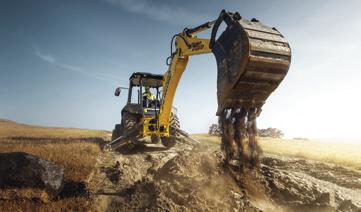
BACKHOE-LOADER SPEC GUIDE
The 2022 Backhoe-Loader Spec Guide
Explore the latest backhoe-loader features and specs from various equipment manufacturers.



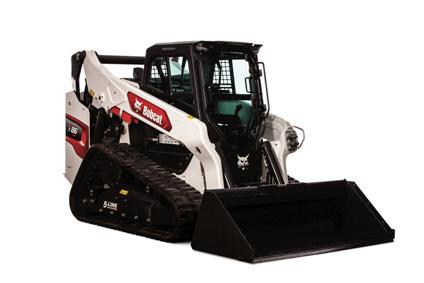
FLEET MANAGEMENT
Construction Equipment and Contractors Aid in Hurricane Ian Disaster Cleanup
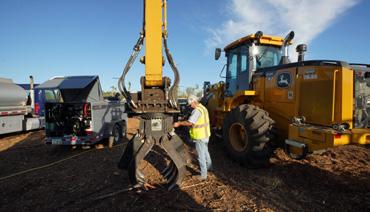
Disasters during the past 20 years have caused more than $1 trillion in damages.
FLEET MANAGEMENT
How Long Should a Hose Last?
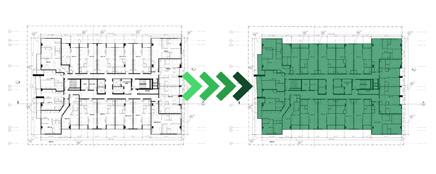
Knowing what can kill your hose is half the battle. Prevention plus proactive care will maximize life and improve bottom line.
FLEET MANAGEMENT Telematics-based Fleet Management Is the New Normal for Aerial Equipment By fine tuning data into workable amounts, aerial equipment fleet managers can use telematics to improve daily operations.
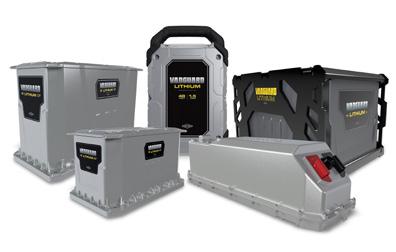

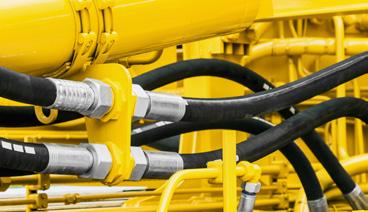
FLEET MANAGEMENT

The Future is Now: Examining Construction’s Power Alternatives It is up to construction industry manufacturers to find ways to lessen diesel’s carbon impact.
TECHNOLOGY How A Kentucky Contractor Punches Their E-Ticket To Success Eliminating trucks waiting at the paver or plant by sending those trucks to another project allows contractors to lay more asphalt. TECHNOLOGY Why Redundancy of Connectivity is Essential on the Jobsite Repetition is key when determining safeguards to keep IoT connections working. TECHNOLOGY How Technology is Increasing Productivity on Jobsites Technology in the form of accounting software, project management software and AI has changed construction processes.
Published and copyrighted 2022 by AC Business Media Equipment Today makes every effort to report manufacturers’ product news accurately, but is not responsible for validity of news claims.
All rights reserved. No part of this publication may be reproduced or transmitted in any form or by any means, electronic or mechanical, including photocopy, recording or any information storage or retrieval system, without written permission from the publisher.
SUBSCRIPTION POLICY: Individual subscriptions are available without charge in the U.S. and Canada to management, engineering, supervisory, equipment maintenance and other personnel who have buying influence in the construction equipment industry. Subscribe online at www.ForConstructionPros. com. Publisher reserves the right to reject non-qualified subscribers.
One year subscription to non-qualified individuals: U.S. $50; Canada/Mexico $70; all other countries $100 (payable in U.S. funds, drawn on U.S. bank).
Single copies available (prepaid only) $10.00 each (U.S., Canada & Mexico), $15.00 each (International). For change of address or subscription information call (847) 559-7598 or fax (847) 291-4816. Equipment Today (USPS 369-290, ISSN 0891-141X) is published is published 12x with issues of January, February, March, April, May, June, July, August, September, October, November and December by AC Business Media, 201 N. Main Street, 5th Fl., Fort Atkinson, WI 53538. Periodicals postage paid at Fort Atkinson, WI, and additional entry offices. POSTMASTER: Please send change of address to Equipment Today, PO Box 3605, Northbrook, IL 60065-3605. Printed in the USA. Canada Post PM40612608. Return Undeliverable Canadian Addresses to: Equipment Today, PO Box 25542, London, ON N6C 6B2.
4 EQUIPMENT TODAY | December 2022 Contents December 2022 | Vol. 58 No. 10www.forconstructionpros.com/equipment Contents www.forconstructionpros.com/equipment
Unlock
Data to Improve Construction Fleet
Telematics
20 23 26 30 32 34 36 38 40 42 December 2022 | Vol. 58 No. 12 PREMIUM CONTENT https://eqtoday.co/9pd73s DIGGING DEEPER PODCAST https://eqtoday.co/s7sfkm VIDEO NETWORK https://eqtoday.co/k2p285 WEB EXCLUSIVES COVER STORY How Compact Track Loaders Get the Job Done Quickly and Precisely Today’s compact track loaders range from supersized to ultra-small, offering new versatility and tech on jobsites. BREAKING GROUND Cat Operator Challenge Offers Fun, Glory for Competitors Operators from Cat dealerships around the country competed at the national challenge in Clayton, N.C. EQUIPMENT
New Product Launches from bauma and more
latest telehandlers, wheel loaders, dozers and
TECHNOLOGY
Hidden
Efficiency with
The construction fleet industry has advanced in ways previously unimagined.
INTRODUCTIONS
The
more.
Proves Enterprise Tech Can Transform Smaller Contractors
Little Dixie
and
Commercial contractor leans on Trimble Viewpoint Spectrum, EquipmentShare, Procore to adopt new project delivery systems
exceed owner expectations.
Prepare
Next Year No matter what size your company is, you have to assume competitors are looking for ways to improve productivity and leave you in the dust.
Training Translate
Real-World Results?
6 8 44 48 49
BRIDGING
GAP Does Simulation
to
Safer, more efficient and cost effective: the ROI for simulation training shows broad benefits to both workers and employers who need skilled people on the job quickly.
New backhoe, compact track, skid steer loaders for the jobsite.
16 25 35 FEATURES 10 DEPARTMENTS Cover photo courtesy Mack Trucks
Tires, batteries, chargers and more to keep a fleet functional. TECHNOLOGY Maps, apps, kits and other tools to supercharge an operation.

Caterpillar Global Operator Challenge
Offers Both FUN AND GLORY for Competitors and Onlookers Alike
Afew days before I left for Munich, Germany to attend bauma 2022, I had the fortunate experience of attending the Caterpillar Global Operator Challenge Regionals in Clayton, N.C. As a fun drone preview video depicted beforehand, the competition featured the widest representation of all the major Cat equipment types: excavators, wheel loaders and backhoe-loaders.
The drone loops overhead and circles around operators, dodges between the spaces between worksites and flits in and out of open equipment cabs, foreshadowing the finesse and precision the competing operators would need to possess at the challenge. The drone buzzes by a woman in an office room, eliciting a particularly humorous tossup of papers and a, “Hey! I’m rehearsing in here!” shout. Watching the preview video left me enthused to attend and witness these best-in-class operators in real time.
Finally, 36 operators descended on the Raleigh area on Oct. 18 and Oct. 20, with intentions of demonstrating their best possible skills. A rainstorm the night before did not dampen the competitive spirit, due to the Edward J. Rapp Customer & Training Center facility team, led by Matt Smith, a Caterpillar marketing leader, laying down gigantic tarps across the competition sandboxes, which the team then weighed down with the competition equipment to prevent the tarps from blowing away. Thus, the demonstration dirt was clean, dry, and ready for digging, compacting and moving on the first day of the competition.
I enjoyed interviewing several of the leaderboard competitors, all of whom said the excavator is their favorite piece of construction equipment to operate. The excavator portion of the challenge was highly technical and specific, requiring exact digging and avoidance of a strategically buried “utility” pipe during operation. The wheel loader challenge proved more flashy, requiring the competitors to cart around a Cat yellow 1980s-era Chevrolet Blazer.
Fittingly, this issue of Equipment Today has a special focus on backhoe-loaders, which were a highlight of the Caterpillar Global Operator Challenge Regionals, as well. Specifically, the competitor needed to cross a deep, pre-dug trench with care and without holding the loader bucket too high. Then, the competing operator had to pluck three sports balls off the top
of orange safety cones—a tennis ball, a basketball and a soccer ball—and deposit them from the loader bucket into a barrel.
One competitor stood out during this challenge, operating with gentle nudges and careful but confident maneuvering –John Schiedeck of Texas, who ended up winning the entire North American eastern regional challenge on Oct. 18.
“The backhoe seemed like 30 minutes,” Schiedeck said, who completed the challenge in well under 15 minutes. “I had to tell myself, ‘Slow down, slow down,’ because I didn’t want to rush it and then mess up.”
Schiedeck owns his own contracting company, Schiedeck Construction, and purchases equipment from Caterpillar dealer Holt Cat in San Antonio, Texas.

“It makes me feel accomplished in my career and it kind of reaffirms what I feel like I can do, you know?” Schiedeck said, expressing gratitude that his wife, children and in-laws could be there to cheer him on throughout the several-day trip to North Carolina.
Schiedeck, along with Matt Ferris of Kinkaid Civil Construction (Empire Cat), the winner of the North American western regional challenge, will compete for the world title at the Caterpillar Global Operator Challenge Finals at CONEXPO in Las Vegas in March 2023. Keep an eye on ForConstructionPros.com/Equipment and our Equipment Today social media accounts for live coverage of the Caterpillar Global Operator Challenge world championships final at CONEXPO! ET
Erica Floyd Editor-in-Chief Equipment Today efloyd@ACBusinessmedia.com

Charles Rathmann crathmann@acbusinessmedia.com

6 EQUIPMENT TODAY | December 2022 ForConstructionPros.com/Equipment
Read more at: https://eqtoday.co/BGDec22
BREAKING GROUND | By Erica Floyd, Editor-in-Chief Equipment Today E @EquipmentToday D @EquipmentToday C @equipment-today-magazine-official Q @equipmenttoday EDITORIAL Editor-in-Chief
Managing Editor
Editor
AUDIENCE Audience Development Manager Angela Franks PRODUCTION Senior Production Manger Cindy Rusch
Art Director April Van Etten ADVERTISING/SALES Brand Director Sean
Sales Representative Nikki
Sales Representative Kris
Sales Representative Tadashi
Sales Representative Kristin
AC BUSINESS MEDIA Chief Executive Officer Ron Spink Chief Financial Officer JoAnn Breuchel Chief Revenue Officer Amy Schwandt Chief Digital Officer Kris Heineman VP, Audience Development Ronda Hughes VP, Operations & IT Nick Raether Content Director Marina Mayer GM, Online & Marketing Services Bethany Chambers Content Director, Marketing Services Jess Lombardo Director, Demand Generation & Education Jim Bagan Director, Enterprise Sales Kay Ross-Baker CIRCULATION & SUBSCRIPTIONS PO Box 3605 Northbrook, IL 60065-3605, Phone: (877) 201-3915 Fax:
circ.EquipmentToday@omeda.com LIST RENTAL Sr. Account Manager
Data
LICENSING
® Published by AC Business Media 201 N. Main Street, Fort Atkinson, WI 53538 (800) 538-5544 www.ACBusinessMedia.com www.ForConstructionPros.com/equipment
A Caterpillar Global Operator Challenge operator demonstrates skills during the eastern regional competition in Clayton, N.C. Erica Floyd
Erica Floyd efloyd@acbusinessmedia.com
Gigi Wood gwood@acbusinessmedia.com Technology
crusch@acbusinessmedia.com
Dunphy sdunphy@acbusinessmedia.com
Lawson nlawson@acbusinessmedia.com
Flitcroft kflitcroft@acbusinessmedia.com
Soma tsoma@acbusinessmedia.com
Pride kpride@acbusinessmedia.com
(847)-291-4816
Bart Piccirillo,
Axle 402-836-2768 | bart.piccirillo@data-axle.com REPRINTS &
Sales Representative Greg Schulz 920-542-1239 gschulz@ACBusinessMedia.com
www.IronPros.com
Cramped, high-traffic jobsites create major challenges. All-new -7 Series mini excavators run circles around obstacles to dig, lift and push productivity to the max.

SCAN THE CODE Learn more about new -7 Series mini excavators.

FEARLESS MOBILITY. POWERED BY INNOVATION.
©2022 Hyundai Doosan
Hyundai
The
Infracore. All rights reserved.
Doosan Infracore is an affiliate of Hyundai Heavy Industries Group.
Doosan trademark, , is used under license from Doosan Corporation.
Doosan DD100 Dozer
The 10-metric-ton DD100 dozers are now available in North America. This machine features a six-way variable angle pitch blade. Customers can choose from two blade options: a standard 2.9 cu. yd. blade or an optional 3.4 cu. yd. capacity blade. Specifications include:
˜ Horsepower (gross): 122 hp (91 kW)
˜ Operating weight: 22,300-24,900 lbs. (10.1-11.3 metric tons)
˜ Blade capacity: 2.9-3.4 cu. yd. (2.2-2.6 m3)
˜ Blade height: 3-ft. 7-in. (1.1 m)
˜ Blade width: 8-ft. 11-in. to 10-ft. 6-in. (2.7–3.2 m)
˜ Blade angle: 23°
˜ Drawbar pull: 35,300 lbf. (16 ton-force)
˜ Tumbler distance: 7-ft. 7-in. (2.3 m)
˜ Travel speed, max: 5.6 mph (9 km/hr)
˜ Dozer cabin is ROPS/FOPS certified
Read more at: https://eqtoday.co/ubm5ld
Takeuchi TB335R
Takeuchi has added the new generation TB335R short tail swing compact excavator to its TB300 Series. This excavator fea tures a rugged interior and exterior design, as well as functions that provide performance on the job site. The TB335R’s short tail swing design results in a rear overhang of only 3.1 in. over the tracks, for working in tight or con fined spaces. The cab model TB335R has an operating weight of 8,310 lbs. (3,770 kgs), a maximum bucket breakout force of 9,127 lbs. (40.6 kN) and a maximum arm digging force of 4,290 lbs. (19.1 kN). The excavator is powered by an EPA Tier 4, EU Stage V emission-compliant engine delivering 24.4 hp (18.2 kW) and a maximum torque of 70.6-ft. lbs. (95.8 Nm). The TB335R offers two working modes – Standard and ECO – allowing operators to match the mode to the task at hand, choosing more power or fuel savings as desired.
Read more at: https://eqtoday.co/wo9els
Caterpillar Lithium-ion Batteries

Caterpillar has announced the development of 48V, 300V and 600V batteries for the off-highway industry. The battery range uses lithium-ion technology and features a modular design for performance and packaging. The development program also encompasses inverters, motors, electronic controls, digital services and other critical technologies to deliver the performance, reliability, durability, maintainability and value needed for equipment buyers working in harsh operating environments.
Read more at: https://eqtoday.co/xqwwlc
Caterpillar D1-D3 Dozers with Operator Assist
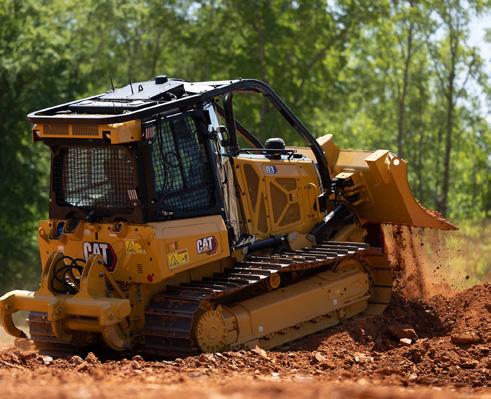
Cat D1, D2 and D3 Next Generation Small Dozers now feature a suite of operator assist technologies focusing on machine performance and efficiency in the field. The technologies offered include Stable Blade Lift and Tilt, Blade Load Monitor, Slow Slip Traction Control and AutoCarry. Today’s D1-D3 dozers also offer a Cat Command for dozing Remote Control (RC) ready option plus include added mounting features and wire harness routing paths for installation of third-party grade control systems. Simplifying training and operator transition from small to medium machines, small dozers now provide a common technology solution with Cat Command on medium dozer models.
Read more at: https://eqtoday.co/ui7hbm
Bobcat Light Compaction Equipment
The full range of Bobcat light compaction products includes rammers, forward plates compactors, reversible plates compactors and trench rollers. The light compaction line can be used in a variety of settings and is designed to meet compaction requirements on jobsites.

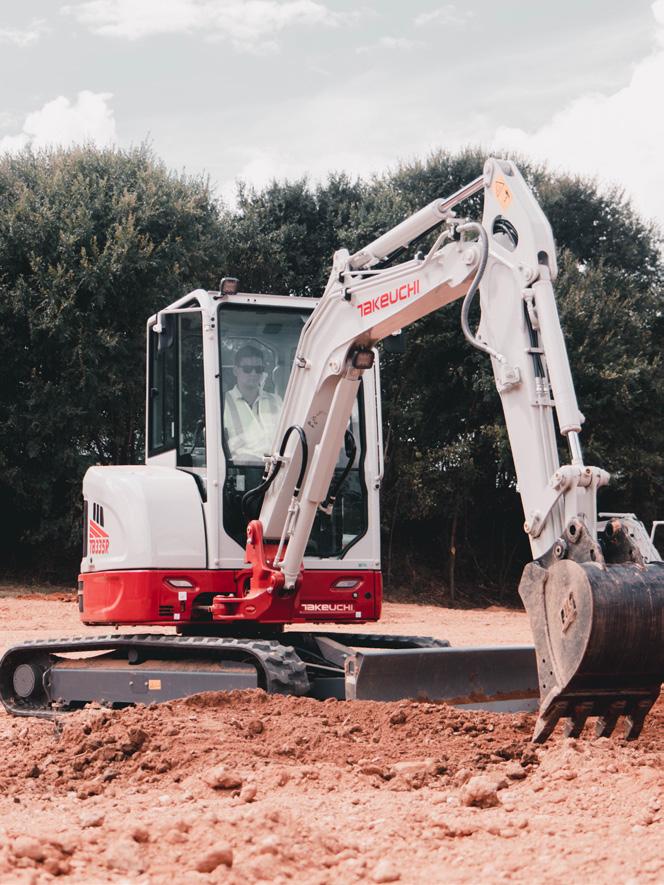
˜ Bobcat rammers (models R60P and R68P)
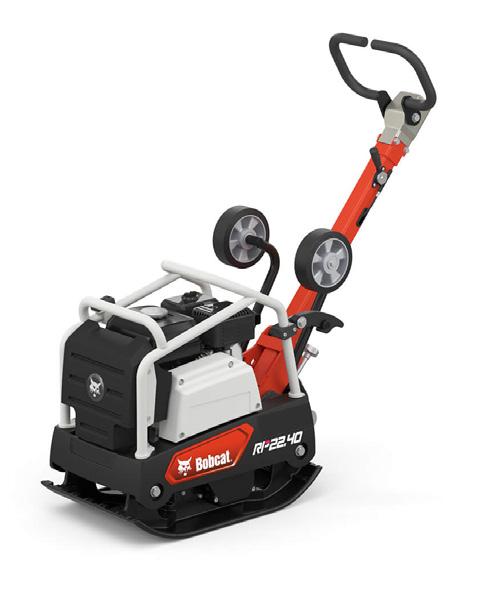
˜ Three Bobcat forward plate compactors (models FP10.33, FP15.40 and FP15.50)
˜ Three Bobcat reversible plate compactors (models RP22.40, RP30.50 and RP49.20D)
˜ Bobcat TR75 trench roller
Each machine within the line possesses different strengths, including maneuverability, power, fuelefficiency and much more. The versatility of this line was thoughtfully crafted with operators in mind.
Read more at:
https://eqtoday.co/9myrx5
Moog Electric Compact Wheel Loader
Moog has partnered with Komatsu to build a fully electric compact wheel loader. The companies are demonstrating the connected and automation-ready, zero-emission, battery-powered machine at bauma 2022. Moog’s machine electrification system includes an electric traction motor, lift, tilt and steering elec tric cylinders, power electronics, system control computer, battery and battery management system. The integrated software acts as the system’s brain to connect and coordinate actions across the machine while the all-electric actuators and motors provide the muscle. Komatsu will provide the vehicle-level design and assembly, including struc tural configurations that utilize Moog’s machine electrification system. The companies plan to jointly test the all-electric loader after bauma 2022 to further prove the concept. Moog’s machine electrifica tion system will help Komatsu control not only the loader’s motion but also its energy use.
Read more at: https://eqtoday.co/da9lal
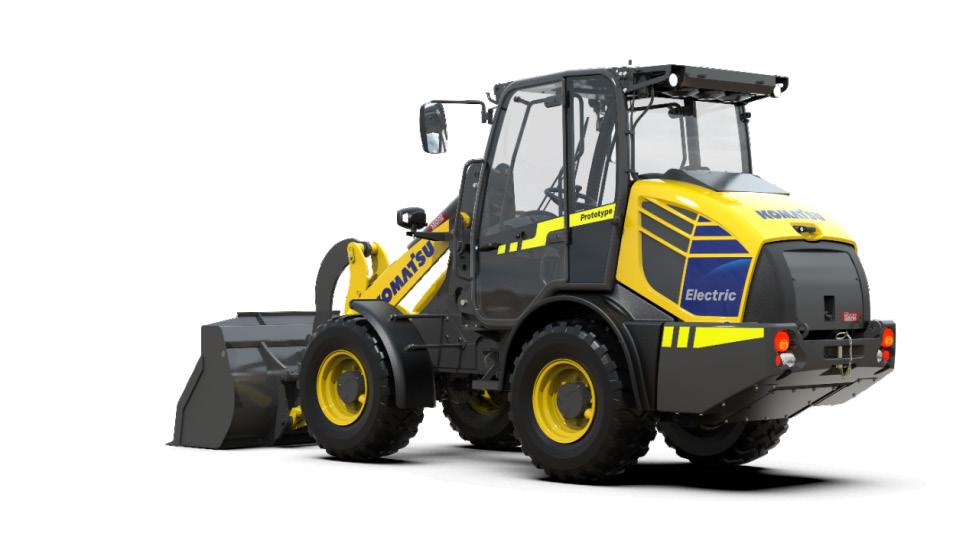
EQUIPMENT INTRODUCTIONS 8 EQUIPMENT TODAY | December 2022 ForConstructionPros.com/Equipment
These pages feature some of the latest equipment available. For more information on these products, use the QR code shown.
Toyota Material Handling 3-wheel Electric Forklift
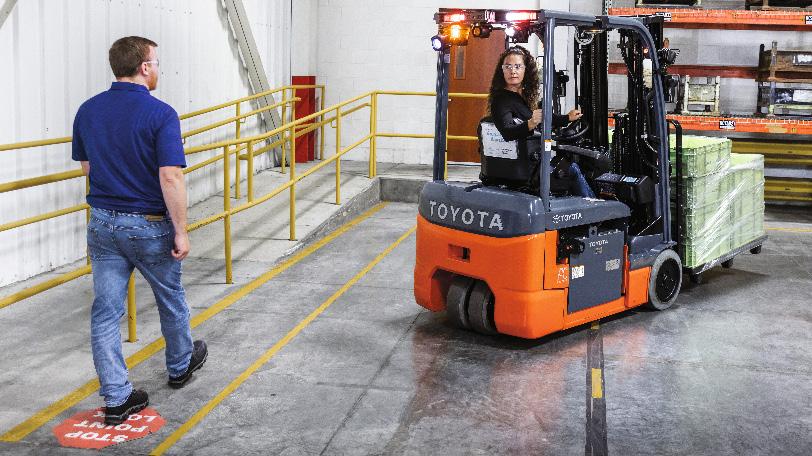
Toyota Material Handling has launched an updated version of the Toyota 3-wheel electric forklift. The updates consist of new features and technology, including ergonomics, operator assist, as well as onboard programming and diagnostics. Automatic Mast Control (AMC) promotes stability of loads and the mast cushioning feature reduces wear and tear on the mast. Base features include 3,000 to 4,000-lb. capacity, an AC drive motor and extended travel times. An optional Toyota lithium-ion battery minimizes maintenance costs and downtime.
Read more at: https://eqtoday.co/aqf8eu
Bosch GTB18V-45 and GCU18V-30
Bosch Power Tools, a manufacturer of power tools and power tool accessories, has announced the launch of a new tool category for Bosch, drywall, with the GTB18V-45 18V Brushless 1/4-in. Hex Screwgun and GCU18V-30 18V Brushless Cut-Out Tool. The cordless tools include the technology for performance in an ergo nomic design for construction sites. The GTB18V-45 18V includes variable speed for controlled operating speed and the GCU18V30 18V includes soft-start technology to reduce startup torque. Both include brushless motor technology to provide the power required when working with and cutting through drywall.

Read more at: https://eqtoday.co/rb52k5
DEWALT Cordless Drill and Hammers
Designed for heavy-duty demolition, concrete and masonry work, the DEWALT 60V MAX 22-lbs. Cordless SDS MAX Chipping Hammer breaks down dense concrete with up to 19.4 joules of impact energy. The midweight 60V MAX 15-lbs. Cordless SDS Max Chipping Hammer delivers up to 10.5 joules of impact energy and is maneuverable for horizontal chipping in upper or lower walls and concrete surface preparation applications. DEWALT heavy-duty Critical Connection Undercut (CCU+) Anchors are designed for critical mechanical anchor connections. The 3/8-in., 1/2-in., 5/8-in. and 3/4-in. CCU+ anchor range combines with Hollow Stop and Undercutting Bits, 60V MAX rotary hammers and dust extractors for an OSHA Table 1-compliant cordless system.
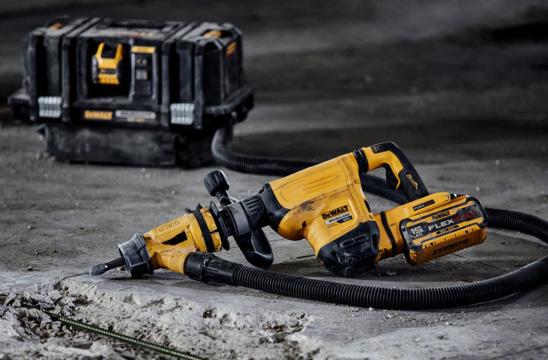
Read more at: https://eqtoday.co/1wposc
Werk-Brau NOX Tiltrotators
Werk-Brau's Nox tiltrotators for excavators attachment provides 360° of endless rotation with a tilt angle of 2 x 50°, allowing versatility with a wide range of attachments. These tools transform excavators into multi-functional carriers that work in deep trenches, under or between existing pipes and tubes and in other confined space applications. Designed for use with fork tines, grabs, grippers, buckets and more, this technology allows operators to complete projects without repositioning the carrier. A range of Werk-Brau NOX tiltrotators are available for excavators in various classes and categories, from 3-25 tons. With integrated hydraulics and no components protruding from the compact design, the risk of damaging hydraulic cylinders, hoses or other components is reduced on the jobsite. An elliptical rotary actuator provides a low overall height and a narrow width with no cylinders. A low-maintenance worm drive is designed for rugged tasks. For safety, the D-Lock coupler locks the front and rear pins and does not require a safety pin.

Read more at: https://eqtoday.co/1jd3x7
Manitou Construction Machines

Manitou Group displayed four new aerial work platforms, rotating telehandlers and a fixed telehandler at bauma. The 200 ATJe roughterrain platform (20m working height) is available with four-wheel steer for maneuverability and a basket that can now take 250 kgs of load, 30 kgs more than on the two-wheel drive version. The range of rough-terrain electric telehandlers also welcomes the160 ATJe and 180 ATJe, with a working height of 16m and 18m respectively; these platforms also see their capacity increased by 50 kgs for a basket that can take a total weight of 250 kgs. There is also a second version named 160 ATJ+ e, with capacity increased to 400 kgs. A range extender solution is also available. The MT 625e electric compact telehandler has a capacity of 2.5 tons and a height of 6m, offers performance similar with the internal combustion version and is the same size. Manitou also presented an electric rotating telehandler models MRT 2260e and MRT 2660e with a loading capacity of 6 tons for a lifting height of 22m and 26m respectively. Manitou launched new modeling tech, as well. Available in French and English in the BIM library via the manitou.com website, BIM architects, modelers and designers can introduce Manitou machines into their work environments during construction projects.
Read more at: https://eqtoday.co/c1z8wg
Merlo TF65.9 Telehandler
Merlo's TF65.9 telehandler is designed for heavy handling, where lifting capacity, combined with engine power, is required. Its maximum lift of 29 ft. handles 9,900-lbs. Its 5 ft. reach can carry 4,400-lbs. without flex. The telehandler, with its maximum operating capacity of 14,300-lbs., maintains a compact dimension (17-ft., 3-in. x 7-ft., 10-in. x 8-ft., 2-in.) during use. The TF65.9 has 4WD with three steering modes, 170 hp engine and the Merlo CVtronic continuous transmission. Merlo's new generation safety system, the ASCS (Adaptive Stability Control System), checks the operating parameters of the telescopic handler in real time and allows the operator to work safely. The exclusive Eco Power Drive (EPD) reduces fuel consumption up to 18% with technology that automatically controls and adjusts the engine revolutions based on operating conditions.
Read more at: https://eqtoday.co/89avxy

EQUIPMENT INTRODUCTIONS December 2022 | EQUIPMENT TODAY 9 ForConstructionPros.com/Equipment
Send a CTL ASAP: How Compact Track Loaders Get the Job Done Quickly and Precisely
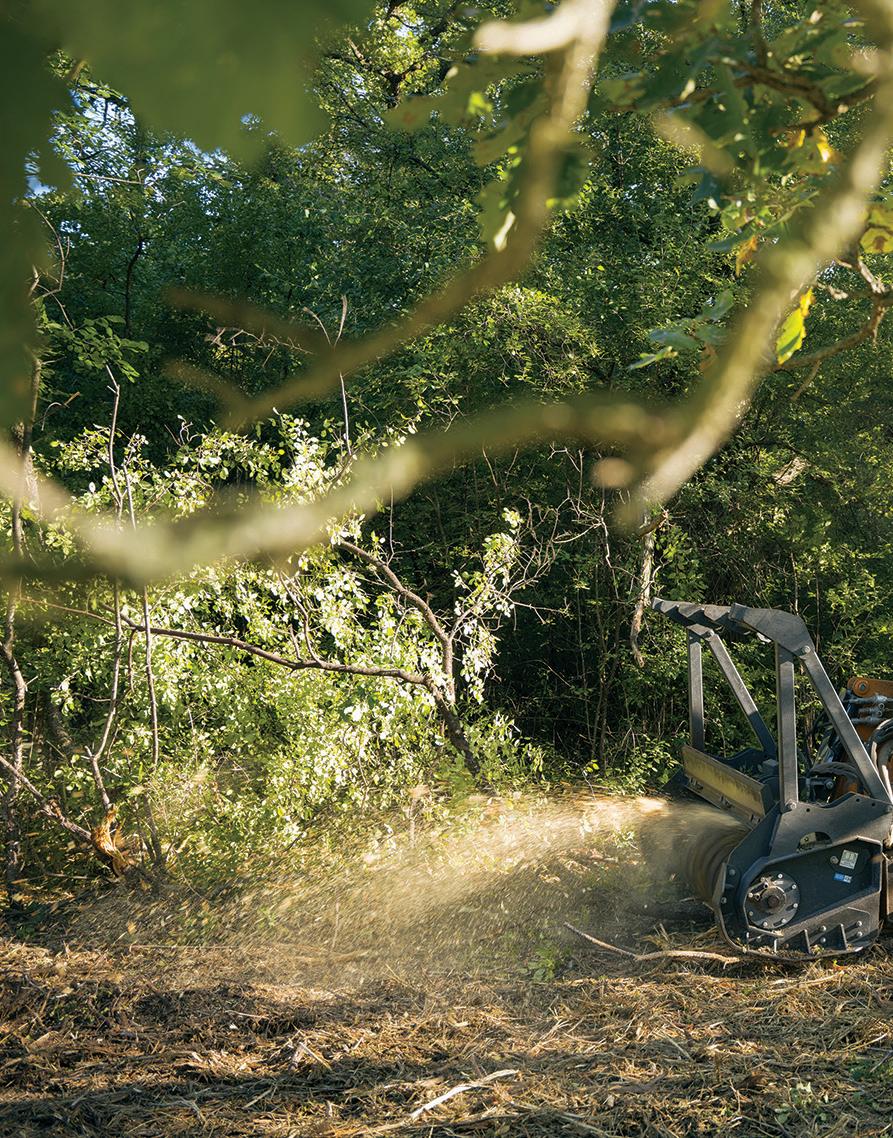
COMPACT TRACK LOADERS EXCEL AT BIG SHOW DEMONSTRATIONS AND EVENTS
I recently watched a Caterpillar operator nimbly zip around a signature construction yellowhued Cat compact track loader to scoop demonstration dirt, deposit it into excavated trenches and circle around the outdoor demo area to hop into a compactor. The compactor then tamped down the soil for the next competitor round at the Edward J. Rapp Customer & Training Center during the recent Caterpillar Global Operator Challenge Regionals in Clayton, N.C. The result was a demonstration area with freshly-compacted earth that appeared to not have been touched by a previous operator.
In yet another controlled environment, a Bobcat operator in Munich, Germany at bauma remote-controlled a Bobcat compact track loader in reverse to set up a new demonstration of the company’s recently launched E19e electric compact excavator.
Both scenarios left me with my jaw on the ground; I was in awe witnessing these compact track loaders transform a ripped up, disheveled demonstration area to a precise, smooth one in seconds.
COVER STORY | By Erica
Editor-in-Chief, Equipment Today
Floyd,
Compact track loaders range from supersized to ultra-small, offering versatility on jobsites on the road to zero emissions.
10 EQUIPMENT TODAY | December 2022 ForConstructionPros.com/Equipment
 The CASE TV620B tackles a mulching task on soft ground in a heavilywooded area.
The CASE TV620B tackles a mulching task on soft ground in a heavilywooded area.
December 2022 | EQUIPMENT TODAY 11 ForConstructionPros.com/Equipment
CASE Construction Equipment
Joel Honeyman, Doosan Bobcat vice president of global innovation, highlighted the features of the new Bobcat T7X all-electric compact track loader at a bauma FORUM presentation in Munich, Germany, on Oct. 28. Bobcat
“The increased flotation pro vided by [Bobcat compact track loader] track systems makes them ideal on a wide range of jobsites with soft ground sur faces such as sand, mud and clay,” said Michael Fitzgerald, marketing manager for Doosan Bobcat. “With their weight dis tributed throughout the track and ground contact area, CTLs can travel across uneven ground more efficiently and are better at maneuvering through softer ground conditions. Additionally, their long ground contact and light footprint make compact track loaders a good fit for level ing work and finish grading.”
legroom and new joysticks were added with the intent to add to operator ease and efficiency.
The SVL75-3 includes a sealed, pressurized, tilt-up onepiece cab design that is new for the Dash-3 generation. The Dash-2 model — the Kubota SVL75-2 compact track loader line — also had a sealed, pressurized, tilt-up design, but it was not strictly a one-piece design, because the floor pan did not tilt up with the rest of the cab.
With the new one-piece design, the whole cab — includ ing the floor pan — now tilts up and out of the way, leav ing an operator with wide open access to maintenance controls and needs. The move to this one-piece design should help by keeping dirt, dust and noise out of the operator’s working environment.
Kubota has also improved heating and cooling performance of its climate control system.
One further benefit of the new design is increased foot room. There are roughly 2 inch es more in the new Dash-3 cab compared to the Dash-2 model.
Plus, Kubota has overhauled its switches and control layout for this new machine. At the head of the armrests are a pair of updated joysticks. Kubota has implemented fingertip control of all major functions and attachment operations for the SVL75-3 into these sticks, which also feature backlit switches for easier identification of functions.
One note on the new joy sticks: while they are standard on the high-flow models of the SVL75-3, they are an upgraded option for standard-flow models.
Along the right side of the cab is the new 7-inch color touchscreen, jog dial and switch layout. The new display can be controlled by touch or via the jog dial near the switch layout and keeps alerts and machine operation statuses like fuel level, hydraulic oil temperature and auxiliary modes at a glance.
The rated operating capac ity at 35% of tipping is up 8% over the Dash-2 model to 2,490 pounds. Rated operating capac ity at 50% on the SVL75-3 is 3,557 pounds.
package and vents hot air out of the side of the machine. It is a smarter variable speed fan than past models. Kubota has designed the fan to turn more slowly in colder weather, allowing for the engine to warm up faster. Additionally, an autoreversing fan is available.
Other new compact track loaders introduced to the market recently include the Bobcat T7X all-electric compact track load er, launched in early 2022, the platinum edition of Bobcat’s T76 compact track loader, launched in fall 2022 and CASE's TV620B compact track load er, launched in late September 2021. The Bobcat T7X was one of the highlights of bauma for our Equipment Today and IRONPROS crews, given that the machine features a heretofore unexplored innovation — the complete removal of hydraulic power.
As someone who is new to the construction equipment industry, I have studied up on terminology, new product launches and equipment func tionalities and features in the past six months. However, noth ing beats the experience of seeing the equipment in action or, bet ter yet, getting in the cab and operating a new machine.
While I did not operate a compact track loader at bauma or the recent Caterpillar Global Operator Challenge Regionals, I did recently get to jump into the cab of the CASE Minotaur DL550 compact dozer load er, a scaled-down dozer with compact track loader features and benefits. Even better, our IRONPROS team got an upclose look at the new Kubota SVL75-3 compact track load er, the next generation of the OEM’s flagship CTL, at Kubota’s latest event in Grapevine, Texas.
THE
NEW KUBOTA SVL75-3
COMPACT TRACK LOADER BOASTS INCREASED CAB COMFORT
The new SVL75-3 is a compact track loader that Kubota declares will impress long-time customers of this popular machine. Updated cab comfort, increased
Access to the cab is improved, thanks to Kubota’s wide entrance and sliding front door design. Beyond entry and exit, the door can be left open during oper ation, and it can be opened regardless of the position of the bucket or loader arms.
This feature is a popular design choice by Kubota, but even so it’s one that much of the rest of the construction equipment industry has not implemented, because a sliding door currently forces manufacturers to place buttons and other controls along armrests. However, Kubota said the company feels that the entry, exit and visibility conveniences afforded by the door outweigh any ergonomic issues that may arise.
Upon entering the cab, it is hard to argue with that logic. The controls are not buried beneath the operator’s arms. In fact, all the needed controls are inches away from the operator during operation.
Bucket breakout force and lift arm breakout force are essentially the same as the previous model at 6,191 pounds and 4,723 pounds, respectively.
At the heart of this machine is a new engine, an updated ver sion of the turbocharged V3307 that can reach higher maximum torque than the version found in the SVL75-2.
Kubota has also made improvements to the cooling sys tem on the SVL75-3. During high-load work, the SVL753 doesn’t require as much fan power to keep the engine cool, allowing that saved power to be used for larger tasks.
The hydraulically-driven fan on the SVL75-3 pulls fresh air in from the top of the cooling
BOBCAT T7X ALL-ELECTRIC COMPACT TRACK LOADER FEATURES NO HYDRAULICS, FOURHOUR BATTERY USE TIME Bobcat’s T7X stands out from the compact track loader crowd because it produces zero emis sions, said Joel Honeyman, Doosan Bobcat vice president of global innovation.
“The additional benefits that operators may not immediately realize is the machine is built for power and ultra-quiet comfort,” he said.
At a bauma presentation in Munich, Honeyman shared that the T7X will provide up to 80kW of power – the equivalent of 107 horsepower – to the drive, lift and tilt functions of the electric compact track loader. The resulting operating costs of the T7X platform are one-tenth of its diesel hydraulic equivalent machine, according to Bobcat.

The Bobcat T86 platinum edition compact track loader excels on grassy sites.
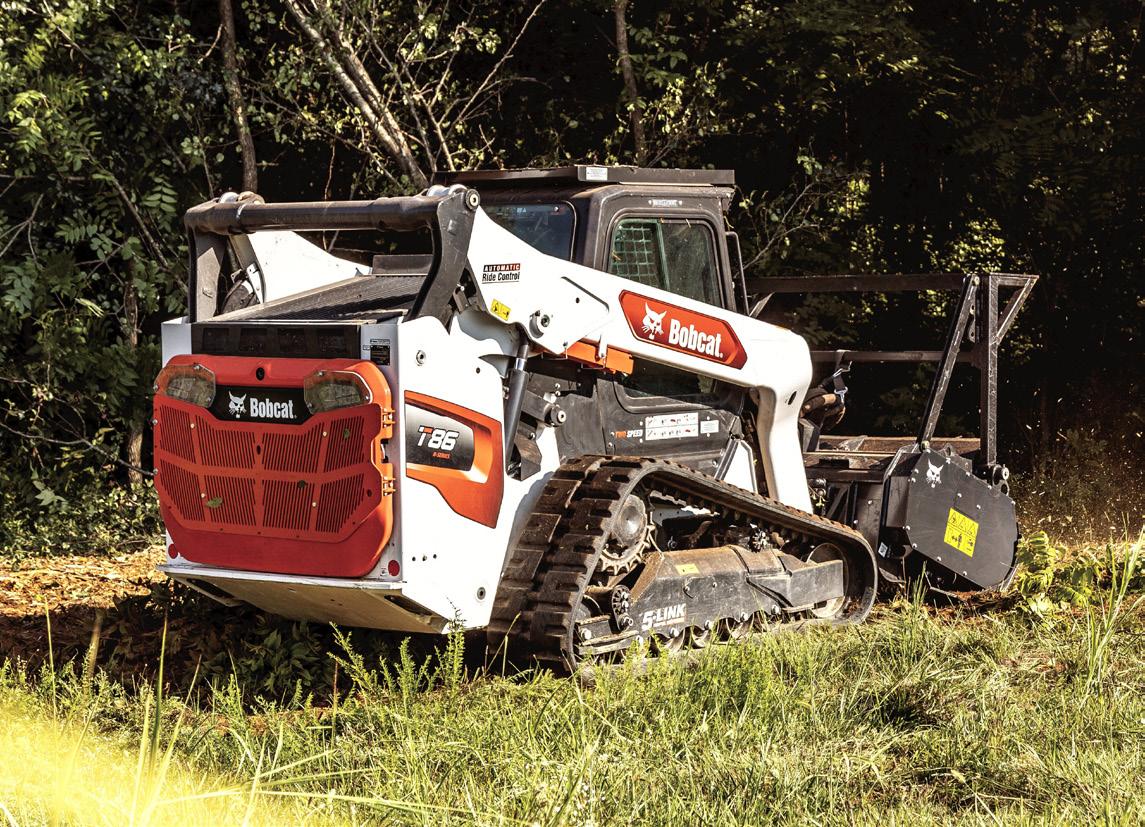
COVER STORY 12 EQUIPMENT TODAY | December 2022 ForConstructionPros.com/Equipment
Company
Bobcat Company
LOADS OF OPTIONS. ZERO COMPROMISE.




You can’t always choose the deadline. But you can choose how you get the job done. That’s why we offer distinct levels of innovation, comfort, and performance to help you get done faster, more efficiently, and on budget.










DEERE.COM/TAKEYOURPICK
Doosan Bobcat partnered with Moog Construction recently to entirely remove all of the hydraulic fluid power systems in the T7X compact track loader prototype development process. Moog replaced hydraulic systems with linear, electromechanical actuators in the Bobcat T7X compact track loader and collaborated with multiple third-battery providers to make batteries for the T7X.
“It doesn’t require much main tenance, maybe every seven years or eight years,” said Aditya Karan Sharma, business development manager for Moog Construction. “If you’re running really hard, then you might need a little bit of components to be replaced.”
Depending on the applica tion, the battery can provide up to four hours of continuous operation or longer during inter mittent use, Honeyman said, allowing recharge with a com mon 220V outlet.
HVAC, 7-inch touch display screen, Bluetooth radio, a heated cloth air ride suspension seat, premium LED lights, a rearview camera installed, the Power BobTach system, 7-pin attachment control, high-flow hydraulics, two-speed travel, dual-direction bucket positioning, automatic ride control and a reversing fan.
“The Bobcat platinum pack age machines were designed for the customer who appreciates the latest and greatest features, along with unique styling to stand out amongst the crowd,” said Rob Otterson, Bobcat vice president of product management.
CASE TV620B COMPACT TRACK LOADER LARGEST EVER BUILT
Launched in late September 2021, the CASE TV620B compact track loader is a 114-horsepower, 6,200-pound rated operating capacity (at 50% tipping weight) machine, and it comes with a 1.25 cubic-yard
that make it extremely versatile,” said Jeff Jacobsmeyer, product manager for CASE Construction Equipment.
CASE will be releasing additional heavy-duty attach ments designed for use with the TV620B and has engineered the hydraulic cooling capacity of the machine to support use of highcapacity attachments.
“The combination of strength, performance and stabil ity of the TV620B is unmatched by any other machine and pro vides a robust platform for working with larger buckets and high-capacity attachments,” MacIntyre said. “Heavy pallets, loading larger trucks, and run ning attachments that require enhanced-high-flow hydrau lics are all handled with ease by this machine. The combination of track-on-ground, hinge pin height and reach at maximum dump height specs really make this a machine designed for load ing trucks of all sizes.”
COMPACT TRACK LOADERS A GOOD FIT FOR A VARIETY OF PROJECTS
Aside from zipping around dem onstration rings and arenas, compact track loaders also per form serious work. From loading yards with potentially soft under foot conditions to a residential site that needs grading, versatility is the name of the game when it comes to compact track loaders.
agricultural, a compact track loader comes in handy on softer ground where pallets need to be loaded and unloaded.
BACKYARD DREAMING: CTLS MAKE WORK ON SLOPED LAWNS SIMPLY A CINCH
In my quest to understand the full range of possibilities of com pact track loaders, I interviewed at least three OEMs, all of which said that CTLs make landscaping projects much easier, particularly on sloped ground and turf.

Because CTLs have low ground pressure, they are better at traveling over lawns and other improved surface areas with minimal ground disturbance, according to Fitzgerald. This can be a significant advantage when projects require travers ing established lawns or other landscaping.
“When working on a “back yard” project, a compact track loader can move materials across the front and side yards with minimal damage to turf and other landscapes, minimiz ing damage and repair costs,” Fitzgerald said.
The T7X is up to 90% more efficient than a simi lar, diesel-powered compact track loader, according to Moog Construction.
“These are highly efficient,” Sharma said. “If you go with a conventional hydraulic pump unit, they are about 30% effi cient. From 30% to 90% efficient is a huge jump, efficiency wise.”
PLATINUM EDITION OF BOBCAT T76 COMPACT TRACK LOADER FEATURES EXTENDED COMFORT AND PERFORMANCE
The Bobcat T76 platinum compact track loader package includes Bobcat MaxControl remote operation, auto throttle, a five-year subscription for Machine IQ, engine block heater, LED side lights, clearsided enclosed cab with auto
heavy-duty bucket designed spe cifically for the TV620B.
“The TV620B is built to simplify heavy work such as cold planing, mulching, heavy material handling and loading high-sided trucks,” said George MacIntyre, product manager for CASE Construction Equipment.
The TV620B offers a selec tion of buckets, including a heavy-duty 84-inch, 1.25 cubicyard bucket with SmartFit teeth, and is designed for use with other heavy-duty attach ments such as mulching heads, cold planers, and the new CASE grading blade.
“The rubber tracks, lower ground pressure and the over all stability it provides are really the core operating advantages of this machine category – matched with hundreds of attachments
“Compact track loaders real ly excel in environments where achieving a lower ground pres sure with your machine is desired. This could be on fin ished turf surfaces so as not to disturb the grass and the ground underneath it, or it could be on jobsites with softer under ground conditions that could bog down a machine with tires,” Jacobsmeyer said. “That’s the beauty of a compact track load er – the tracks help disperse the pressure of the machine to create minimal disturbance.”
Compact track loaders can be doing any number of jobs on a site, the most obvious of which are loading, grading and moving materials, said Jacobsmeyer.
“But these machines are also compatible with hundreds of attachments that allow them to do so much more on site,” Jacobsmeyer added. “A set of forks allow them to unload and move palletized materials.”
From building materials to
“It’s as much about improving performance as it is about mini mizing rework at the end of the day,” Jacobsmeyer added. “The wide tracks and lower ground pressure helps the machine move easily across any number of surfac es, and to do so with stability and confidence — especially on slopes or grades. But that low ground pressure also minimizes the amount of ground disturbance, avoiding the rutting that can sometimes happen when working with a true skid steer on turf or softer surfaces.”
Eliminating rutting is a big plus. “That rutting always has to be cleaned up and returned to the way it was found at the end of the job, which takes up additional time and resources,” he added.
What’s more, according to Jacobsmeyer, landscape attach ments for compact track loaders like lawn preparators help achieve final grade and a great seed bed. Healthy plants, landscaping and spring flowers are all satisfying ways to see the fruits of the operator’s labor.
From muddy sloped ditches to yards that simply need a finetuning, compact track loaders shine. ET
Read More at https://eqtoday.co/Dec22CTLs
COVER STORY 14 EQUIPMENT TODAY | December 2022 ForConstructionPros.com/Equipment
The Kubota SVL75-3 is the company's latest compact track loader. Wayne Grayson

Takeuchi TL6R Compact Track Loader
Takeuchi's TL6R compact track loader is easy to transport and is powered by a Kubota 2.4 L, 65.2 hp engine. The CTL features a radial lift loader design with a maximum lift height of 9 ft., 6.4 in. with a rated operating capacity of 1,841 lbs. The model has a width of 5 ft., height of 6 ft., 5.8 in. and weighs 7,480 lbs. Its canopy is 7,780 lbs. when equipped with a cab. The TL6R features a newly-designed cabin with an overhead 5.7-in. color display and backlit rocker switches, and includes a swing-out door, heat, and air conditioner for greater operator comfort. The TFM telematics system is available during the machine’s warranty period of two years at no additional cost, and it is able to provide a variety of data points including machine health and condition, run time and machine location.
Caterpillar 415 to 430 Backhoe-loaders
The 415, 416, 420, 420 XE and 430 are powered by 70 to 07-net-hp Cat C3.6 Tier 4 Final emission engines.
• Operating weights from 15,246 to 22,355 lbs. with loader lift capacities from 6,730 to 7,230 lbs. and max dig depths from 14 ft. to 15 ft. 2 in.
• 420 XE offers up to 15% more boom lift capacity as well as seat controls that enable Dual mode capability for more efficient machine repositioning
• Electronic loader controls on 420 XE enable selectable parallel lift, programmable loader kickout and return-to-dig on an LCD touchscreen display
• Selectable power management modes on 420, 420 XE and 430 offer the choice of Standard Mode or Standard Plus Mode to maximize backhoe implement speeds
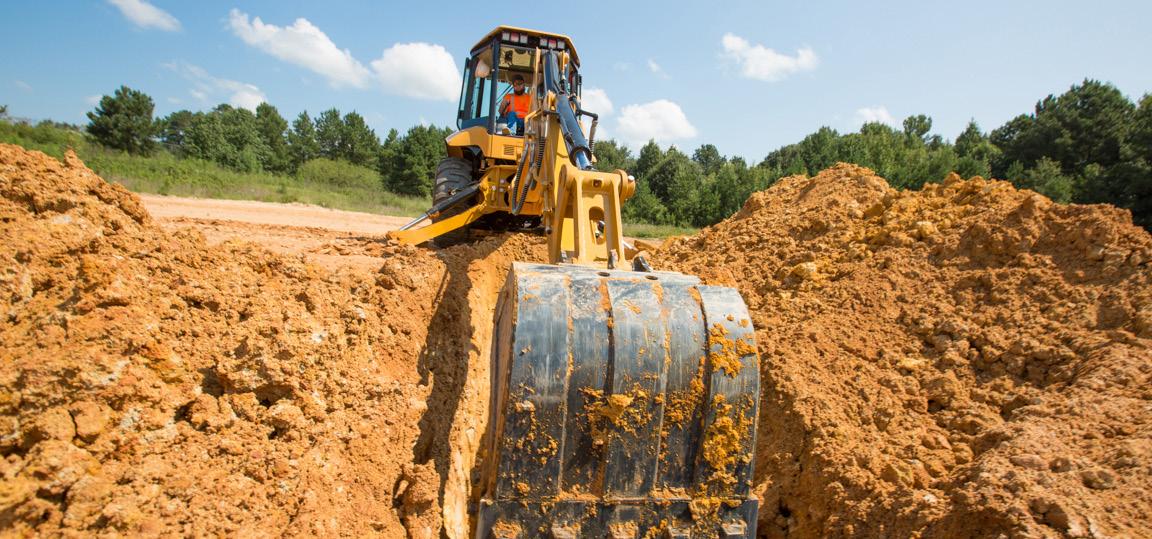



ASV Turf Tracks
ASV offers smooth turf tracks for minimized damage to soft, delicate surfaces. With a combination of greater ground surface area and the performance of ASV’s Posi-Track undercarriage, the turf tracks can achieve equal or better traction than treaded tracks on dry surfaces. This product minimizes damage to topsoil and root systems, allowing for faster job completion in landscape, hardscape and golf course applications. ASV’s green turf tracks have a smooth design and are manufactured from a specialized blend that resists cracking, provides traction and maximizes overall life. The rubber tracks eliminate rusting and corrosion because they contain no steel cords.
Sany SLB95 Backhoe-loader
New Holland B75D Backhoe-loader
The economy class B75D has an 18,298-lb. operating weight and provides over 18 ft. of maximum digging depth.
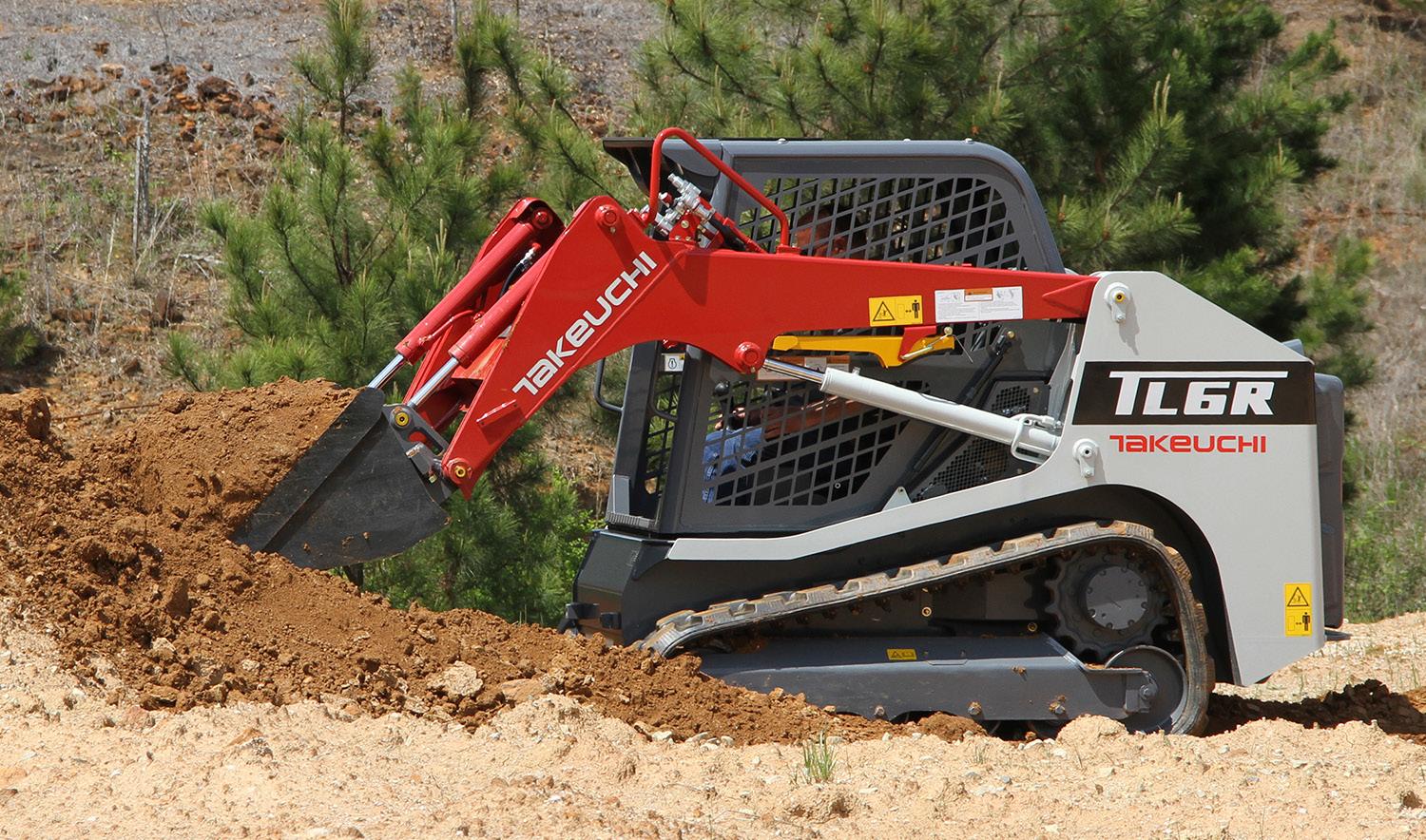
• Standard four-wheel drive and a power shuttle synchromesh transmission with four forward and four reverse gears
• 74-gross-hp FPT 3.4-liter FPT engine features a diesel oxidation catalyst (DOC) with no fluids or diesel particulate filter required
• ROPS/FOPS-certified canopy or optional enclosed cab
• Comes with four front and two rear halogen work lights
• Includes a heavy-duty hydraulic oil cooler and 7-micron, spin-on oil filter
The SLB95 backhoe-loader has a 17,637-lb. operating weight, a 14-ft. 3-in. maximum digging depth and 12,354 lbf. of backhoe bucket breakout force.
• Low-maintenance Deutz TCD3.6-L4 Tier 4 Final engine rated at 95 net hp at 2,200 rpm
• Four-wheel-drive powershift transmission with limited-slip differential for traction
• 41.2-gpm load-sensing hydraulic system with pilot controls and ISO/SAE pattern changer
• Loader includes full float function and return-to-dig
• Auxiliary circuit on backhoe for breakers and other attachments
EARTHMOVING Products 16 EQUIPMENT TODAY | December 2022 ForConstructionPros.com/Equipment
JCB 1CXT Compact
Backhoe-loader

The 1CXT delivers the material-handling and excavating capability of a backhoeloader with the maneuverability and transportability of a compact track loader.
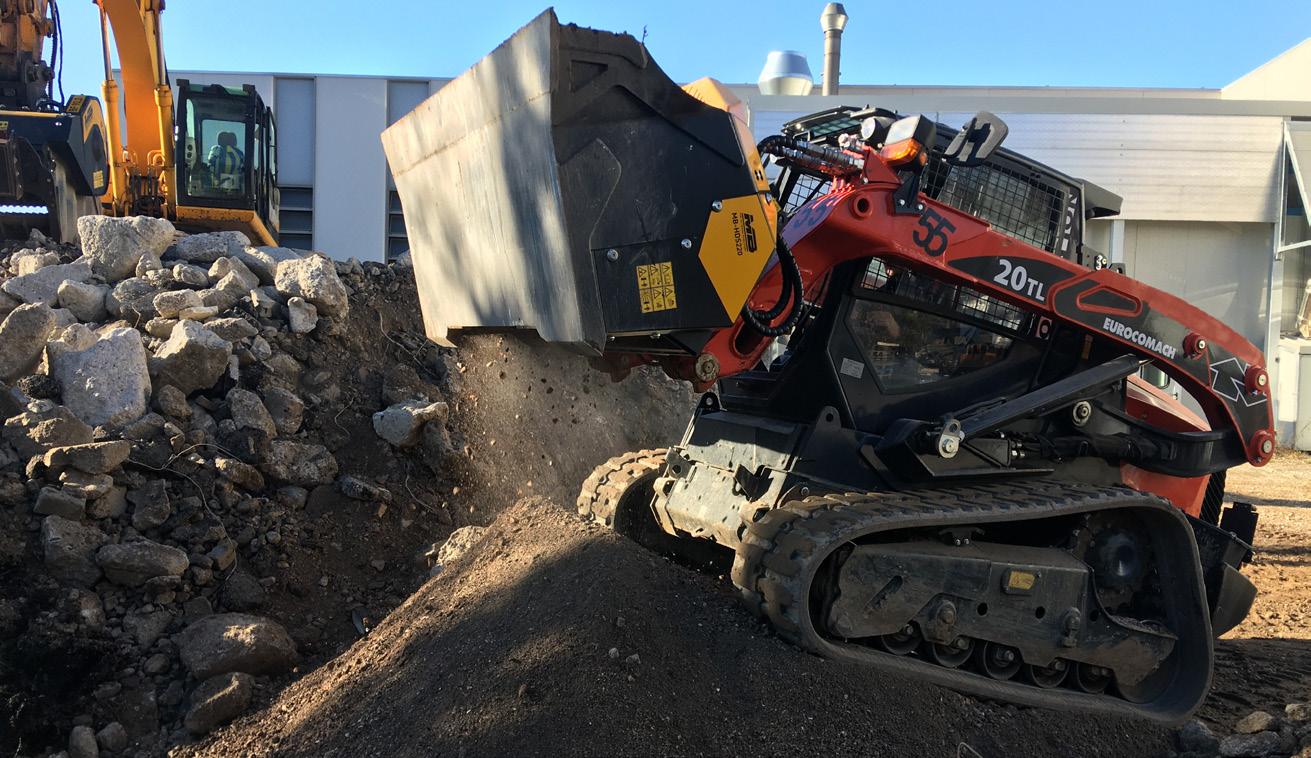
• Measures less than 6 ft. wide and 12 ft. long with a transport weight under 9,600 lbs.







• Delivers a loader bucket breakout force up to 5,180 lbf. and maximum dig depth of 10 ft.
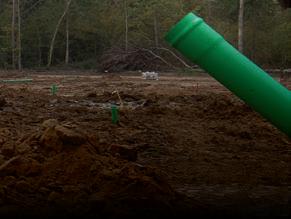
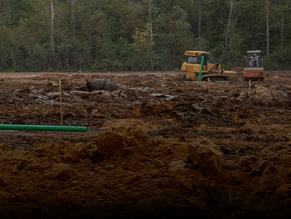
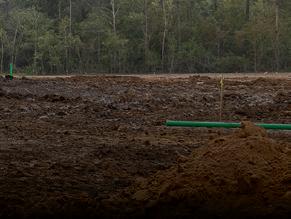

• Tracks enable enhanced climbing capability, pushing power, stability and soft ground performance
• 49-hp Perkins engine with 122 lbs.-ft. of torque requires no diesel exhaust fluid or replaceable diesel particulate filter
• Hydraulic system includes a 24.6-gpm auxiliary circuit capable of powering high-flow attachments
Bobcat T86 and S86 Loaders

Bobcat has launched the T86 compact track loader and S86 skid-steer loader for tough jobs and construction work. Setting the T86 and S86 apart is Bobcat’s Premium Power Performance, a power management system that distributes power on loaders equipped with high-flow and super-flow hydraulics. Each component in the T86 and S86 loaders – including the engine, pumps and hydraulic system – has been engineered to deliver hydraulic performance. Bobcat attachments are engineered to be fully integrated with the carrier’s electronics, hydraulics and geometry. The T86 and S86 can power a wide variety of attachments including those specifically designed for super-flow hydraulics such as super-flow snowblowers, cold planers and forestry drum mulchers.

MB Crusher MB-HDS220
The coupling system promotes freedom of movement of the operating machine. Operators can view the materials during use, as well. As with other HDS models, the MB-HDS-220 allows the rotors to be changed directly onsite by the operator. The bucket facilitates work on construction sites where there is a need to aerate packed topsoil. This includes when a green area, a garden or a flowerbed needs to be landscaped; or when there is a need to reclaim and clean soil from various demolition debris, stones or roots. The padding bucket can also be used to select material for covering pipes or trenches and making the bedding.
Better? It’s something we all strive for. But to be better you must be efficient. Be productive. Be versatile. Be dependable. And you need equipment that supports you every step of the way, no matter how big or small the task. Because good enough is never good enough.
Check out our full line of JCB products at your local dealer or visit JCB.com today.
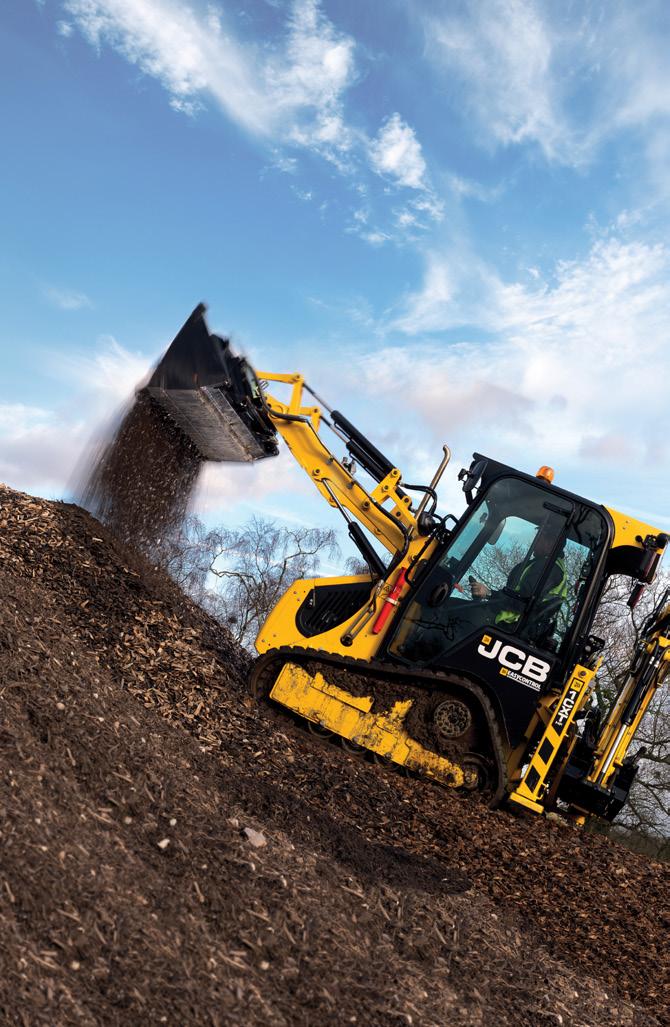

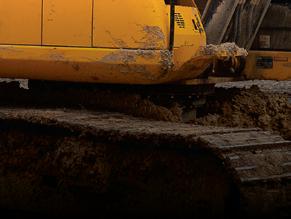

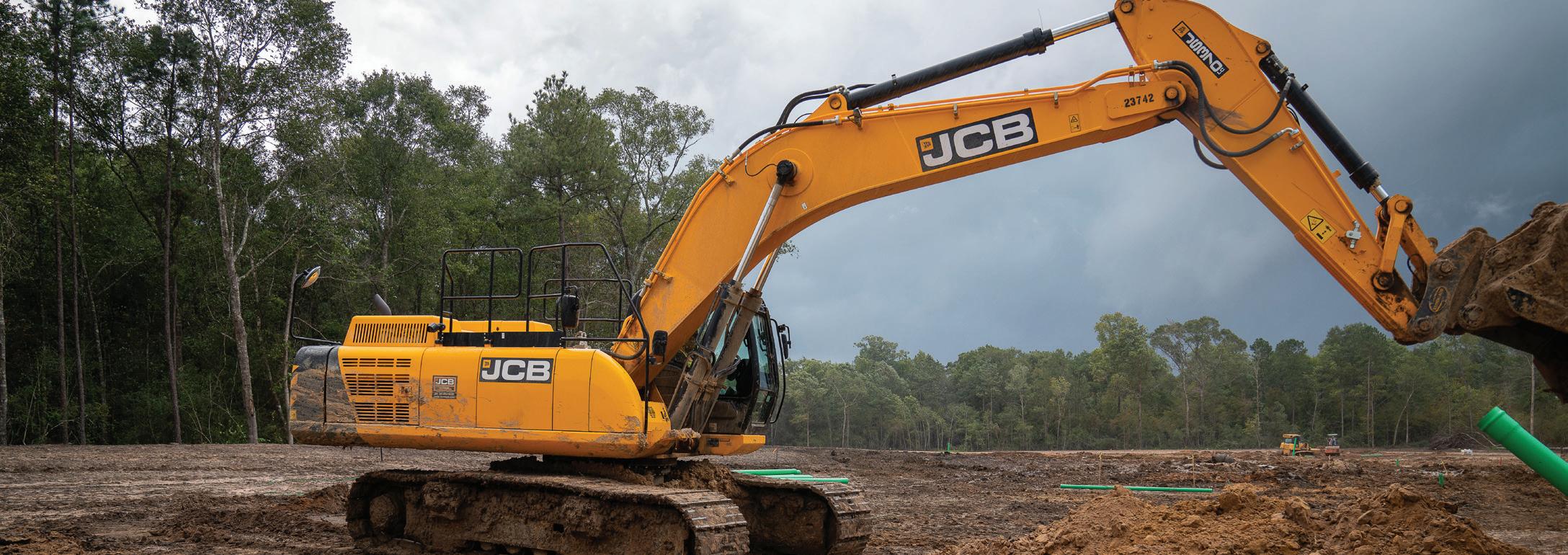
December 2022 | EQUIPMENT TODAY 17 ForConstructionPros.com/Equipment
C
JC BN
M E RIC A JC BN A
JCBNA @J
BN A
ORTHA
www.jcb.com
SHERRY BARKER - CE BARKER
“The best feature of our JCB equipment is less downtime.”
Read More at https://myfc.pro/bthlz0
Bobcat 60 Frame-size R-Series Compact Track Loaders
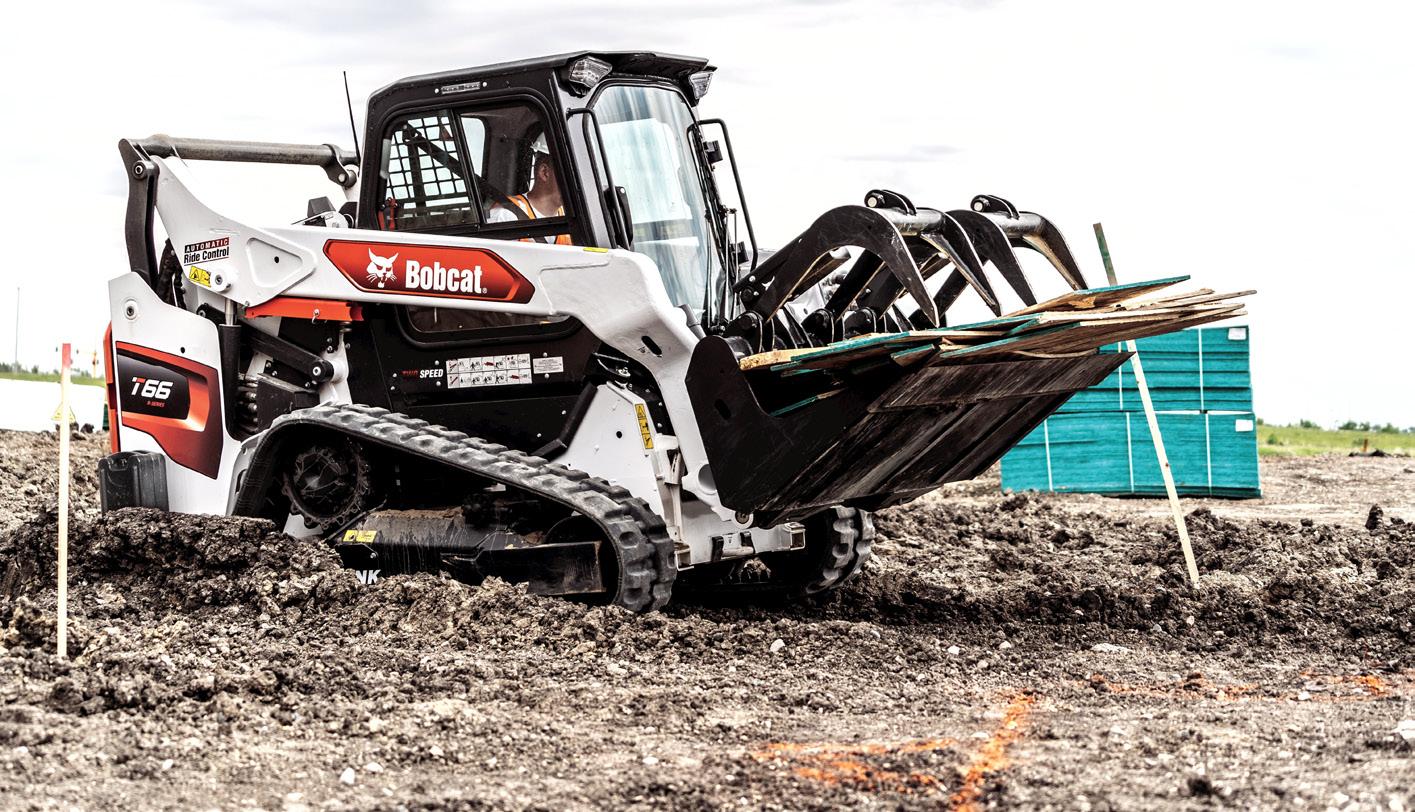

The 8,727-lb. 68-hp T64 offers a 2,300-lb. rated operating capacity, while the 8,927-lb., 74-hp T66 has a 2,450-lb. rated operating capacity.
• Redesigned lift arms with cast steel segments and optimized lift arm linkage provide increased strength and 120-in. lift height to hinge pin
• 17.6-gpm auxiliary hydraulic flow with a 26.9-gpm high-flow option
• Feature a redesigned, no-DPF Bobcat 2.4-liter Tier 4 inline engine design and direct-drive system
• One-piece, sealed and pressurized, roomier cab with standard 5-in. display or optional 7-in. display with Bluetooth, eye-level push-button controls and keyless start and theft protection
• Cast-steel Bob-Tach attachment mounting system

CASE Project Zeus 580 EV Electric Backhoe Loader
John Deere Upgraded L-Series Backhoe-loaders
The L-Series includes engine upgrades, pressure-compensated load-sensing (PCLS) hydraulics on the 310SL and machine control improvements.
• 310L, 310SL, 315SL, 310SL HL and 410L now feature a 4.5L John Deere PowerTech EWL Tier 4 Final engine that boosts horsepower across the models
• Lift mode added to the 310SL, providing up to a 10% to 15% increase in backhoe lift capacity
• AutoShift technology available as a base offering on the 310SL, 315SL, 310SL HL, 410L and 710L
• Optional Auto Ride Control
• 310L EP includes a simpler front-axle design and a four-speed manual synchromesh transmission
The 580 EV (Electric Vehicle) from CASE Construction Equipment is the construction industry’s first fully electric backhoe loader.
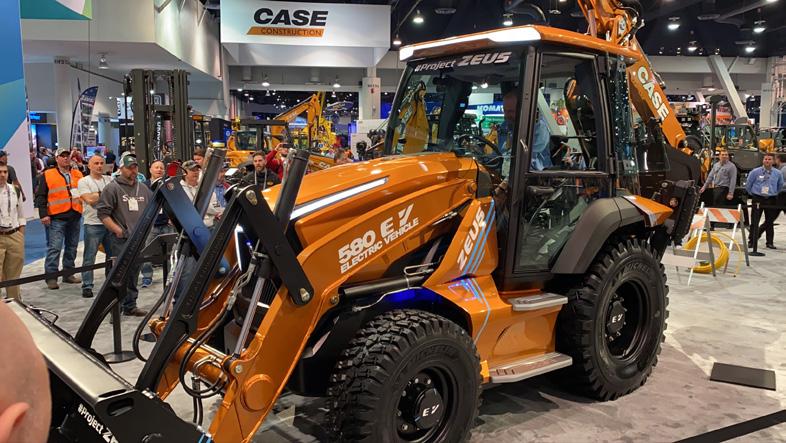

• The power and performance of the 580 EV is equivalent to other diesel-powered backhoes in the CASE product line and provides considerably lower daily operating costs while also producing zero emissions
• Powered by a 480-volt, 90-kilowatt-hour lithium-ion battery pack that can be charged by any 220V/three-phase connection
• Each charge will support most common eight-hour workdays depending on the application

• The battery separately powers the drivetrain and hydraulic motors, resulting in hydraulic breakout forces equal to dieselpowered machines and improved performance during simultaneous loader and drivetrain operation
Ranko VF Venieri Backhoe-loaders
VF Venieri articulated multifunctional backhoe-loaders combine an articulated front loader with Z-bar kinematics and a power excavator on the back with the carry-on system (four wheels equal-size drive).
• Four models range from 8,800- to 21,900-lb. operating weights and offer 52 hp (VF 1.33B) or 106 hp
• Backhoe dig depths from 9 ft. to 19 ft. 8 in. with breakout force from 5,730 to 13,450 lbs.
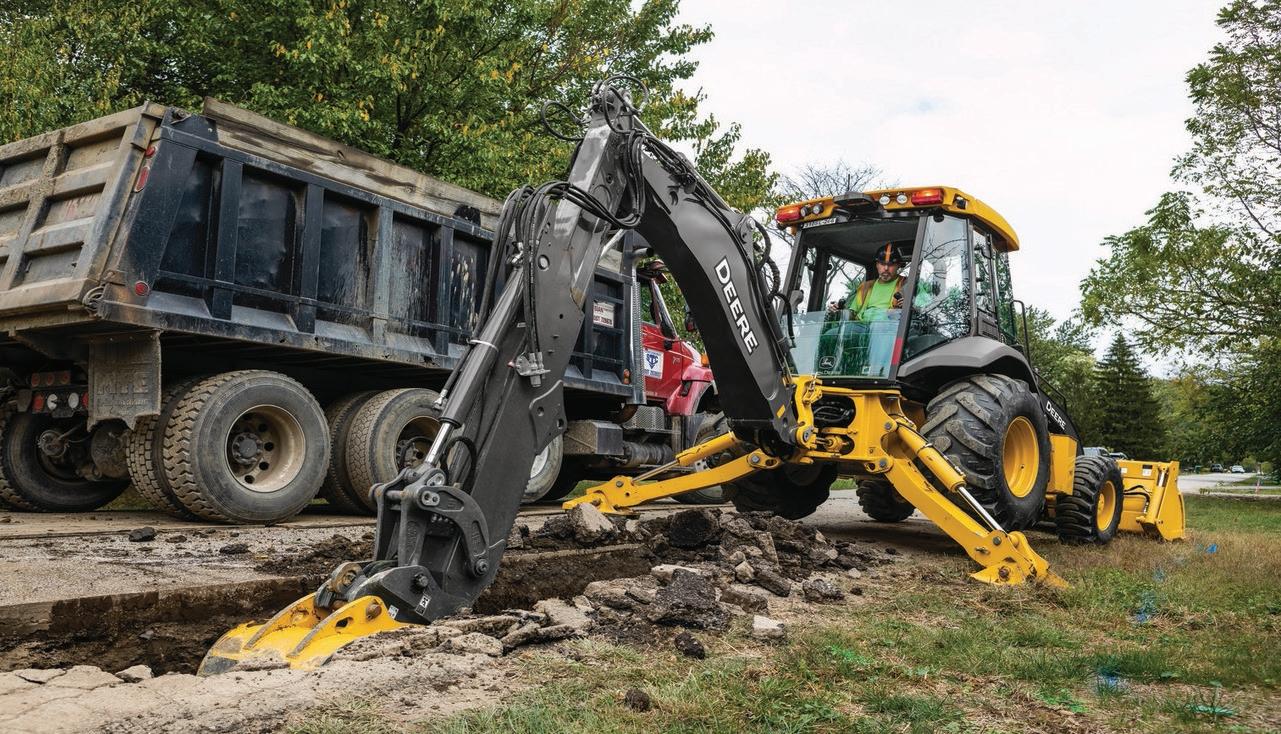
• Loader bucket capacities from .5 to 1.7 cu. yds. with breakout force from 5,600 to 23,800 lbs.

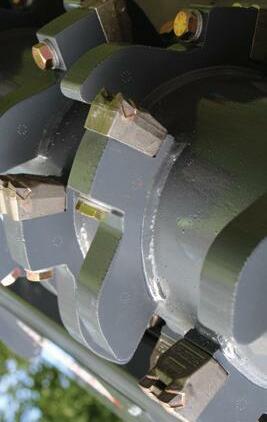
• Hydrostatic transmission enables speeds up to 25 mph
Maximize productivity by not biting off too much, or too little, material at one time. The new Battle Ax rotor has unique depth gauges that optimize the material feed rate for top efficiency.
Thoroughly process material with the exclusive two-stage cutting chamber featuring an adjustable primary shear bar.
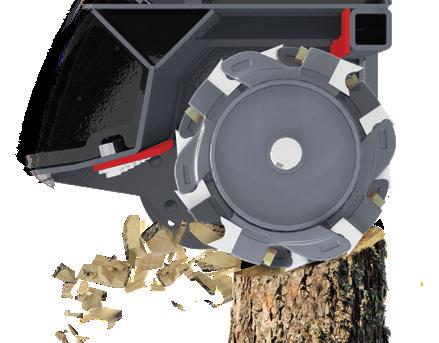
18 EQUIPMENT TODAY | December 2022 ForConstructionPros.com/Equipment DON’T BITE OFF MORE THAN YOU CAN CHEW …OR LESS LOFTNESS.COM Mulching Heads Flail Mowers Mechanical Trimmer LOW AND HIGH FLOW SKID STEERS & EXCAVATORS 10,000 LBS - 88,000 LBS BATTLE
AX TWO-STAGE CUTTING CHAMBER
EXCLUSIVE DEPTH GAUGE DESIGN
EARTHMOVING Products
Prepare for the Future of BACKHOE-LOADER TECHNOLOGIES
Backhoe-loader technologies are advancing fast, and operators must be ready for changes.
As jobsites continue to become smaller and small er, and advancements in hydraulic and engine sys tems occur at an exceedingly fast pace, operators are demanding compact, powerful machines that enable them to complete their tasks as accurately, consistently and quickly as possible.
In response, the construction industry is integrating perfor mance and power into smaller machines that have been creat ed to accept several attachments, thereby enhancing operators’ productivity even on the most demanding jobsites.
One such machine is JCB’s purpose-built 1CXT backhoeloader, which offers operators high efficiency, as it can perform in any type of application, while providing them comfort and ease of use, too. Highly maneuver able as well, the 1CXT also has a universal quick hitch that’s com patible with a majority of skid steer attachments. And it is easy for operators to trailer and tow it, often without a commercial driver's license (CDL), as a result of its compact size and weight.
“Due to its compactness, the 1CXT can also be easily trans ported and operated in confined workspaces,” said Ethan Clowes, product manager, skid steer/ compact track loaders and back hoe-loaders at JCB. “With a standard skid steer hitch, it has a unique front loader design as well, which ensures a 25% great er dump angle and 15% more breakout. Furthermore, for highsided trucks, it has a load over height that’s 8 feet, 8 inches, resulting in smooth loading.”
He added, “With a fully-inte grated side-shift backhoe, the 1CXT can dig close to walls for
Deere's backhoes are focused on providing operators a straightforward way for them to operate their backhoe-loaders in a manner that ensures consistently high performance.

John Deere
ease, too — digging up to 10 feet, 1 inch, with the extend ing dipper option. By offering 12 feet, 10 inches of groundlevel reach, the backhoe-loader allows operators to improve pro ductivity by also enables users to maximize their productivity by minimizing their need to reposi tion it.”
Despite its compactness, the 1CXT has a spacious cab that ensures operators are comfortable. It also has ergo nomically-designed controls that reduce operators’ fatigue. And it requires less downtime than other backhoe-loaders, as its engine has a 500-hour service interval.
Of equal importance, it offers operators a wide, one-piece engine cover, too, as well as removable side panels that provide them fast, ground-level access to daily check points and routine service items.
Featuring a side-mounted, 11.9gal. fuel tank, the 1CXT can be used for long working stints and easily refueled, as it has a long filler neck that decreases the likeli hood of spillage.
“In addition, the 1CXT has an innovative side-door entry and all-round visibil ity — through the cab’s large, laminated front window and toughened glass,” Clowes said.
There are a number of updat ed technologies on backhoe loaders that are improving opera tions for contractors.
TECHNOLOGY OFFERINGS POSITIVELY IMPACT BACKHOELOADERS
Aside from the 1CXT, a variety of other backhoe-loader tech nology offerings also stand out, including those that improve precision and stability during loader applications (like selfleveling and ride control) and those that enhance power deliv ery whenever necessary (such as power lift and power boost). Pilot controls and loader arms, along with the designs of loaders’ backhoes themselves, are present ly standing out, too.
According to Ryan Anderson, product marketing manager for backhoe-loaders, New Holland
Construction, pilot controls, par ticularly on backhoe-loaders like the company’s D Series, utilize a variable displacement pump, lead ing to more controllability for operators. Since they’re consid ered a “hydraulic over hydraulic” design, pilot controls also provide operators more functionality for precision digging.
“An example of this would be precision swing control, which prevents backhoe arm movement and shaking when operators dig and unload the bucket to a pile,” he said. “This stops unwanted material from spilling back into the excavated hole, or adds an extra level of precision when oper ators place loads like wall blocks.”
Moreover, pilot controls offer operators features like return to dig and ride control — features that, according to Anderson, are critical for ensuring back hoe-loaders are as productive as possible throughout the materials handling process. In the mean time, current backhoe-loaders have straight or curved loader arms, too, each of which per forms differently for different reasons. For instance, straight loader arms provide operators two main advantages: improved lift capacity and higher visibil ity to the loader bucket. Curved loader arms, on the other hand, offer an enhanced bucket break out force, along with a more
20 EQUIPMENT TODAY | December 2022 ForConstructionPros.com/Equipment
EARTHMOVING TRENDS
precise placement of loads as operators utilize them since curved loader arms are closer to backhoe-loaders than straight loader arms are.
“Concerning backhoe design, operators can utilize internal and external slide hydraulical ly-extendable dippers (HEDs),” Anderson said. “Internal slide HEDs like New Holland Construction’s offer high lift capacity with the dipper, as well as less wear and tear on the HED itself since debris, dirt and rocks aren’t able to fall into the sliding mechanism. To compare, exter nal slide HEDs provide more versatility for hydraulic thumb placement on the dipper though.”

Electro-hydraulic seat-mount ed control systems also stand out presently, particularly those that are provided with Caterpillar’s 420 XE, 440 and 450 backhoeloaders. Rather than providing operators two sets of controls — one for the loader and one for the hoe — the electro-hydrau lic seat-mounted control system ensures one pair of joysticks is mounted to each backhoeloader’s seat instead. This pair of joysticks will also travel with operators as they turn from the front to the back and from the back to the front.
“The technology behind the control offering provides a feature known as ‘Dual Mode’, which allows operators to manipulate or control the implement he or she is not facing,” said David Young, product application specialist, Caterpillar. “For example, if an operator is facing the hoe, they
Caterpillar is focused on continuing to build upon its electro-hydraulic platform, regarding the 420 XE, 440 and 450 backhoe-loaders that presently utilize the electro-hydraulic seat-mounted control system.
can use the feature to change the RH joystick so that it becomes the loader control, thereby enabling the operator to reposi tion much more efficiently while running the hoe.”
He continued, “Likewise, operators can be faced forward and use the ‘Dual Mode’ fea ture to control all functions of the hoe. Lastly, the feature also allows operators to dig with the hoe anywhere in the swing arc of the loader’s seat. So, at any point between being latched forward or rearward, operators can use both implements.”
John Deere Construction Equipment, in the meantime, also has various current back hoe-loader technologies that particularly stand out. After all, according to Justin Steger, solu tions marketing manager at John Deere, the company’s back hoes are especially focused on providing operators a reliable, straightforward way for them to operate their backhoe-loaders in a manner that ensures consis tently high performance.
To do so, the company offers operators the John Deere PowerTech EWL engine, which eliminates any necessity for a
diesel particulate filter (DPF) and exhaust gas recirculation (EGR) system. Utilized for four models of John Deere backhoe-loaders — the 310L, 310SL, 410L and 710L — the engine has more reliability than previously released engines, as well as enhanced torque and a 3% to 7% increase in net horsepower, improvements that underground utility opera tors will especially notice.
Additionally, the 310SL, 410L and 710L models of backhoe-loaders utilize pres sure-compensated, load sensing (PCLS) hydraulics, which pro vide improved multifunctioning, smoother machine control and up to 15% higher craning capac ity, via Lift Mode, than other hydraulics released by the com pany in the past.
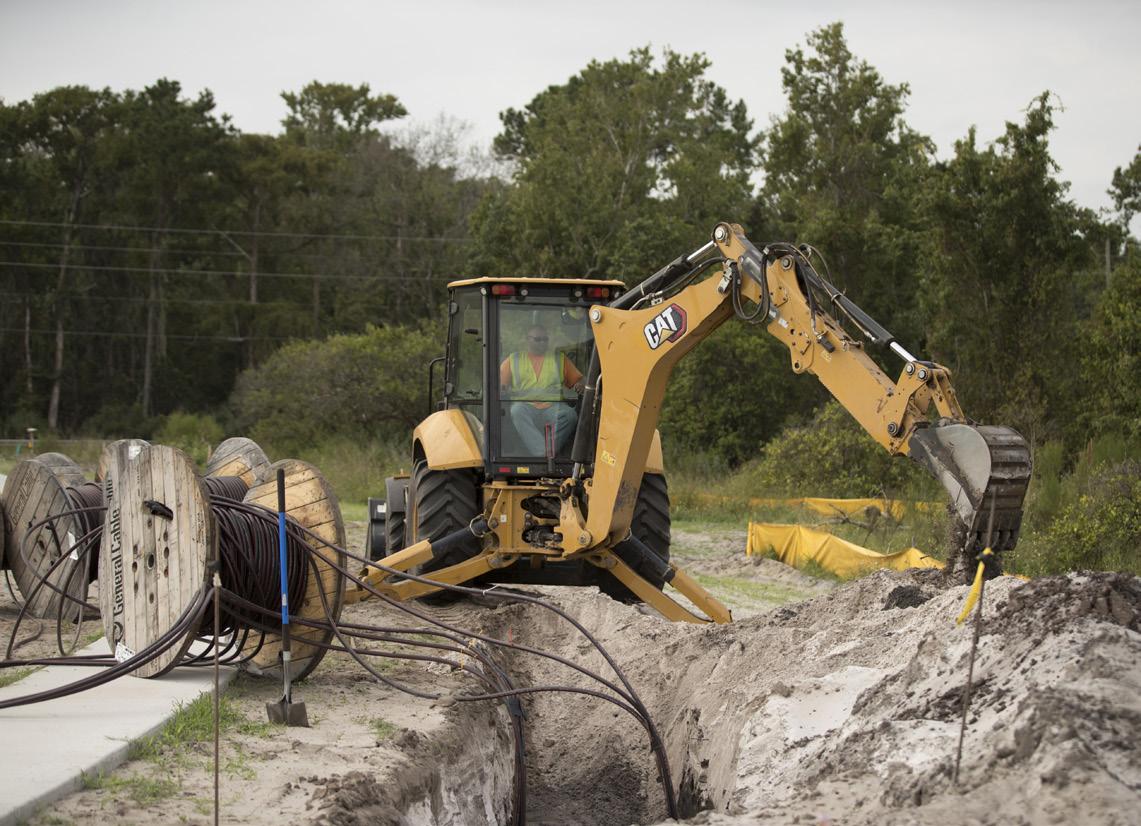
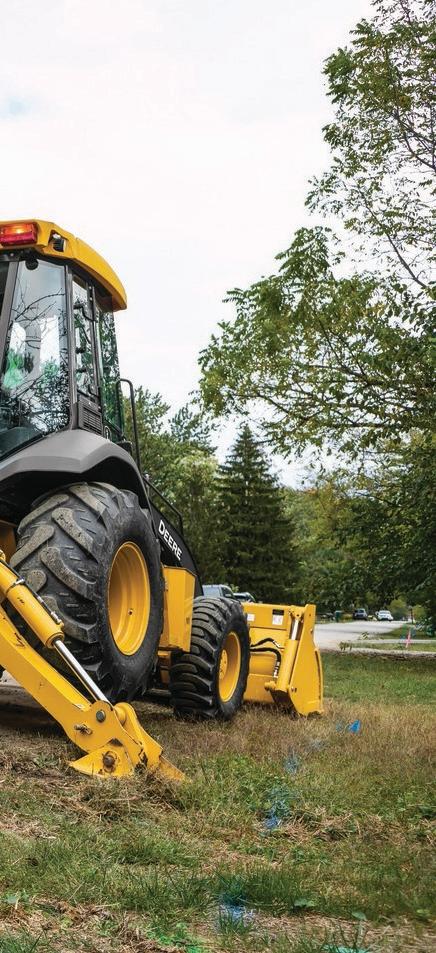
“Collectively, the John Deere PowerTech EWL engine and the PCLS hydraulics offer operators distinct customer experiences, along with high machine reli ability,” Steger said.
Stressing that “John Deere is committed to developing innovative, robustly tested and reliable equipment” for its cus tomers, the company is, in turn, focused on “unlocking
ops products that meet those needs,” he said. “To do so, at this moment, John Deere is focused on its electric backhoe proto type, too, and is continuing its product testing and development process.”
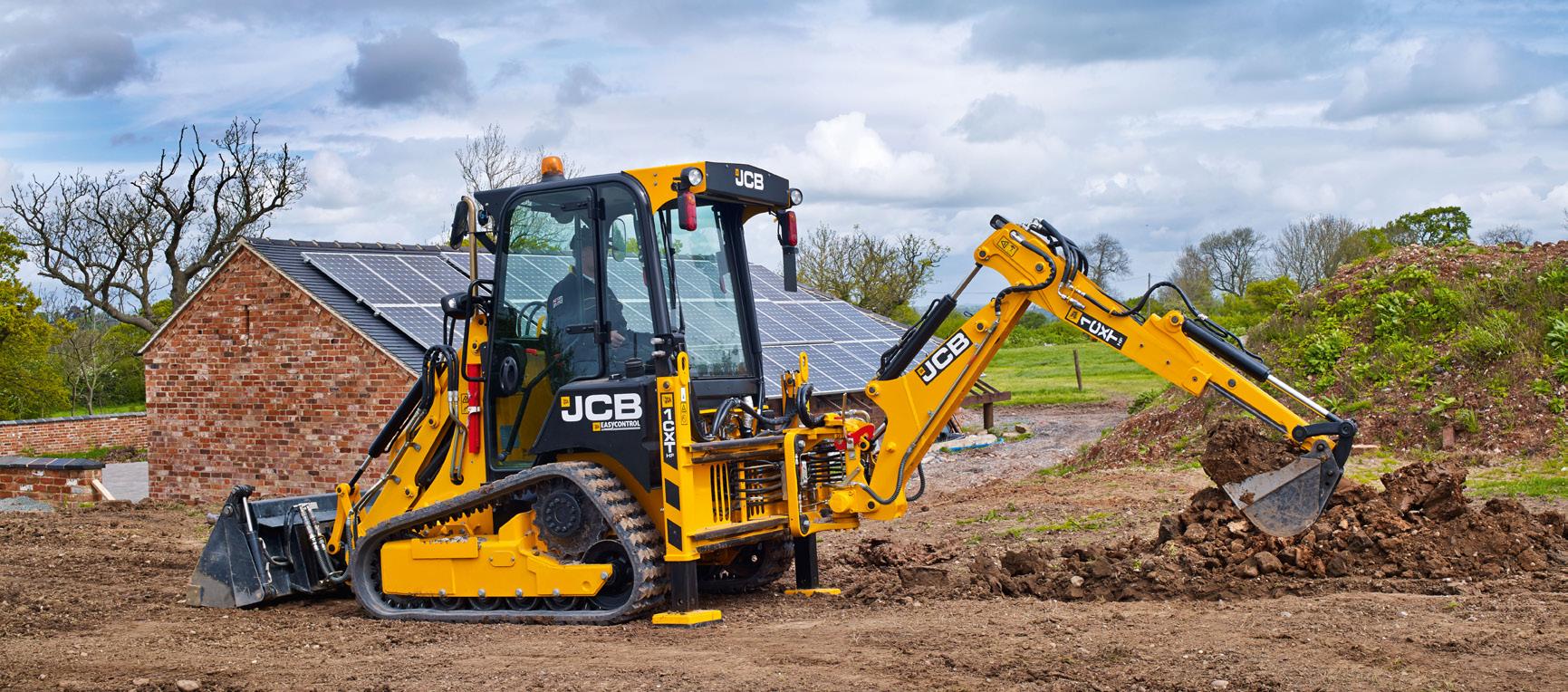
BACKHOE-LOADER MANUFACTURERS FOCUS ON THE FUTURE
In preparation for the future, JCB is focused primarily on sus tainability, first and foremost.
“It’s no surprise to any in the industry that the next progression of backhoe-loader technology is tied directly to sustainability efforts,” Clowes said. “How can we look after the planet, while providing the same performance, safety and efficiency for which we are known? In short, how can we find a better way of getting the job done as a manufacturer, as well as machine operators?”
For answers to these two questions, JCB has introduced innovations that are focused on hydrogen engines. In par ticular, the company’s hydrogen combustion engine — the con struction industry’s first-ever hydrogen engine — enables its advanced engine technology to be utilized for decades to come. Yet, at the same time, due to the potential of completely renew able hydrogen fuel, the engine may possibly have zero-carbon emissions one day, too.
“The hydrogen combustion engine is an example of JCB accepting today’s challenge for tomorrow,” Clowes said. “When
December 2022 | EQUIPMENT TODAY 21 ForConstructionPros.com/Equipment
Caterpillar
JCB’s 1CXT backhoe-loader, which offers operators efficiency, can perform in any type of application, while providing them comfort and ease of use. JCB
AdobeStock/WinaiTepsuttinun
New Holland Construction's pilot controls, particularly on backhoe-loaders like the company’s D Series, utilize a variable displacement pump, leading to more controllability for operators. New Holland Construction
we consider replacing fossil fuels with a zero-carbon alternative that still allows heavy machines to do heavy work for up to 12 hours each and every day, it’s obvious that batteries aren’t practical for machines with high power demands and remote jobsites.”
He added, “Additionally, the weight, cost and charging time are prohibitive to the uptime and performance that operators expect out of a backhoe-loader.”
Thus far, JCB has produced a prototype backhoe-loader that utilizes the hydrogen combustion engine. According to Clowes, “it can do everything that its dieselpowered equivalent can do.” One key difference has been observed though: the hydrogen-powered backhoe-loader doesn’t emit any carbon dioxide at the point of use, as only steam is emitted from its tailpipe.
Alongside sustainability, there are four other driving factors for future technological enhancements, according to Anderson — a decline in risk, higher precision, more comfort and increased safety.
A John Deere-developed, batterypowered and electric vehicle design, the concept, known as E-Power, will mainly target the company’s diesel-powered, 100 HP 310L Backhoe’s ease of operation and performance level.
various suppliers, in order to acquire highly-advanced lasers and receivers, including 2D selfleveling lasers and magnetized receivers. Providing highly accurate results, they can also be effortlessly installed and used in a straightforward fashion.
For safety, the company may eventually offer enhanced camera visibility around each of its backhoe-loaders, too. Much like customers in the automotive industry, customers within the equipment industry desire to have bird’s eye, 360° views around their machines. As a result of this potentially improved visibility, customers will be able to operate their backhoe-loaders more safely than before. Furthermore, they’ll be able to minimize the risk of damage to their machines and property, while also decreasing the injuries of people who utilize them or are near them.
“The same comfort, visibility and safety features that operators have grown comfortable with in today’s cars, trucks and other motor vehicles will soon be available in New Holland Construction’s construction equipment,” Anderson said. “Operators’ abilities to confidently maneuver their backhoe-loaders around their jobsites without having to worry about damaging their equipment or jobsites — while also keeping their team members safe — will pay dividends in the form of less fatigue, less expenditures for their employers and better overall productivity.”
ELECTRIFICATION IS THE NAME OF THE GAME
— Ryan Anderson, product marketing manager for backhoeloaders, New Holland Construction
“For advancements in precision, 2D laser tools are becoming a staple in the backhoe-loader market,” Anderson said. “The usage of lasers and receivers in precision excavation and grading are proving to be the next level of profitability and productivity for backhoe-loader operators.”
With this in mind, New Holland Construction utilizes
Meanwhile, Caterpillar is focused on continuing to build upon its electro-hydraulic platform, regarding the 420 XE, 440 and 450 backhoe-loaders that presently utilize the electrohydraulic seat-mounted control system. To achieve this goal, it is primarily interested in developing features that are generally found on excavators and loaders.
“On the hoe side, this would mean features like e-fence,
e-ceiling and swing limits,” Young said. “On the loader side, Caterpillar is looking at payload measuring, as well. In addition, the incorporation of grade control is on the table.”
As Caterpillar prepares for these future technology advances, the company is especially focused on efficiency and performance.
“These types of advanced fea tures are being implemented with the following goals in mind — ensuring your backhoe-loader works faster, safer and at a higher level of quality than in the past,” he added.
John Deere, on the other hand, is preparing for the future by working with National Grid, an electricity, natural gas and clean-energy delivery company. By doing so, it will joint test an electric backhoe concept. A John Deere-developed, battery-pow ered and electric vehicle design, the concept, known as E-Power, will mainly target the company’s diesel-powered, 100 HP 310L Backhoe’s ease of operation and performance level.
“The design is intended to provide substantially lower daily operating costs, along with enhanced machine reliability, lower jobsite noise and zero tailpipe emissions,” Steger said. “Currently, the electric backhoe concept is only being field tested, as it is not yet available to purchase.”

The E-Power backhoe has been created to perform the same operations and run the same attachments as a conventional diesel engine-powered backhoe — without sacrificing any of its versatility.

“Increased versatility comes in the form of customer and job site requirements, which, in the future, may drive the need for an E-Power backhoe,” he said. “Companies and jobsites are striving to improve sustainabil ity, too. The decarbonization of their fleets’ equipment could be a large component of their sus tainability efforts.”
He added, “By testing the backhoe during Phase 1 now, John Deere will be positioned to develop it in the future and, consequently, meet customers’ needs, concerning lower daily operating costs and jobsite noise, as well as enhanced machine reliability and a considerable decline in tailpipe emissions.”
Along with testing the E-Power backhoe, John Deere is also preparing to showcase new
performance-tiering models of backhoe-loaders at CONEXPOCON/AGG next year. For example, the 310L EP is transi tioning to the rugged 310 G-tier, while the 310SL and 310SL HL are transitioning to the 320 P-tier and the 320 P-tier with a heavy-lift option, respectively. In preparation for these transitions, the 320 P-tier’s engine horse power is set to increase, as well.
While looking ahead to the future, Clowes predicts a back hoe with zero emissions at its point of use will eventually be released. After all, a majority of backhoes are used in cities and towns, many of which have committed to becoming carbon neutral in the future, according to Clowes.
Anderson, meanwhile, adds that alternative fuels are at the forefront of product development for virtually every manufacturer at this time. For example, electric power is the most popular manufacturing trend in the construction industry — even more popular than liquid propane, methane and natural gas, according to Anderson. As a result, more equipment and vehicle manufacturers are responding to this trend, offering more electric vehicle options than ever before.
“Electric vehicle options will continue to expand as battery technology evolves,” he said. “Alternative fuels are impacting operators directly, too, as battery technology is going to be the most important factor in the growth of electric equipment and vehicles.”
Two key considerations stand out, in regards to alternative fuels: performance and run time, as batteries must work harder and longer than they ever have.
“With this in mind, the con struction industry will continue to notice more electric vehicle options start popping up in the future, especially as battery tech nology improves,” Anderson said. “There is no question about it. Construction operators must prepare for a future of electrifi cation, as the current movement will likely become a reality one day — across the construction industry.” ET
Chris Lewis is a freelance writer for Equipment Today.
Read more at: https://myfc.pro/l5rv9o
EARTHMOVING TRENDS 22 EQUIPMENT TODAY | December 2022 ForConstructionPros.com/Equipment
Deere
John
advancements in precision, 2D laser tools are becoming a staple in the backhoeloader market.”
“For
CASE CONSTRUCTION EQUIPMENT

Backhoe-loaders are multi-taskers that combine the capabilities of two machines into one attachment-friendly piece of equipment. Here’s an
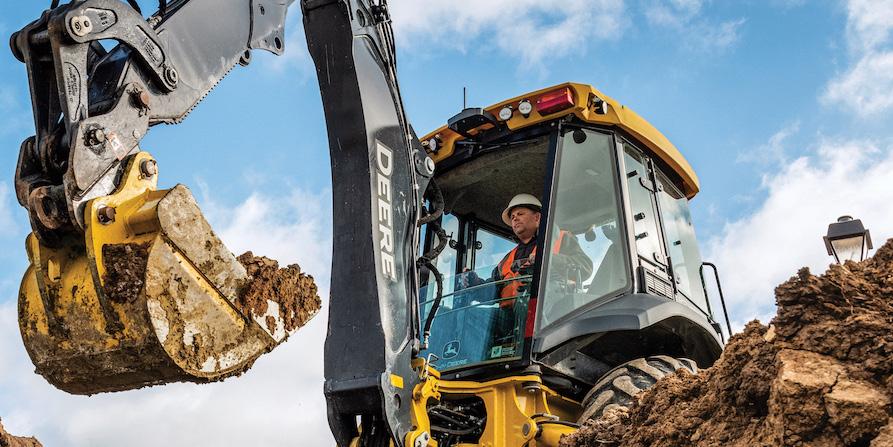
look at models available in North America from leading suppliers. To learn more about a particular backhoe-loader,

the
code with your smartphone camera to visit the specific model on ForConstructionPros.com.
CASE N Series backhoes feature ProControl, a swing dampening system that eliminates rebound on the backhoe, providing faster cycle times, less wear on components, greater operator precision and less fatigue. Engine ECO Mode encompasses a number of features that include ECO settings in both loader and backhoe functions to provide up to 10% fuel savings with minimal loss in productivity, as well as auto engine idle and auto shutdown.
Read More at https://eqtoday.co/casenseries
58580 Super N 97 17,269 14' 4" 14,452 0.85 - 1.29 10,947 580 Super N WT 110 20,077 14' 5" 15,070 1.00 - 1.50 10,873 580N 90 16,589 14' 8" 11,517 0.85 - 1.29 10,622 580N EP 74 15,795 14' 11" 11,517 0.85 - 1.29 9,607 590 Super N 110 20,532 15' 5" 15,853 1.00 - 1.50 12,776
JOHN DEERE
Boasting significantly more lifting capability than previous models, along with pressure compen sated load-sensing (PCLS) hydraulics available on select models, the John Deere backhoe loader line-up provides increased productivity and performance on the job. On the 310SL, 310SL HL, 410L and 710L models, PCLS provides increased productivity and smooth multifunction control at any engine speed. PCLS also allows for trenching operation to be conducted at a lower engine rpm, reducing fuel consumption and jobsite noise. Auto idle automatically slows engine speed when the backhoe pilot controls are released, with the preset engine speed resuming when levers are reactivated. Auto shutdown turns off the engine after an operator-selected period of inactivity. Read More at https://eqtoday.co/DeereBHLs
KUBOTA
The Kubota L47 and M62 incorporate the HST Plus transmission, which automatically con trols the hydrostatic pump and drive motor to provide optimal control. The transmission also boosts efficiency through features like the standard Stall Guard Plus and Backhoe Crawling Mode. The IntelliPanel provides vital machine information and relays key messages to the operator, including machine working status, engine conditions, fuel and oil warning signals, plus an array of maintenance indicators to help keep the machine in peak working condition.
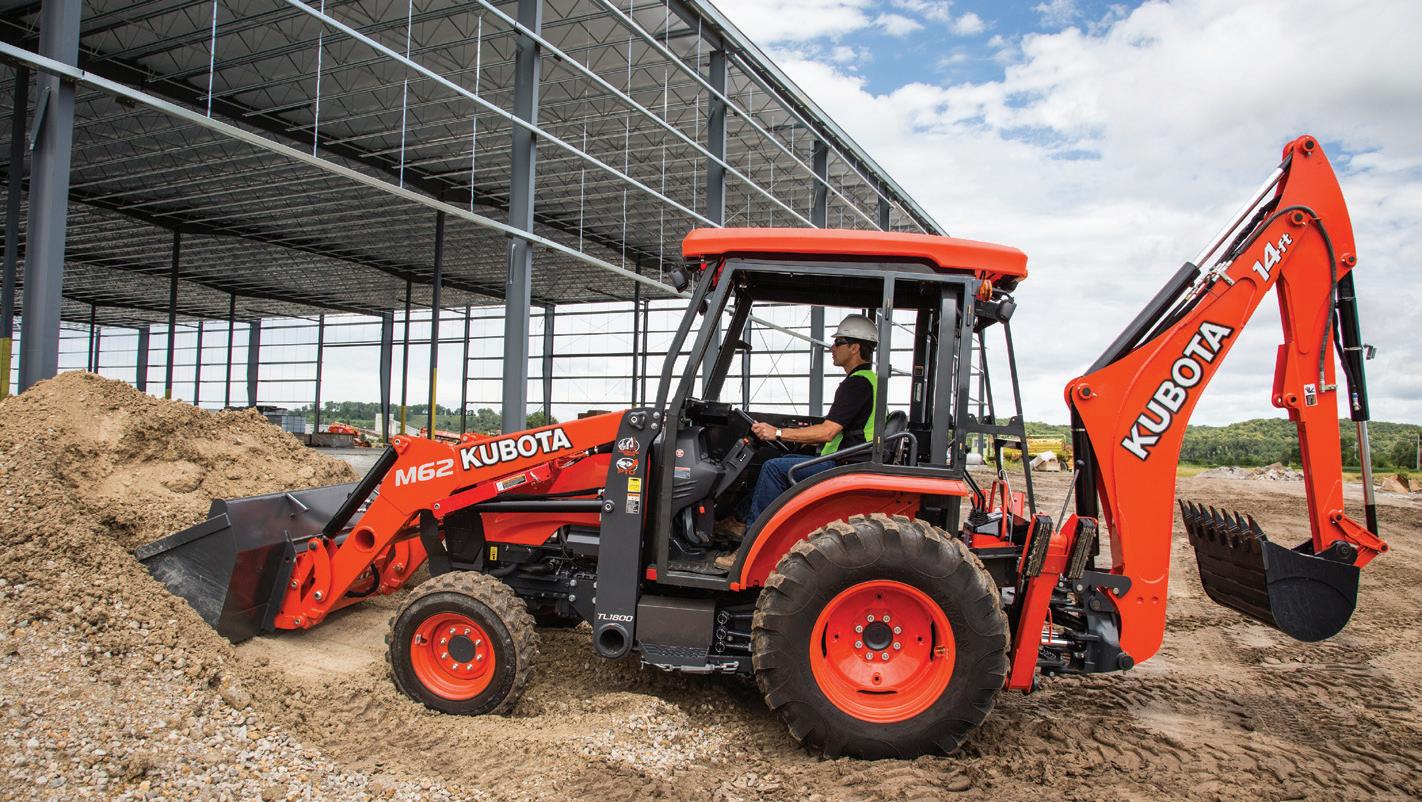
Read More at https://eqtoday.co/KubotaBHLs
NEW HOLLAND CONSTRUCTION
Read More at https://eqtoday.co/NewHollandDSeries
December 2022 | EQUIPMENT TODAY 23 ForConstructionPros.com/Equipment
Net Operating Backhoe Dig Backhoe Breakout Loader Bucket Loader Breakout Model HP Weight (lbs.) Depth (ft. in.) Force (lbs.) Cap. (cu. yds.) Force (lbs.)
Net Operating Backhoe Dig Backhoe Breakout Loader Bucket Loader Breakout Model HP Weight (lbs.) Depth (ft. in.) Force (lbs.) Cap. (cu. yds.) Force (lbs.) 310L EP 69 13,822 13'
310L 100 14,669 14'
310SL 103 15,872 14'
310SL HL 113 16,571 15' 1" 15,723/17,349* 1.12-1.31
315SL 103 17,554 13' 5" 12,361 1.00-1.31
410L 116 17,786 15' 11" 15,723/17,350*
710L 148 25,588 17' 3"
*Lift mode Net Operating Backhoe Dig Backhoe Breakout Loader Bucket Loader Breakout Model HP Weight (lbs.) Depth (ft. in.) Force (lbs.) Cap. (cu. yds.) Force (lbs.) B26TLB 24.3 4,001 8' 3.5" 4,210 0.34 2,343 L47TLB 47.1 7,205 10' 5,825 0.57 4531 M62TLB 63 8,925 14' 2.4" 6,572 0.87 5,992
8" 10,844 1.00-1.25 9,564
1" 10,844 1.00-1.25 9,512
3" 12,356/13,634* 1.12-1.31 10,541
10,598
10,608
1.31-1.50 10,361
17,622/18,959* 1.31-1.87 16,539
New Holland D Series tractor loader backhoes offer a model to match your needs. These backhoes feature a straight loader arm design that improves visibility
Their high-performing lift capacity, comfortable operator’s platforms and
depth will help you increase your productivity
work.
Net Operating Backhoe Dig Backhoe Breakout Loader Bucket Loader Breakout Model HP Weight (lbs.) Depth (ft. in.) Force (lbs.) Cap. (cu. yds.) Force (lbs.) B75D 68 18,298 18' 4" 12,598 1.3 13,778 B95D 95 18,805 18' 4" 12,933 1.3 13,977 B95D TC 95 18,695 18' 4" 12,933 1.3 14,711 B110D 108 20,084 19' 3" 13,418 1.3 14,253
to the bucket top edge.
outstanding dig ging
in a wide range of
updated
scan
QR
VF-VENIERI
VF Venieri (Ranko Equipment) has one of the only articulated multifunctional backhoe loaders available. It is more than a backhoe-loader, it is two machines in one. It combines an articulated front loader with Z-bar kinematics and a power excavator on the back with the carry-on system (four wheels equal size drive). All models are powered by a hydrostatic trans mission that enables a 25-mph platform that can complete a wide variety of tasks by utilizing various attachments on the front and rear.
Read More at https://eqtoday.co/RankoBHLs
JCB
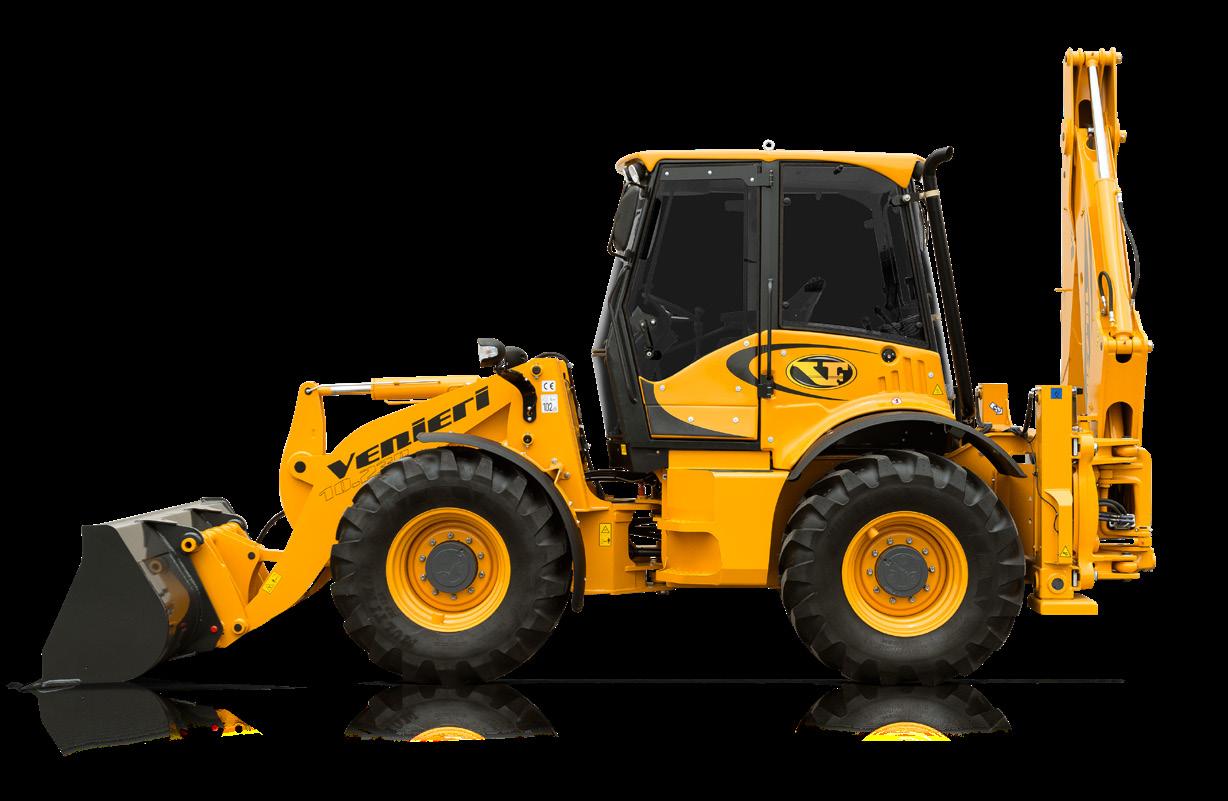
JCB Backhoe loaders can be equipped with several automated fea tures. These features simplify repetitive tasks, lowering operator fatigue and ultimately improve productivity. AutoSTABILIZERUP is an example of one of eight automate features, it will raise the stabilizer legs with a full stroke of the stabilizer lever. This allows the operator to get on with their next task instead of waiting for the legs to fully raise. The time savings may seem small, but adds up over the days, months and years result in a big time saving and productivity improvement.
Read More at https://eqtoday.co/JCB
CATERPILLAR
The latest Caterpillar backhoe-loaders run on the CAT C3.6 engine, which is EU Stage V compliant. The C3.6 engine, along with updated hydraulic valves, offers 10-15% fuel effi ciency improvement on the latest generation models. All Cat backhoe-loaders are now avail able with a front IT loader coupler. This interface works with a large portfolio of front work tools. The new seat mounted joystick control system increases floor space in the machine and provides a more comfortable running position compared to a pilot or mechanical control set up. A Dual Mode feature allows an operator to operate the implement they are not facing and offers full hoe control anywhere in the swing zone of the seat.
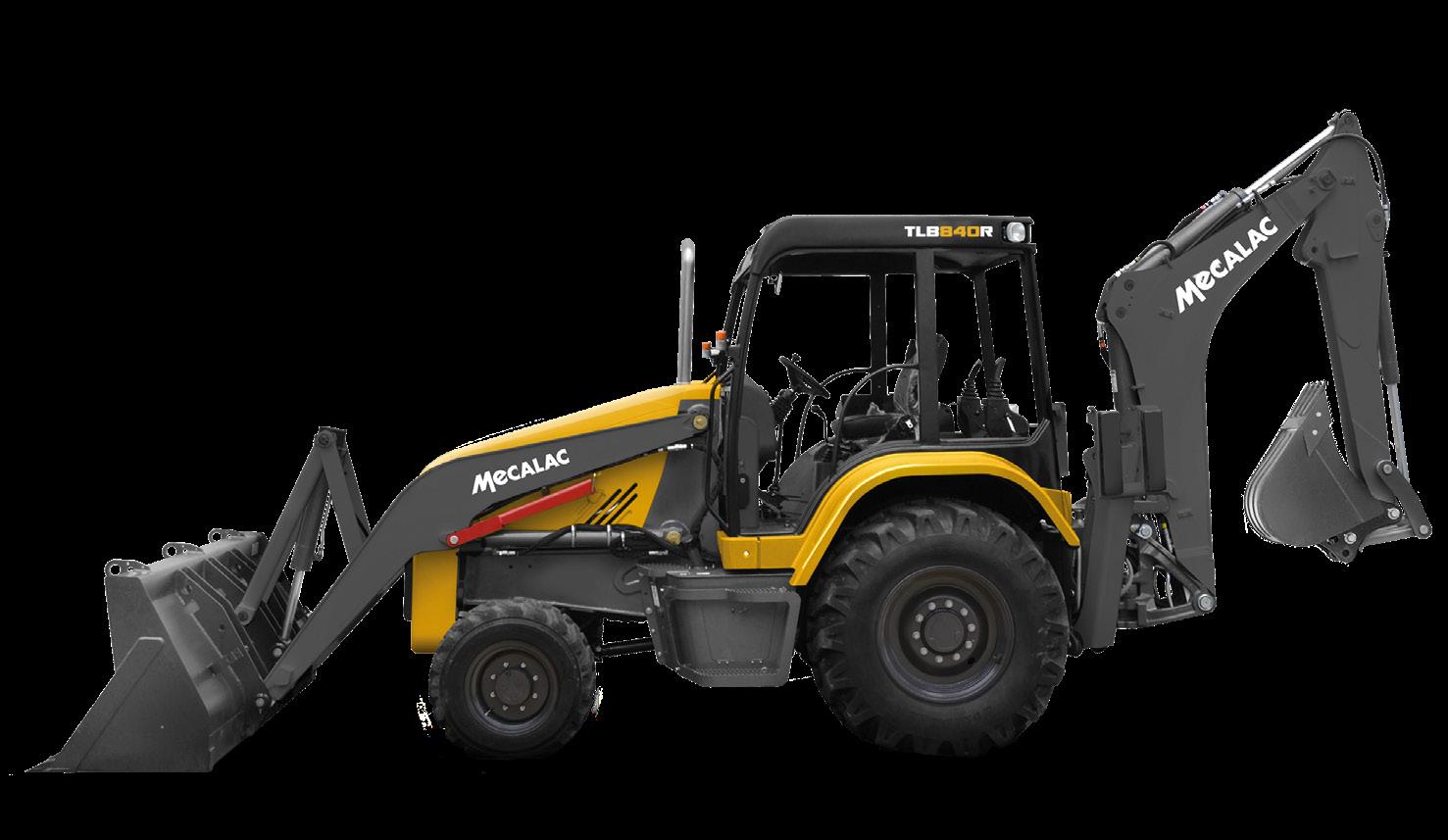
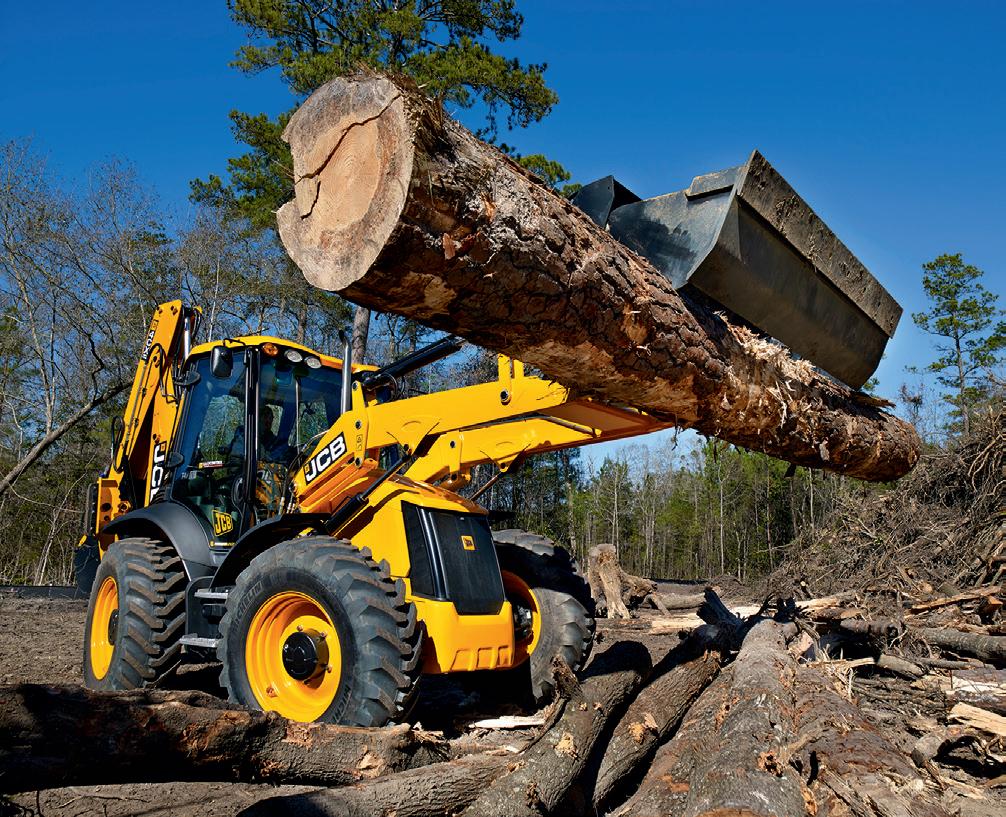
Read More at https://eqtoday.co/CatBHLs

24 EQUIPMENT TODAY | December 2022 ForConstructionPros.com/Equipment Net Operating Backhoe Dig Backhoe Breakout Loader Bucket Loader Breakout Model HP Weight (lbs.) Depth (ft. in.) Force (lbs.) Cap. (cu. yds.) Force (lbs.) VF 1.33B 52 8,800 9'-10' 7" 5,730 0.5 5,600 VF 10.33C 106 20,700 15' 8"-17' 8" 12,120 1.7 20,060 VF 8.23F 106 18,700 15' 1"-17' 8" 10,050 1.4 15,200 VF 10.23D 106 21,900 16' 4"-19' 8" 13,450 1.7 23,800
Net Operating Backhoe Dig Backhoe Breakout Loader Bucket Loader Breakout Model HP Weight (lbs.) Depth (ft. in.) Force (lbs.) Cap. (cu. yds.) Force (lbs.) 415 70 16,279 14' 0" 12,207 1 12,207 416 86 16,532 14' 0" 12,207 1 12,207 420 92 17,271 14' 0" 11,216 1.25 11,216 420 XE 92 17,271 14' 0" 11,216 1.3
430 107 18,051 15' 2" 11,216 1.25
440 104 21,544 15' 6" 13,560 2.0
450 131 24,039 17' 0" 13,560 2.0
11,216
11,216
13,560
13,560
Gross Operating Backhoe Dig Backhoe Breakout Loader Bucket Loader Breakout Model HP Weight (lbs.) Depth (ft. in.) Force (lbs.) Cap. (cu. yds.) Force (lbs.) 1CXT 49 9,572 10' 1" 5,291 0.47 5,180 3CX Compact 74 13,514 14' 2" 7,363 0.92
3CX 74 17,196 18' 6" 13,730 1.30 13,600 3CX-14 74 17,704 18' 6" 13,730 1.40 13,603 3CX-14 Super 91/109 18,614 18' 6" 13,730 1.60 13,603 3CX-15 Super 109 19,090 20' 1" 13,730 1.60 13,603 4CX-14 Super 109 19,172 18' 6" 13,730 1.60 13,728 4CX-15 Super 109 19,648 20' 1" 13,730 2.00 13,728
Mecalac’s backhoe-loaders are specially designed to provide immediate ROI without sacrificing performance or quality. Pairing a powerful Tier IV final 4-cylinder Deutz electronic fuel injection diesel engine and robust hydraulic system, the TLB840R excels at digging, reaching, lifting and loading tasks. The curved boom design and up to 13-ft., 5-in. loading height provides excellent clearance to reach up and over obstacles, as well as the ability to load closer into trucks for greater productivity. Read More at https://eqtoday.co/TLB840R Net Operating Backhoe Dig Backhoe Breakout Loader Bucket Loader Breakout Model HP Weight (lbs.) Depth (ft. in.) Force (lbs.) Cap. (cu. yds.) Force (lbs.) TLB840R 74 16,138 17' 10" 12,139 1.32 9,442 TLB890 110 19,842 18' 7" 15,444 1.7 12,454
8,285
MECALAC
Zivan CT3.3
Zivan has announced the launch of CT3.3, a new onboard battery charging solution. The CT3.3 serves as a rugged battery charger for onboard installations, in electrically-powered machines and vehicles. Designed for non-road mobile machinery, aerial work platform, e-mobility, AGV-AMR and others, Zivan began the CT3.3 development to complement SG3. New features will be introduced with the CT3.3, such as water cooling, increased power density, optional integrated DC-DC converter and input over-voltage protection. The CT3.3 and the SG3 can be installed in a stackable configuration to scale up charging power.
JCB Mobile Hydrogen Refueler
JCB has unveiled a mobile hydrogen refueler. The mobile hydrogen refueler provides a way for customers to refuel their machines on site. Around 97% of construction machines have fuel delivered to them while working on site. This means customers are already accustomed to a transportable fuel, allowing refueling to take place in a matter of minutes. The first hydrogen-powered machine to be unveiled was a JCB backhoe loader, followed a year ago by a Loadall telescopic handler.
Michelin 26X11N14 TWEEL UTV Tire
The 26X11N14 TWEEL UTV Tire is 2.8-in. wider and has an increased carrying capacity of 608-lbs., 85% more than the 26X9N14 current model. This increase allows customers to fully load their UTVs without exceeding the load capacity of the TWEEL. Available in 5 SKUs, the new wide-based rear fitment model is offered in five different bolt patterns to allow fitting for a wide variety of UTVs. It also features additional load capacity from the current TWEEL (26X9N14) up from 715 lbs. per tire to 1,323 lbs. per tire with a speed rating compatible with the current 26X9N14 model of 62 mph.

BKT EM 933 SUPER
BKT has launched the EM 933 SUPER, a tire designed for excavators in digging and loading operations. This product offers a rugged sidewall design with a protruding rib that enables close contact of two tires without the need for a special rubber ring to avoid rock penetration. Driving comfort, self-cleaning properties and heavy-duty traction under difficult and challenging conditions round up the profile of this tire and its tread design. This tire is available in size 290/90 – 20.


Makita's 40V MAX XGT 8.0AH BATTERY
Makita's 40V max XGT 8.0Ah Battery (BL4080F) gives contractors higher output power for high-demand applications. It is compatible with all products in the expanding XGT System and is designed for use with XGT equipment and tools taking on high-demand applications including the 80V max (40V X2) XGT 14-in. Power Cutter (GEC01, sold separately). It reaches a full charge in only 76 minutes or less for increased efficiency on the XGT Rapid Optimum Charger (DC40RA). The smart charging system includes built-in chips that allow communication between the battery and charger to control current, voltage and temperature. In addition, the XGT Charger has two built-in fans that circulate air through the battery and circuit board during charging.

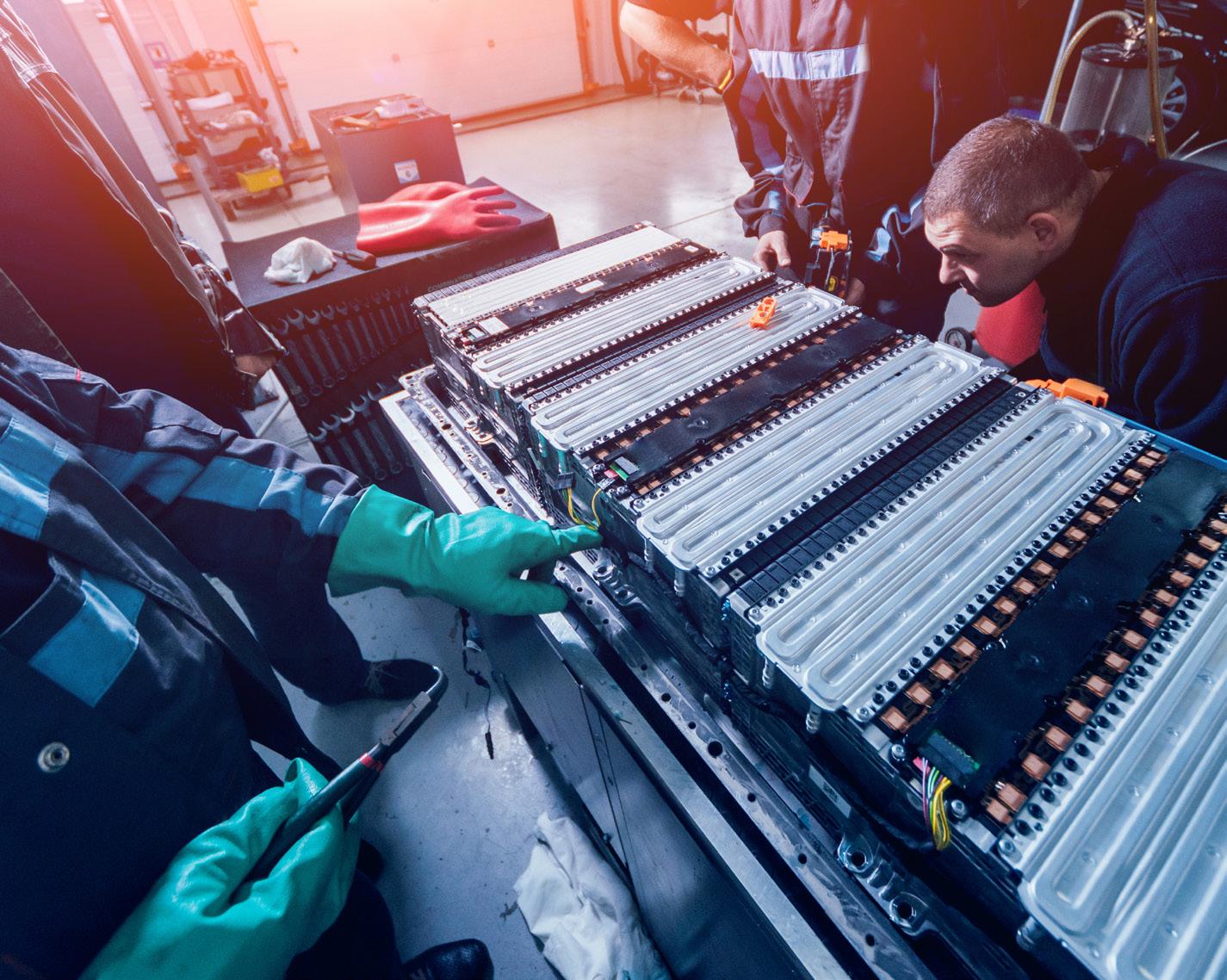
Briggs & Stratton Lithium-ion Commercial Battery Packs

The three new commercial battery options include: 3.5 kWh* Diecast Commercial Battery, 5 kWh* Diecast Commercial Battery and the 7 kWh* Diecast Commercial Battery. The lithium-ion 1.5 kWh* Swappable Battery Pack is engineered to provide users with reliable battery power. The battery’s exchangeable design allows customers to swap freshly charged packs from application to application. The Swappable Battery Pack can be used in tandem with other Vanguard packs to meet larger power needs and will be available for order in May 2023.
*Total energy measured using a 0.2C discharge per IEC 61960-3:2017
December 2022 | EQUIPMENT TODAY 25 ForConstructionPros.com/Equipment
FLEET MANAGEMENT Products
Read More at https://myfc.pro/wuwu2y
Construction Equipment and Contractors Aid in HURRICANE IAN DISASTER
According to the National Oceanic and Atmospheric Administration’s (NOAA’s)
National Centers for Environmental Information, disasters during the past 20 years have caused more than $1 tril lion in damages, and losses from this year’s disasters are still being calculated.
The most common events have been severe storms, fol lowed by tropical cyclones, flooding, drought, wildfires, windstorms and freeze.
Lyman Ramsay, president of Gulf Services, a family-owned
business based in Theodore, Ala., providing turnkey construction services, is performing disaster recovery work in Florida’s Lee County area following Hurricane Ian. Gulf Services is one of many subcontractors to CrowderGulf, another family-owned Alabama company providing disas ter recovery, debris removal and coastal restoration services throughout the United States.
CrowderGulf holds preposition contracts throughout the coun try in the event of a disaster and holds the master contract for Lee County and its municipalities.
FAST DEPLOYMENT OF DEBRIS REMOVAL PROFESSIONALS AND EQUIPMENT ESSENTIAL FOR EFFECTIVE POST-DISASTER CLEANUP
Gulf Services operates four Debris Management Sites (DMS), where materials are brought in from what's col lected from the right of way. Vegetative material is reduced through grinding. Construction and demolition (C&D) debris is reduced through compaction. Ultimately, the material goes to the landfill for final disposal.
Mulch is disposed of at
several locations for landfill cover or landscape operations.
Ramsay noted there are sys tems in place where roles are assigned prior to mobilization, which has a short window of opportunity for placing assets.
“It’s important that we are here immediately following the event so we can assess the needs for the DMS,” Ramsay said. “Many times, the client has preidentified these locations, and they've already been permitted. Therefore, it's a very quick turn around to receive approval to begin site preparation.”
The company relays to other subcontractors the assets required to mobilize to the area. The work goes through several phas es, starting with road clearing followed by debris collection, reduction and removal.

Additional services provided can include waterway debris and vessel removal and demolition.
When a disaster strikes, contractors can seek out oppor tunities to work in the recovery efforts by registering with local to national government entities such as the Federal Emergency Management Agency (FEMA)
26 EQUIPMENT TODAY | December 2022 ForConstructionPros.com/Equipment
FLEET MANAGEMENT
CLEANUP
and be prepared to supply required vendor documentation.
One month into the Hurricane Ian recovery and debris removal operation, the Crowder-Gulf team collected and reduced nearly 2 million cubic yards through a collaborative effort among many subcontrac tors from throughout the county. The goal was to make significant progress by Thanksgiving.
Ramsay noted the significance of pre-planning with clients and subcontractors for disaster clean-up as part of a playbook to
mobilize and begin the recovery as rapidly as possible.
He said his company relies on those with experience in having the proper equipment and under stand the urgency and the safety required for a successful mission.
Rapid mobilization is critical in the 48 hours before the traffic picks up from an influx of citi zens returning to their homes, and the arrival of contractors, aid groups and other government agencies, Ramsay said.
After 48 hours, the mobiliza tion continues, with additional assets and working with local
Gulf Services operates and maintains a fleet of equipment to help with disaster cleanups, like the recent Hurricane Ian in Florida. PKA Marketing
suppliers to provide more equip ment and services, he added.
“Equipment breakdowns can occur at inopportune times. It can be a challenge to source from local vendors who are in the pro cess of recovering, as well, so it may take more time for them to get back on track to provide what is needed,” said Ramsay, pointing to the need for preventative and general maintenance.
Chainsaws, generators and other equipment considered crit ical in clearing roadways and providing access to impacted areas may not be routinely used and need to be inspected regu larly to ensure they function properly when needed.
Gulf Services brought two Thunder Creek multi-tank oil trailers to the Florida activa tion. The MTO 690 units enable workers to have the combination of different oils and lubricants needed to perform preventative and general maintenance work on location.
In many cases, using the MTO 690 trailers eliminates the need for workers to have a com mercial driver’s license (CDL), increasing the availability of driv ers, noted Ramsay.
“We eliminate the need of a service truck having to mobilize between different loca tions,” Ramsay said. “When the Thunder Creek units needs to be refilled, we hook it up and go to the local fuel supplier.”
Dust from grinding vegeta tive debris and processing of the C&D is significant, noted Ramsay.
“At any moment, the winds can change and we have to con stantly monitor the air quality of our equipment,” Ramsay said. “Being able to address that with the air compressor and blower on this unit helps us keep that going like it needs to be.”
The units also include a light tower as a safety factor to offer visibility in the early morning and in the evenings, as needed.
The Hurricane Ian debris removal job also has necessitated
the use of Diamond Z DZT8000 tub grinders, a Diamond Z DZH7000 horizontal grinder and a Peterson 5710Z horizontal grinder.
Other equipment includes larger excavators, such as Caterpillar 335s and 340s, John Deere 350 and Volvo EC350 to process the C&D, facilitate grinding operations and load out the reduced C&D and mulch to trucks taking the material to its final disposal.

Each location also has wheel loaders and dozers, including D6 Caterpillars and 700 series John Deeres.
“The purpose of the DMS location is to facilitate efficient and rapid collection of the debris from the right-of-way and reduce the cost associated with disposal,” said Ramsay.
Ramsay said his company keeps extra equipment in reserve at all times to backfill equipment that goes down.
The company rented sev eral pieces of equipment from Alabama-based compa nies such as Beard Equipment and Thompson Tractor Co. Equipment also is sourced from companies in the affected area.
EQUIPMENT MAINTENANCE, FUELING AND POWERING ALL CONCERNS ON THE DISASTER CLEANUP JOBSITE “Downtime is not an option, said Ramsay. “We're here to serve the citizens and their govern ments as effectively and fast as we can. This is critical to begin the rebuilding process and return to normal life as soon as possible. It’s all about throughput.”
Another challenge on disaster management sites is managing and working a fleet dealing with a variety of difficult material in a hot and dusty environment for long hours, said Ramsay.
Regarding fueling, Ramsay noted that “wherever we mobi lize, the fuel is always difficult to obtain locally, just due to the challenges local providers and their staff are facing from the storm.”
Power is always a challenge, as well.
“We know that going in, we will bring several loads of fuel and generators for the initial phases of the operation,” until local providers are able to meet those needs, noted Ramsay.
Housing, fuel, water and liv ing conditions for workers is another challenge, underscor ing the importance of having the right setup, assets and people to mobilize to the site as quickly as possible, Ramsay noted.
His company brings its own water tanker, generators and RVs to be self-contained, self-suffi cient and have the ability to work seven days a week from sun-up to sundown, and sometimes a lit tle bit before and after, Ramsay added.
Matt Nelson, Diamond Mowers director of development, pointed out that those clean ing up damaged vegetation and trees following storms, floods and forest fires need the correct equipment for cleanup and resto ration with equipment that can cut, shred, mulch and process downed trees, broken branches and burnt brush.
“After severe weather or fire, the land can be layered with haz ardous trees and brush,” said Nelson. “Removing these hazards calls for the powerful process ing and rotation speed of a disc mulcher. Engineered to act like a flywheel, the distinctive disc design combines stored energy with hydraulic power to enable operators to cut and mulch trees and brush in their path effective ly and efficiently.”
Unlike other land-clearing techniques, mulching typically doesn’t cause disturbance to the soil, which is vital for reducing erosion and aiding in water con servation by preventing moisture loss, as well as preparing the land for replanting and new growth, Nelson said.
EQUIPMENT NEEDED FOR DISASTER RESPONSE DEPENDS ON TYPE OF DAMAGE CAUSED, FROM VEGETATIVE TO FLOODING
˜ Most reclamation jobs may require a backhoe – essential ly a tractor equipped with a loader-type bucket – to per form light-duty shoveling and material handling tasks.
˜ A brush cutter tackles land and vegetation manage ment challenges from cutting through tall, thick grass to clearing large-scale brush and small trees.
˜ A bulldozer can push large quantities of scattered debris into piles for disposal, with its tracks providing enhanced
December 2022 | EQUIPMENT TODAY 27 ForConstructionPros.com/Equipment
stability and traction on treacherous terrain.
˜ A front loader/wheel load er acts like a mobile shovel that can lift, transport and load debris onto vehicles for removal.
˜ A stump grinder uses a rotat ing cutting disc that mulches stumps. A reflex stump grind er uses a skid-steer’s lift arm to position its heavy-duty wheel in the stump before driving it through the wood with the machine’s wheels or tracks.
˜ A miller stump grinder enables the operator to cut stumps up to 36 inches in diameter without moving the carrier.
˜ For flooding damage, dehu midifiers dry out air in an enclosed space to prevent mold and bacteria growth.
˜ Fans of various shapes and sizes dry wet surfaces by moving the air around and helping mois ture evaporate over time from both hard and soft surfaces.
– perform better in the softer underfoot conditions that typically exist in flooded areas.
˜ Track-type tractors such as bulldozers or crawlers provide stability on uneven terrain to push large quantities of scat tered debris into piles.
ASSOCIATIONS, CORPORATIONS OFFER DISASTER RESPONSE RESOURCES
Mark Miller, CCO of AEM, an IT consulting firm that focuses on environmental issues, noted that severe weather threatens national utility tolerance thresh olds. His company’s technology is designed to help provide light ning and other critical severe weather data in seconds as to enhance resiliency and safeguard lives through more informed and faster decisions.
Caterpillar offers a wealth of input at cat.com/disasters that addresses preparedness on both a business and personal level, as well as checklists for plan ning for emergency power needs, emergency compressed air, and emergency temperature control.
The Home Depot Rental offers large equipment, tools, trucks and trailers that can be used to support storm and disaster recovery efforts, the range of which can be found at https://www. compactpowerrents.com/disastercleanup-and-emergency-rentals.
such as carpet blowers, dehumid ifiers and pumps.
“HEPA air scrubbers also play an important role by eliminat ing airborne contaminants when dealing with prolonged water damage such as after a major hurricane,” Vo said.
“Restoration and recovery efforts could extend for months. During this time, we experience rental demand for demolition, flooring removal and drywall repair tools.”
Skid steer loaders also are use ful throughout clean-up he adds.
Vo noted that renting offers an economical alternative to buying and can be beneficial for short and long-term equipment needs, replacement of an owned asset that may be out of service or increased work volume.
The American Public Works Association (APWA) offers guidance on a number of disas ter-related scenarios municipal entities might face, includ ing APWA Natural Hazards Checklists to help agencies pre pare for, respond to and recover from earthquakes, flooding, hur ricanes, ice storms, tornados and wildfires. The checklists can be obtained at https://resourcecen ter.apwa.net/ics-checklists.
be redistributed to maintain project schedules and achieve client expectations while also providing first response and recovery activities.
The APWA encourages public works agencies to develop mutu al aid or inter-local agreements with other agencies to plan for the unexpected, said Garland.
“Immediately after Hurricane Ian made landfall on Florida’s southwest coast, public works agencies that were not impacted by the storm were immediately delivering needed equipment and staffing,” he added.
Sometimes it’s those provid ing disaster clean-up who need help themselves.
“First responders need to remain focused on their job at hand, even though many times their homes and families were also impacted by the event,” he said.
The APWA’s Florida chapter maintains a Disaster Recovery Assistance Fund to assist pub lic works employees and their families with the purchase of consumable goods and personal items following a natural disaster.
Many of McKim & Creed’s workers were directly impacted by Hurricane Ian and some were left without homes.
˜ Flood pumps remove excess water from flooded areas.
˜ Heat drying equipment quickly evaporates moisture that remains on and inside property to prevent the devel opment of mold, mildew, rot and other issues.
˜ Equipment for hurricane and storm damage repair includes backhoes and wheel loaders, as well as cranes and crane trucks, which may be neces sary for cleanup operations requiring lifting and trans porting heavy objects.
˜ Dump trucks also are helpful.
˜ Excavators help rebuild a site after debris removal by digging holes for building foundations and perform ing trenching to reach, repair and replace damaged under ground utility lines and piping systems.
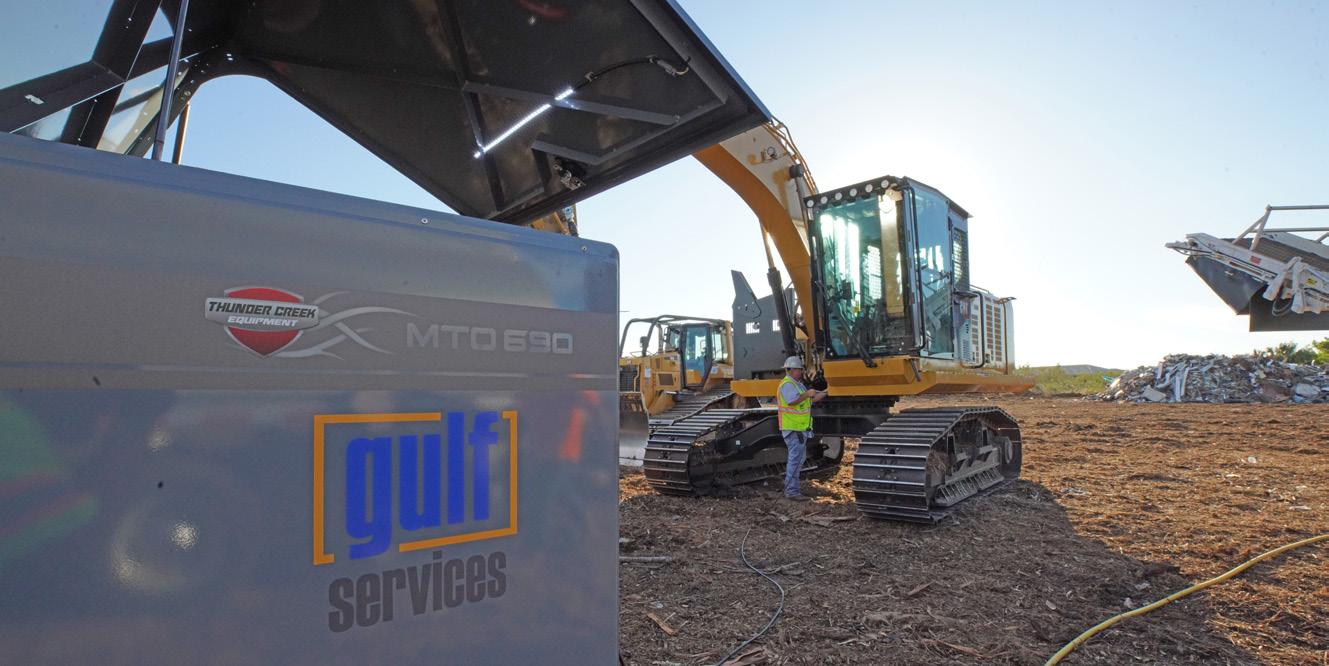
˜ Track loaders – a heavier version of a wheel loader
“We closely monitor the stock levels and usage trends for stormrelated products and partner with associates on the ground to iden tify areas with the most needs,” said Truc Vo, The Home Depot Rental’s senior fleet manager. “This allows us to pinpoint the optimal locations to deploy our Storm Response Units.”
The Home Depot Rental has two different trailer types to sup port contractors’ needs: 14-foot water restoration and remediation units, equipped with carpet blow ers and a mix of compact and large dehumidifiers, and larger 53-foot disaster response units, which include the same water mitigation products as the smaller units, plus water pumps, generators, chain saws and carpet cleaners.
Power generation is the stron gest rental demand after a storm, notes Vo, adding The Home Depot Rental offers 2000-watt inverter generators to 6500-watt generators.
Another common need is water remediation equipment
The APWA also offers Equipment and Fleet Management Self-Assessment Toolbox, emergency disaster plan and Incident Command System Pocket guide documents.
Robert Garland, an APWA board member and vice presi dent and regional director of McKim & Creed, has served as a consultant, first responder and contractor for natural disasters.
“Scenes can be chaotic, but a focused and controlled response can be executed with a properly developed and executed emer gency preparedness plan,” noted Garland, adding it’s important to build flexibility in the plan.
“Public works agencies are truly the first responders after a natural disaster, removing debris from roadways and providing temporary restoration of road ways so that the firefighters, police officers, utility compa nies and emergency response contractors can access impacted areas, assess damages and provide relief,” said Garland.
He noted it’s critical to identify backup staffing and resources from offices not directly impacted by a disaster event so current workloads can
The company’s manage ment team developed a plan to assess the personal needs of each employee and delivered water, generators, fuel and personal items to support their recovery.
Ramsay pointed out the strenuous work entails workers dropping their personal plans, which can be hard on families.
“Our employees are focused on the task at hand to get the operation going,” he said. “But once you slow down a bit, you start seeing the human side of this with devastation and suf fering the citizens are going through. It's a humanitarian effort as much as anything to help these people get back to work and back to life.”
Despite the hardship, they remain on the job until it is complete.
“We’ll be here as long as it takes. I would expect debris removal operations for this mis sion to last at least a year.” ET
FLEET MANAGEMENT 28 EQUIPMENT TODAY | December 2022 ForConstructionPros.com/Equipment
Read More at https://eqtoday.co/kyu7su
Carol Brzozowski is a freelance writer for Equipment Today.
Gulf Services commits its fleet to disaster cleanup sites as needed.
PKA Marketing


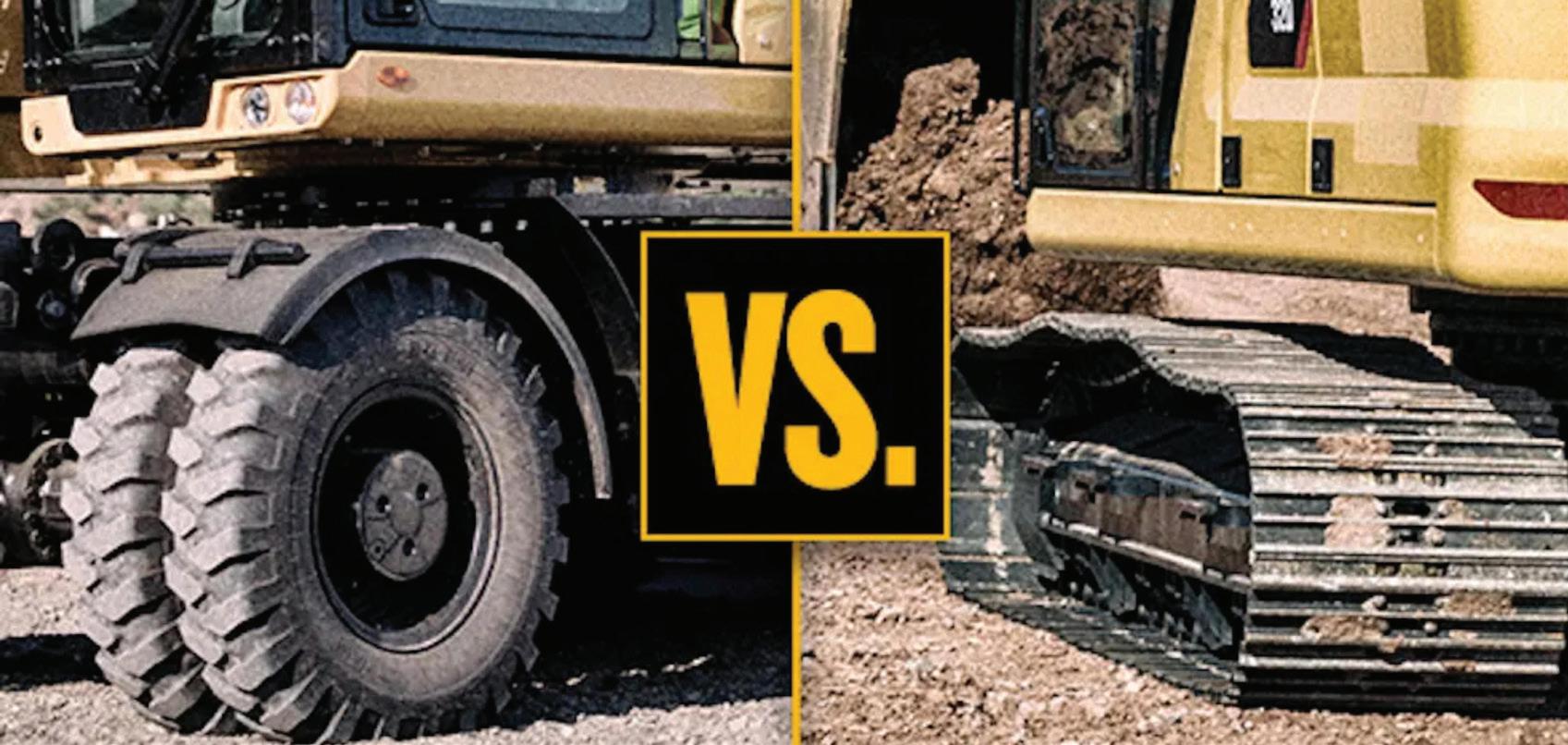
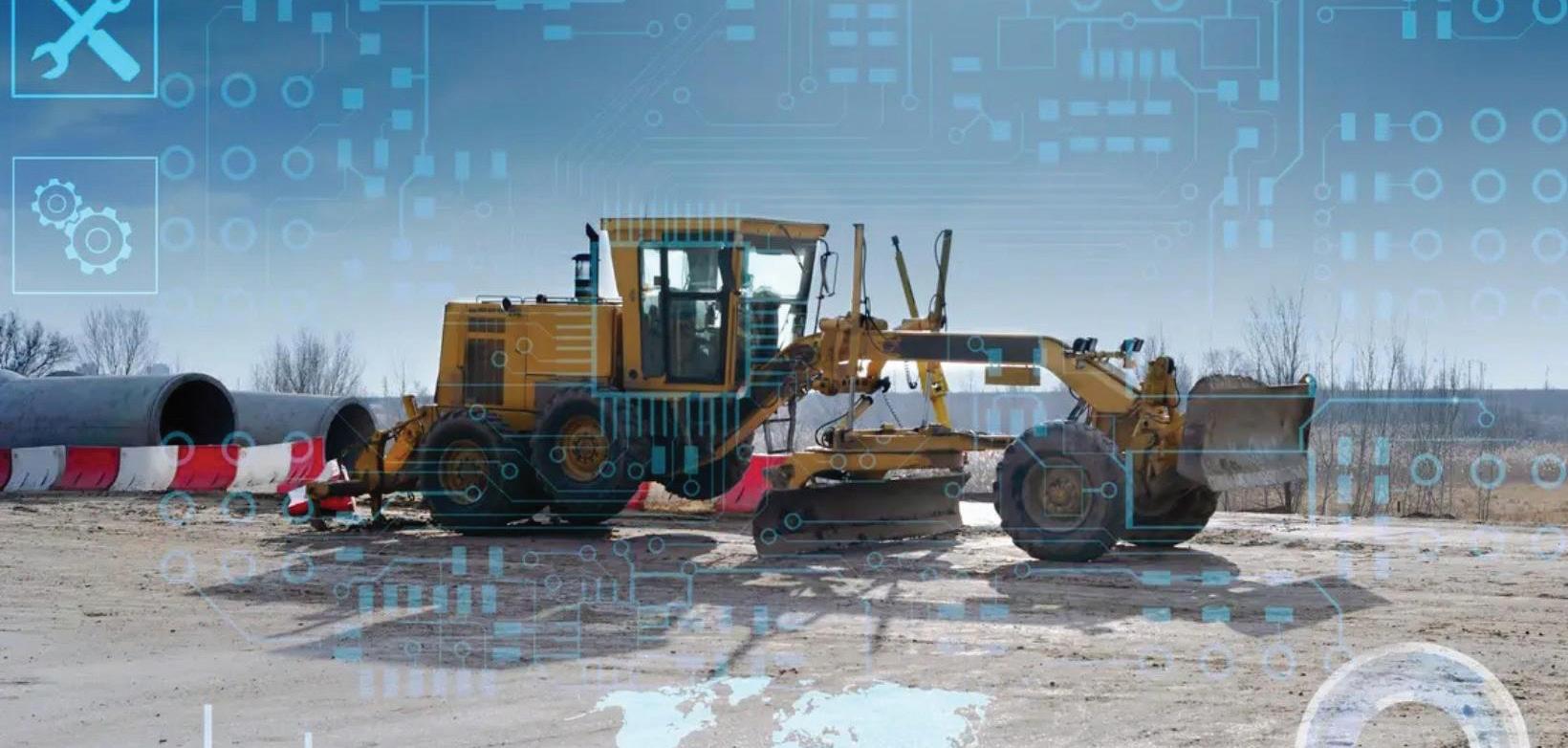
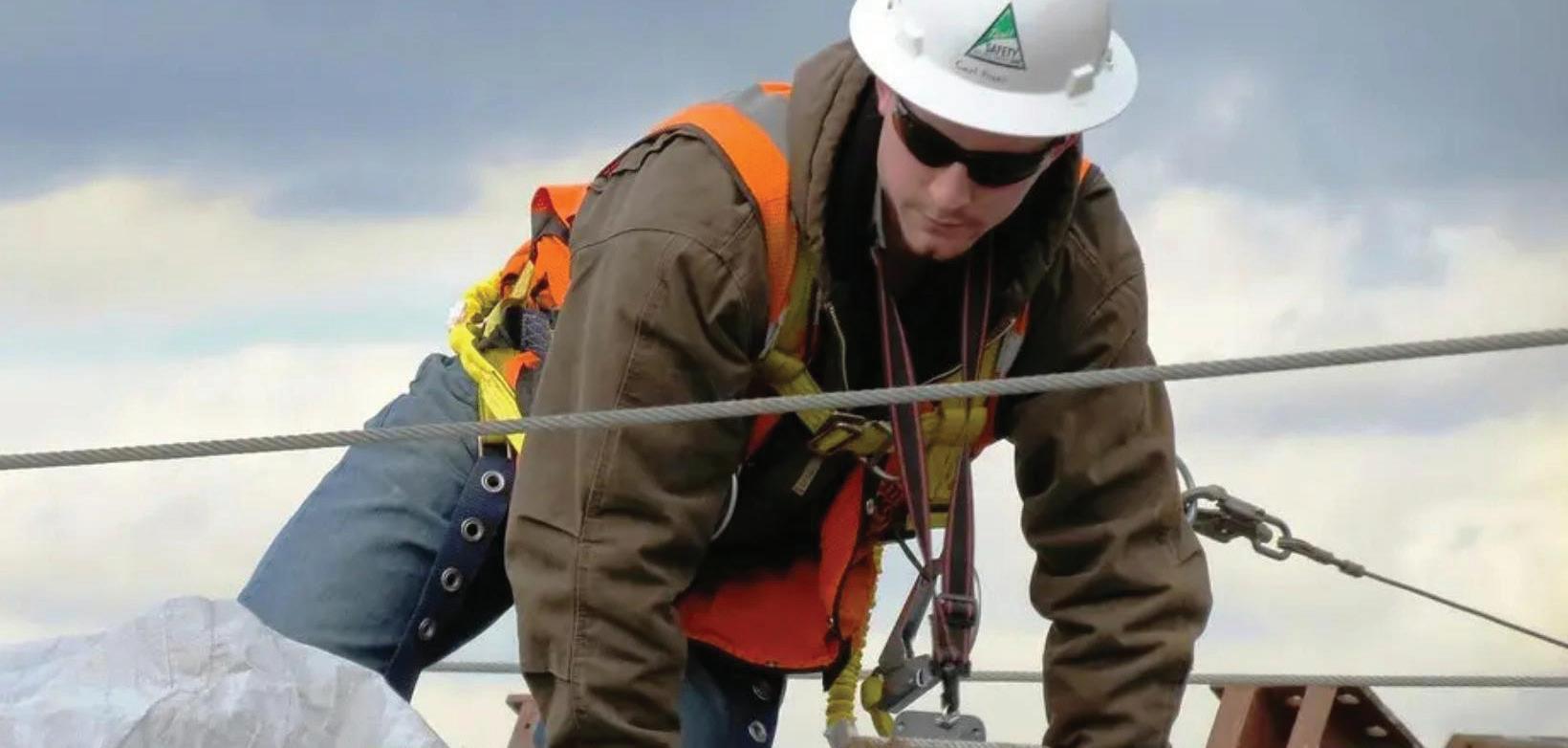

Research made simple ➜ Equipment ➜ technology ➜ workwear Wheeled vs. Tracked: How to Choose the Right Excavator for Your Job Is GPS Technology Worth the Investment? Top 6 Hoodies for Construction Workers To get the full experience, visit: IRONPROS.COM
How Long Should a Hose Last?
We are always asked, “How long should a hose last?” If I could crystal ball this one, I’d be a very rich person — especial ly in mining operations, where we have many hose applica tions based on system pressures and equipment types used in the
process. Multiple types of hoses are called for, whether braided or spiral constructions used in sur face and underground mining.
ABRASION: THE BIGGEST KILLER OF HYDRAULIC HOSE

Rubbing or gouging strips the rubber cover, exposing
reinforcements. Different types of abrasions exist, for example: ˜ Rubber against steel frames
˜ Rubber against ground sur face (dragging)
˜ Rubber against rubber
If the reinforcement is exposed, it may not begin to leak or burst right away. Since the
cover is removed, it compromis es the construction of the hose performance. Depending on the condition or surroundings of the hose, exposure can make the reinforcement rusty and brittle. It can also continue to remove the exposed reinforcement layer by layer. Additionally, in mining
operations, mines can be written up or fined for this condition as it poses a major safety violation.
Today, manufacturers produce many hoses with high-abra sion materials built into the cover. Also, other abrasion-resis tant products exist to protect the covers, like flat and round
30 EQUIPMENT TODAY | December 2022 ForConstructionPros.com/Equipment
FLEET MANAGEMENT
Knowing what can kill your hose is half the battle. Prevention plus proactive hose care will maximize hose life and improve the bottom line. Getty Images
spring guards and fabric abrasion sleeves. Using a better abrasiontype hose or product will help, but rerouting a hose (if possible) to give better protection can be an answer.
HEAT AND EXPOSURE: THE NO. 2 KILLER OF HYDRAULIC HOSE

External heat sources around engine compartments and areas of the country with high outside temperatures cause a hose to age and fail prematurely. Heat exposure can be reduced by using heat-resistant sleeving or, again, rerouting where practical.
Internal system heat temperature will shorten hose life as well. Any rubber-related products in the system, like seals and o-rings, will be affected. Let’s say a hose has a 212° maximum temperature rating which your system runs on the high side of—you begin to cook the hose. To make a hose, it is put into autoclave oven equipment to achieve adhesion of the tube, reinforcement and cover. So high-temperature exposure continues this cooking process. In this case, additional oil coolers may reduce your system temperature, helping system life. Also, check return line sizes to ensure it has not been replaced with a smaller inner diameter (ID) than needed, as this will cause heat issues.
Besides heat exposure, ozone and dust contribute to shortened hose life. These environmental issues cause hoses to dry out, as they pull out plasticizers in the hose’s construction.
Other conditions affecting hose safety and life fall into dif ferent categories: Hose routing.
Equipment manufactur ers engineer the best routing for their specific design criteria. Sometimes rerouting a hose for better life just can’t happen. For example, roof bolters or drills have large bundles of hose that have abrasion issues, but you can’t reroute that configuration to improve life. Anytime you can reroute or protect an assembly where practical, better life can be achieved.
Bend radius.
Bend radius is critical for hose life. Too tight of a bend will cause side loading on cou plings, creating leaking issues or failure. Making replacement
hoses that look really nice and tight along the framework may cause too tight of a bend radius.
If an assembly requires a specific length, replace it with that length unless you’re not sacrificing the bend radius.
Fluid compatibility.
Manufacturers of newer, modern hydraulic equipment use biodegradable, environ mentally-friendly oils. But the tube stock of many standard hydraulic hoses doesn’t do well with this type of fluid.
Fluid compatibility is neces sary to ensure the hose’s tube stock is not harmed. Check your oil properties to see what hose tube stock is designed for your needs. Cover blisters and tube swelling are signs of fluid incompatibility on a hose. Another cause of cover blisters is trapped gasses in the system. If you mix old and new equip ment in your fleet, using a hose tube stock for biodegradable oils for all applications will eliminate having different hoses to cover all needs.
Hose twist.
When installing a replacement hose in a system, pay attention to hose twist as you tighten the ends to create a seal. Most hoses have printed information, called the lay line, to tell what type of hose you have. If your lay line is twisted or spiraled, you are also doing that to the hose reinforce ment, greatly shortening hose life. Place the hose as close to its natural position as possible, tightening one end, then going to the second end—not allowing the hose to twist.
Correct replacement hose assem bly fabrication.
When fabricating an assembly, choose the correct replacement hose and fittings to match the original failed assembly for work ing pressure, ID size and fitting combination. Choosing a hose too small for the application can cause heat and sluggish perfor mance. It’s a good practice to mark insertion lengths on the hose to ensure that couplings are being pushed in all the way into the hose. It’s also wise to mea sure the final crimp OD (outer diameter) of all hoses made to the manufacturer’s recommended setting. This ensures you’ve made a correct assembly and provides safe working conditions for other personnel.
TIPS
˜ Temperature — Hose should be stored in a cool, dry area, never exceeding 100°F (38°C). If stored below freezing, hose may require warming before handling, testing and placing into service.
˜ Don’t place in direct sunlight, rain or heat, or near electrical equipment, ozone or heaters, or in or near humid areas.
˜ Don’t expose to oil, solvents, corrosive materials or fumes.
˜ Store hose in the original container if possible. Never stack too high, as its weight can crush the hose itself at the bottom of the stack.
Choosing a method of hose protection will provide better
life and reduce costly downtime. Also, make sure to seek out a solution provider or retailer that knows hoses well. Local and large companies can provide a wealth of resources for those seeking hoses, fittings, advice, troubleshooting and solutions. Maintenace is king when it comes to hoses.
Mi Conveyance Solutions provides many solutions in hose and fittings to customers from our world-class manufacturing partners. It also offers on-site safety classes for your specific application needs. Local support is key, and having industry knowledge will ensure that your equipment has less downtime and keeps personnel safe. ET
Brad Hoback is director of hose fabrication for Motion’s Mi Conveyance Solutions.
Read More at https://eqtoday.co/qxl7eq
December 2022 | EQUIPMENT TODAY 31 ForConstructionPros.com/Equipment
Telematics-based Fleet Management Is the New Normal for Aerial Equipment
Gather, read and understand machine data with telematics.
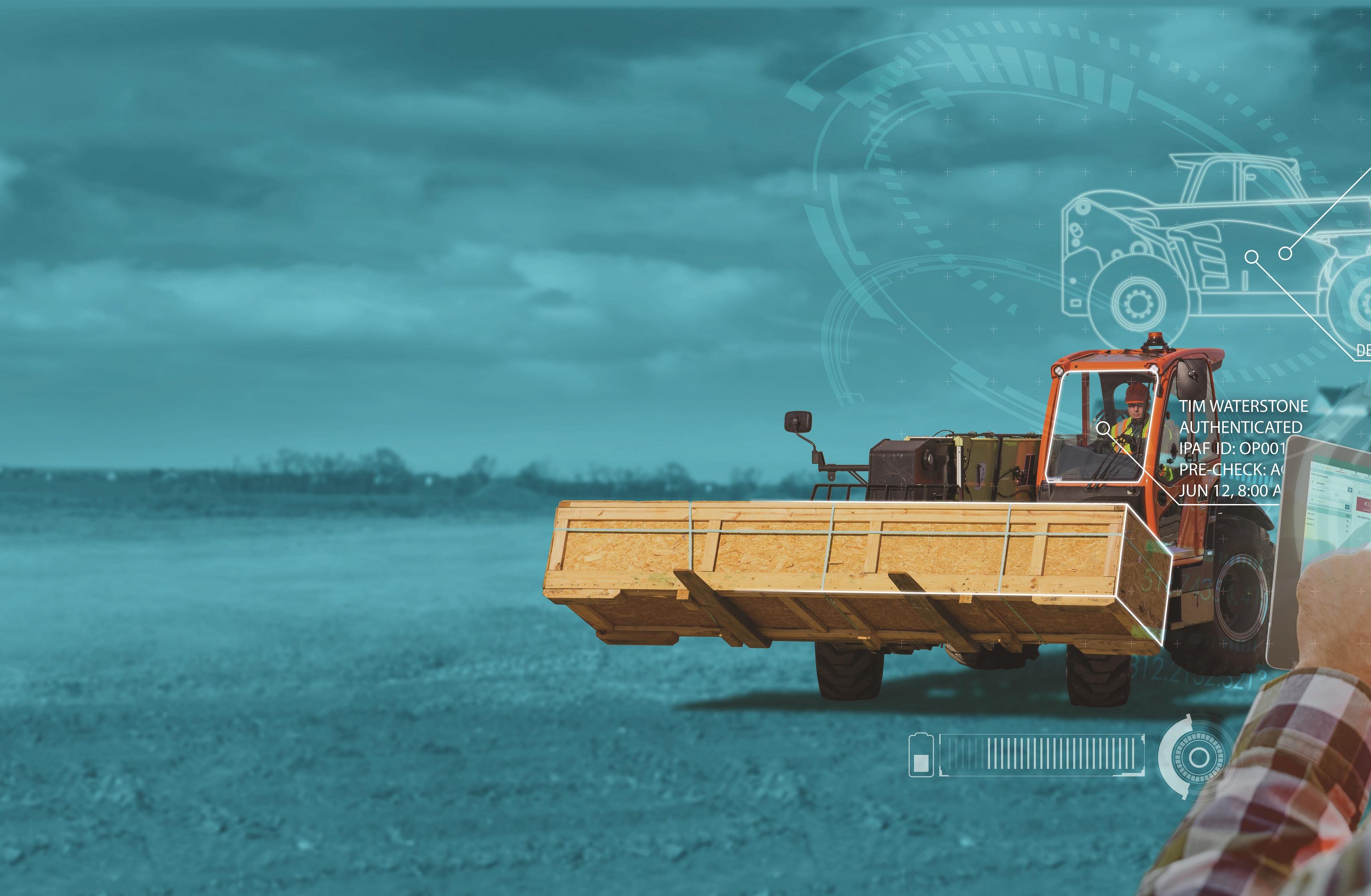
By fine tuning the data into workable amounts, aerial equipment fleet managers can easily use telematics to enhance their daily operations. JLG Industries

Telematics for construc tion equipment has been around for more than 20 years, and it is rare today to meet someone in the indus try who would say they aren’t aware of the technology. But plenty of fleet managers have yet to begin incorporating telemat ics into their operations. In fact, estimates show that only 20% to 30% of equipment fleet com panies — including those with aerial access equipment like mobile elevating work platforms (MEWPs) and telehandlers — are currently leveraging telematics on their fleet.
So, why does it seem to be taking fleet managers so long to adopt telematics? It’s because fleet management isn’t a one size fits all activity. Monitoring and tracking each machine’s operational efficiency, opera tional cost-effectiveness, operator management, equipment main tenance, equipment safety and compliance are big jobs, and fleet managers often have their own best practices to manage these efforts.
Yet, through the use of telematics, fleet managers are starting to realize they can more
efficiently gather, read and understand the information the machines provide. Telematics doesn’t need to be complicated or costly. In most cases, while the data points can be endless and perhaps offer more detail than most would initially need, not all the information needs to be used simultaneously. By fine-tuning the data into workable amounts, aerial equipment fleet manag ers can easily use telematics to enhance their daily operations.
Moving forward, using telematics will be the new nor mal in aerial equipment fleet management.
EQUIPMENT MAINTENANCE AND MONITORING
Today’s telematics systems typically combine GPS technology, diagnostics and monitoring sensors to track, log and report data on the performance and operation of an equipment fleet. The data can provide high-level or finite details on a number of machine systems, including equipment location, fuel consumption, idle times and machine alerts.
With access to this kind of machine data, telematics can
Telematics systems typically combine GPS technology, diagnostics and monitoring sensors to track, log and report data on the performance and operation of an equipment fleet. JLG
help aerial equipment fleet managers more accurately manage their machines’ service needs. For example, appropriately timing regular and preventive maintenance of each machine is a challenge fleet managers face every day. Equipment usage on jobsites often lasts weeks or months. That equipment must be
maintained while out in the field to ensure it operates as expected and without interruption in order to avoid unexpected downtime, lost productivity and the related cost implications.
Telematics technology can also give visibility into the aer ial equipment’s location on the jobsite, asset utilization met rics including engine hours, as well as its operating condition through fault and diagnostic codes — any time, day or night.
MONITORING EQUIPMENT USE
Telematics technology is much more advanced than most real ize, and it can have a significant impact on productivity across the entire construction project.
For example, telematics can be a catalyst for keeping workers busy and meeting deadlines. Security features that establish geofences, or invisible lines drawn by GPS coordinates, can be set up to keep equipment from being operated outside approved areas of the jobsite. This technology improves efficiency by eliminating “lost” machines.
Telematics solutions may even be able to provide fleet managers
32 EQUIPMENT TODAY | December 2022 ForConstructionPros.com/Equipment FLEET MANAGEMENT
Industries
Telematics technology is more advanced than most realize, and it can have a significant impact on productivity across the entire construction project. JLG Industries


with the ability to control the aerial equip ment’s on and off status based on an operator’s training and/or safety credentials.
With telematics, aerial equipment fleet managers can monitor which machines are being used, how long the equipment is oper ating each day and the critical advantage of easily monitoring battery usage, including whether or not equipment has been plugged in for charging at the end of the day.
GET AND UTILIZE THE RIGHT DATA
Using telematics for fleet management can help get the information necessary to opti mize equipment and help customers be more productive. That said, information (data points) is only helpful when it’s put to good use. It’s important for fleet managers to work with their aerial equipment OEMs to get the right data, integrate it into use ful reports and utilize it consistently to help make critical fleet management decisions.
For example, equipment fleets that include JLG aerial equipment benefit from having access to the OEM’s ClearSky telematics with Access Control system and Remote Analyzer features. This solution focuses on three key areas for fleet management:
˜ Increased utilization and uptime

˜ Enhanced opportunities to promote safety and security ˜ Boosting a machine’s productivity and performance.
Here’s a little bit more about each one of these focus areas:
INCREASE UPTIME AND UTILIZATION
Telematics can show rental equipment fleet managers where and how equipment is operating to best track and bill any outof-contract use. It also helps to manage machine maintenance schedules to ensure machines aren’t over- or under-serviced.
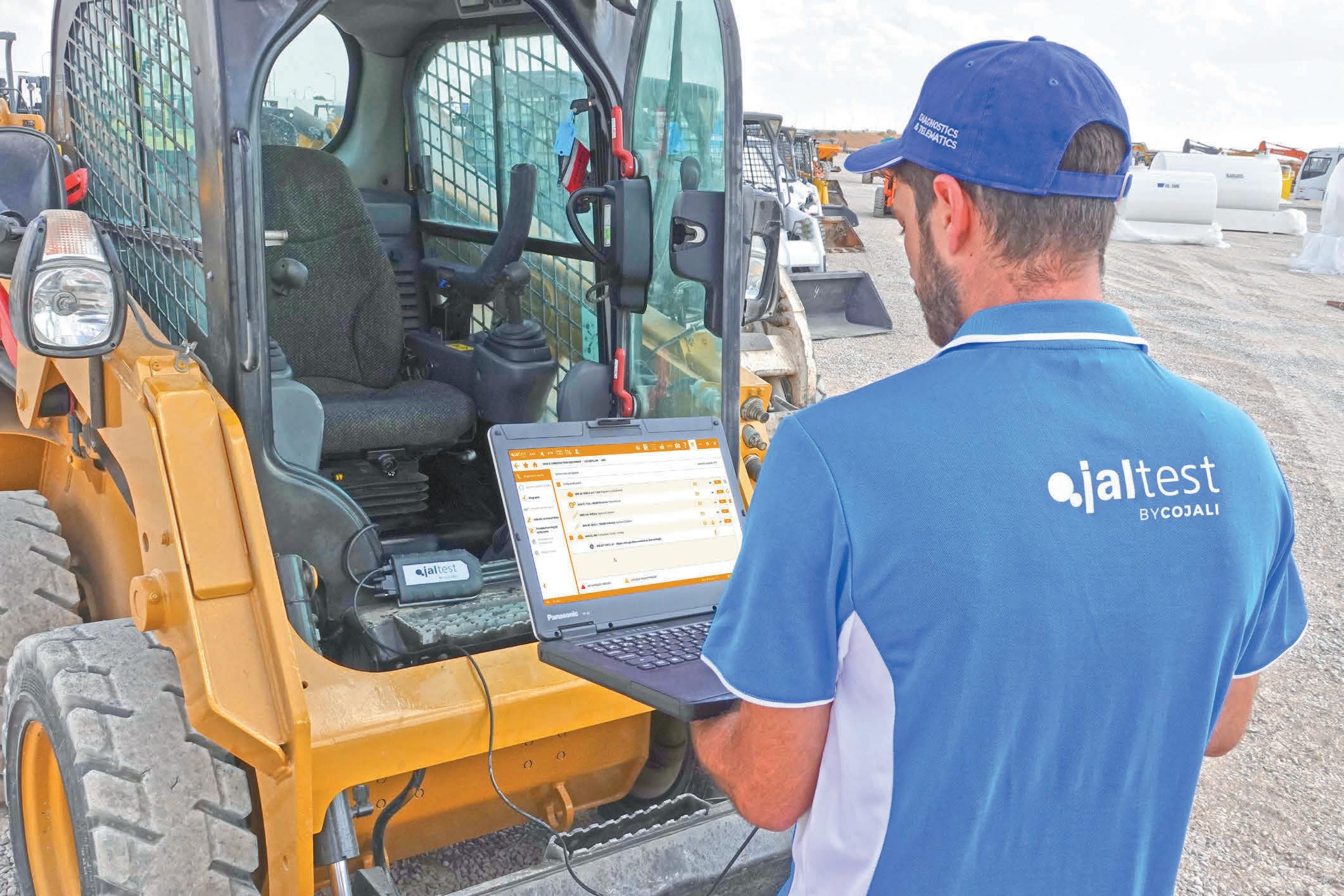
Using telematics, rental companies and renters can also remotely diagnose machine problems to coordinate the right tools and parts needed for on-site repairs. Users can also deflect unnecessary service calls to increase the efficiency of service personnel.
ENHANCE SAFETY AND SECURITY
With telematics, users can always know where machines are located. They can prevent equipment theft by setting virtual boundaries that alert when there is unauthorized movement or operation.
With features such as access

control, telematics systems help prevent unauthorized use of equipment by limiting access to only trained operators. This means that telematics enables users to always know when, where and how equipment is operating.
The systems can allow users to receive automated reports and immediate notifications when problems arise. And fleet managers can proactively schedule maintenance to reduce unnecessary service calls.
Users can also set up geofences and time fences to protect an equipment fleet from unauthorized operation or to prevent untrained operators from using the machines.
BOOST PRODUCTIVITY AND PERFORMANCE
Telematics platforms have tools to analyze fleet and operator data, as well as determine the overall effectiveness of a fleet manager’s operation. Sharing utilization and operator data can significantly improve on-site efficiency. By using telematics in conjunction with other digital tools, such as building information modeling (BIM), users can streamline the planning phase of projects to select a suitable machine for the job.
Telematics data can feed the bigger picture, as well, contributing important information that needs to be part of long-range business goals and improvement strategies. Those goals and strategies might include growing a customer base, offering better machine familiarization at the start of each rental, limiting the geographical radius in which machines may be used and decreasing the number of jobsite service calls, just to name a few.
As construction sites today continue to expand in size and complexity, meeting project deadlines is increasingly important. Although integrating telematics into a business’ daily operations may seem challenging, there are numerous benefits that can help justify the initial time and effort. That is because all of the facets of telematics can significantly improve productivity on a jobsite, help projects stay on target for completion or proactively plan for delays. ET
Jonathan Shapiro is senior manager, ClearSky telematics sales and business development, JLG.

Read more at: https://eqtoday.co/gbcnlz

December 2022 | EQUIPMENT TODAY 33
ForConstructionPros.com/Equipment FLEET MANAGEMENT
At the center of any con struction alternative power discussion is diesel. Diesel remains the go-to power on jobsites; according to the Diesel Technology Forum, 98% of construction’s energy use in the U.S. comes from diesel.
But with global initiatives underway to reduce carbon emis sions to net zero by 2050, it’s up to construction manufactur ers to find ways to lessen diesel’s carbon impact. A number of solutions are being considered: Replacing the diesel engine, reconfiguring the engine to run on lower-carbon fuel, and mak ing the diesel engine as efficient as possible. All are necessary.
Many diesel alternatives are being offered, including elec tric, hydrogen, biodiesel and other biofuels. And, over the next decade or so, one (or more) of these alternatives will establish themselves as having the greatest long-term potential.
“What’s coming? The answer is probably all of them,” said Jeremy Harsin, construction market director at AEM mem ber company Cummins. “The combination of duty cycle and
The Future is N OW : Examining Construction’s Power Alternatives
require wholesale changes of jobsite practices, machine compo nentry or fueling infrastructure.
verdict is still uncertain wheth er the value of electric—or indeed any alternative-powered machine—will hold up in the resale market.
THE IMPENDING RISE OF HYDROGEN
This approach offers scale, since the many of the compo nents are similar. And it holds promise for off-highway engines since Cummins commonly adopts cross platform technolo gies, Harsin said.
DON’T OVERLOOK DIESEL?
available infrastructure is going to decide what wins out, but they’re probably all going to have their place in the world.”
ELECTRIC HAS ARRIVED
Zero emissions, low noise, instant response, fewer compo nents to break down, all on a platform that delivers the same breakout force of a diesel-pow ered unit–electric power sounds like a major win. That’s why much of the alternative power activity in construction has cen tered on electric, particularly in the compact equipment segment.
“Battery power density is increasing all the time and we’re seeing a number of different tech nologies that make better use of battery energy,” said Ray Gallant, vice president of product man agement and productivity at AEM member company Volvo Construction Equipment.
“Electric is happening now as machines are starting to be com mercially available,” says Chris Sleight, managing director at AEM member Off-Highway Research.
Electric has also made its way to mid-size and larger
construction equipment. Electric machines, however, have some significant downsides. The ones most critical to contractors are limited run-time-per-charge and recharging time.

Although the electric charging infrastructure is the most devel oped of all alternative powers in the United States, today’s elec tric car owners still have range anxiety when they get into rural areas. Since many jobsites aren’t even on the grid, many OEMs are selling chargers with their electric machines. Solar charging is also being examined.
And electric’s strong sustain ability argument can break down when one gets to the batteries themselves. First, several minerals are extracted to create the bat teries, including copper, lithium and nickel.
Second, proper end-of-life battery disposal is still in ques tion, not to mention that battery materials have value.
Electric machines will also require a reworking of the deal er parts and service offering and technician training. In addition, residual value is central to any equipment cost equation; the
Current construction equip ment prototypes use hydrogen in two ways: either as a fuel cell that charges a batteryelectric machine or to fuel an internal combustion engine. In a hydrogen fuel cell, hydro gen and oxygen react to produce electricity, with water as its only by-product. In the second way, hydrogen is used as a direct engine fuel, much like diesel.
While hydrogen must be compressed and transported at low temperatures, “it’s a portable fuel so you can get it to where it’s needed,” Sleight said. But infrastructure challeng es are also part of the hydrogen story. The number of hydrogen fueling stations is a hard-to-see sliver looking at the Alternative Fuels chart from the U.S. Department of Energy. Almost all of them–approximately 70–are in California. Construction equipment powered by hydrogen fuel cells and hydrogen-fueled engines are, at least at this point, in the prototype stage.
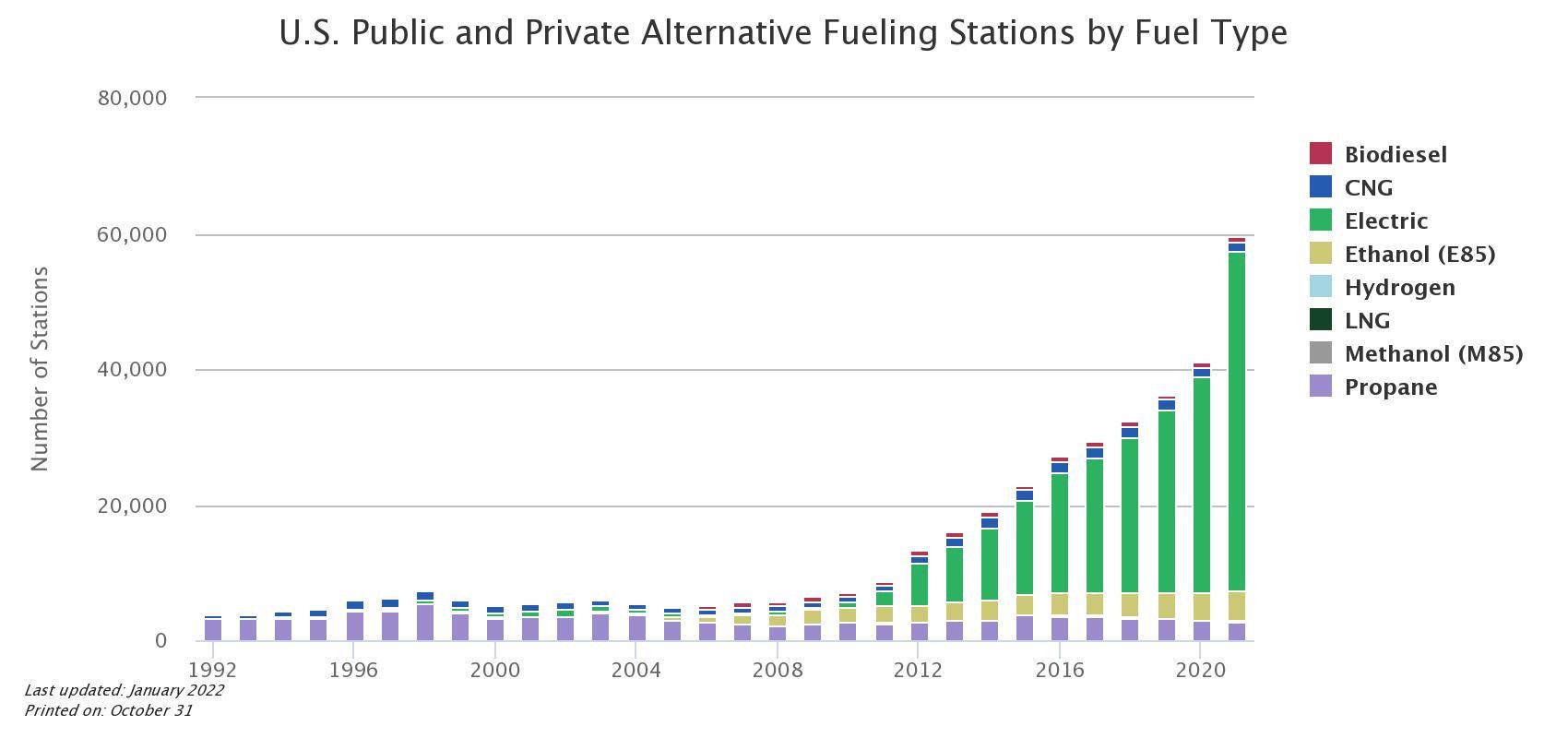
LOW-CARBON FUELS CAN BE USED IN THE SAME BASIC ENGINE
Hydrogen-powered engines also illustrate another way to reduce engine emissions: modify a con ventional engine to be able to burn cleaner fuels. According to proponents, this approach doesn’t
Current prices and world politi cal stability issues aside, diesel remains the construction stalwart. Despite its “dirty diesel” per ception, Cummins says it’s worth a reminder that compared with Tier 1 engines, today’s Tier 4 Final engines offer a 96% reduction of oxides of nitrogen and a 97% reduction in particulate matter.
The U.S. is also likely to see Tier 5 emissions regulations by the end of the decade, Harsin said. California has already discussed enacting a Tier 5 regulation in 2024 with imple mentation to start in 2028. Another consideration is the gradual retirement of construc tion’s aging fleet. Construction machines have a relatively long life; there are plenty of Tier 3 engine-powered machines still plugging away on jobsites. Cat, for example, estimated the aver age age of its field population to be 11.3 years.
“There’s a lot of good work being done in the diesel space. It’s about lowering our emis sions overall. Everything doesn’t have to be zero emission,” said Gallant. ET
Justin Metzger is the spokesperson for the Association of Equipment Manufacturers (AEM).
34 EQUIPMENT TODAY | December 2022 ForConstructionPros.com/Equipment
Read More at https://eqtoday.co/m8ebpp FLEET MANAGEMENT ©Fotolia RAW – stock.adobe.com
Alternative fueling stations by fuel type in the U.S. U.S. Department of Energy
Handheld Algiz RT10
Handheld has announced the release of the all-new Algiz RT10, a heavy-duty 10-in. Android tablet for construction sites and tough outdoor environments. The new Algiz RT10 features an IP67 rating and the ability to withstand water, dust, shock and extreme temperatures. This product has a high-res 10-in. touchscreen and weighs 980 grams (2.2 lbs.). With a Qualcomm Snapdragon 5G platform and Android 11 operating system (OS), it delivers enterprise functionality for mobile field workers.

The 5G functionality allows live video streaming in the field, while Android Enterprise Recommended (AER) validated by Google puts it on a shortlist of qualified, enterprise-focused devices. It has biometric (fingerprint) ID for security, as well as the MaxGo mobile device management (MDM) software for custom settings across devices in a field network.
“The Algiz RT10 Android tablet is the best combination of portable design, field ruggedness and technology capabilities available in an enterprise-level mobile computer,” said Johan Hed, Handheld director of product management. “It provides true mobility, and it’s the perfect choice for businesses that need a flexible solution in any type of vehicle.”
FORVIS New Markets Tax Credit Forecasting Tool
FORVIS, a financial services company serving the construction sector, has launched the New Markets Tax Credit Forecasting Tool for businesses. This new software is designed to minimize New Markets Tax Credit (NMTC) transaction times.
The New Markets Tax Credit Forecasting Tool can generate a compiled transaction model in real time, potentially shaving weeks off a closing schedule and reducing overall transaction fees. The tool will not only help clients, but the communities in which they invest, by supporting the due diligence and approval process.
Hemisphere GNSS GradeMetrix Loader Kit
Hemisphere GNSS, has announced the release of the GradeMetrix Loader solution. Recognizing the demand and versatility of the loader, Hemisphere has responded with this addition to GradeMetrix solutions to continue the growth of its global machine control customer base.
BoomNation App
The BoomNation app helps connect tradespeople with employers who are looking for a way to engage with and hire qualified skilled workers, as well as share content and facilitate project communications. Through the 2.0 upgrade, skilled workers will get plugged in with more content, communities and a new communications system specifically for their community. As BoomNation continues to improve the app's functionality, it will soon offer employers a searchable database of verified skills among workers to provide more efficient communication and interaction.
ConstructConnect Partners with Togal.AI to Expand Platform Features
ConstructConnect, a provider of software solutions for the preconstruction industry, has announced a new partnership with Togal.AI. The collaboration will expand the use of machine learning and artificial intelligence in nonresidential preconstruction.
Togal.AI uses machine learning to automatically identify, classify and extract object data from 2D blueprints. This can compress the time initially spent scoping a project by 50 percent or more based on recent user feedback.
“ConstructConnect is excited to partner and integrate with Togal.AI,” said ConstructConnect’s chief strategy officer, Jonathan Kost. “The integration will help us further reduce mundane and timeconsuming activities commonly performed by estimators, enabling them to focus their time on higher value tasks and projects to increase the accuracy of estimates and competitiveness of bids.”
“Upon joining FORVIS, it became immediately clear to me that our clients are looking for ways to capture and deliver outcomes that support people and the communities they call home,” said Mike Roney from FORVIS. “The federal NMTC Program is perfectly aligned with many of the industries FORVIS serves. The New Markets Tax Credits Forecasting Tool has the ability to make any NMTC transaction more efficient and effective. Our tool can serve as a bridge that closes the gap between dream and reality resulting in significant impact to everyone involved."
“The demand for NMTC funding is real, and everyone is excited for someone like us to come in and dramatically accelerate the pace at which these transactions can flow,” said Wes Ernst, director at FORVIS. “By doing so, we will become a critical partner in ensuring NMTC capital ends up in the areas which need it most.”
"Driven by requests and feedback from our customers and global machine control partners, we felt that the introduction of a GNSS-based loader solution would truly benefit our target audience. Loaders provide users a substantial level of versatility to complete various construction activities and now with the addition of our GradeMetrix based solution, we can also improve their ROI." said Miles Ware, vice president of marketing.
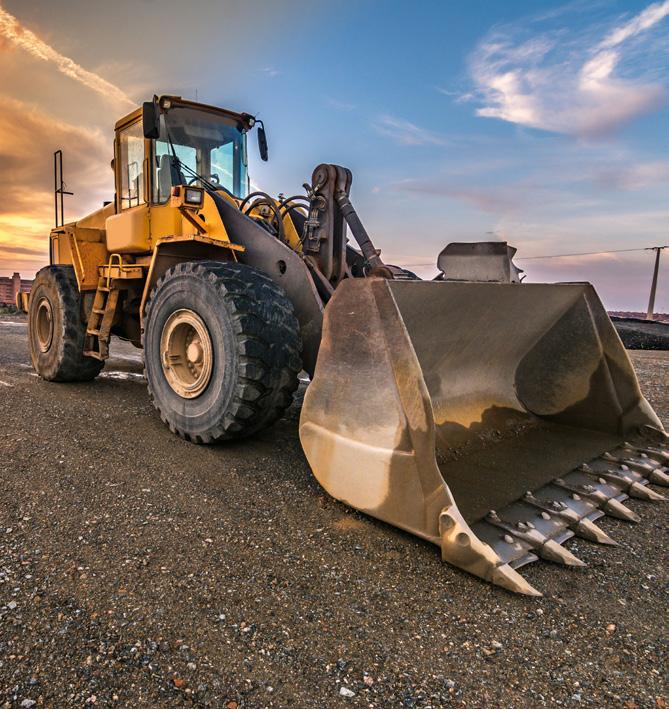
"Hemisphere's commitment to globally expanding the access to machine control technology continues to be a key component of our growth strategy," said Randy Noland, vice president of global sales and business development. "By adding the GradeMetrix Loader solution, we are increasing the adoption of machine control technology to both new and experienced users in the industry.”
GradeMetrix Loader kits will be available for purchase for new customers. Existing customers will have the option to add loader support to their current GradeMetrix system via a software upgrade and machine activation.
4M Analytics 4Map
Nialli Design Planner and Workspace
Nialli Inc., a SaaS collaboration company, has announced two additional applications, Nialli Design Planner and Nialli Workspace, to complement Nialli Visual Planner, its digital pull planning tool for construction projects.
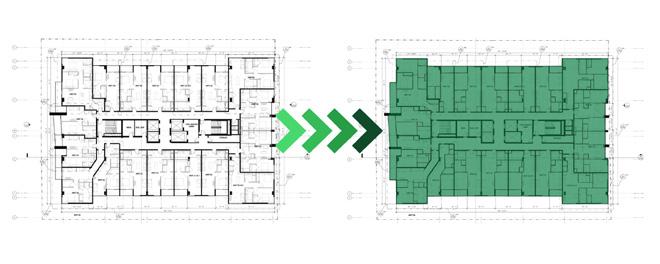

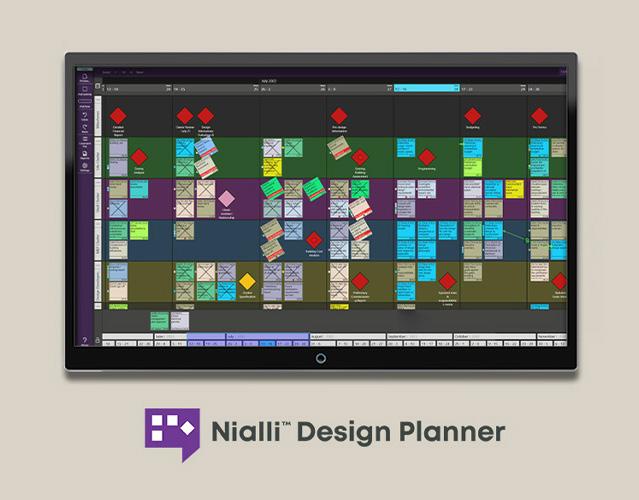
4M Analytics, a company developing mapping products for infrastructure projects and construction sites, offers the 4Map solution for locating underground utilities including oil and gas lines, water pipes, electricity and telecommunications lines and renewable energy infrastructure. This software does not require hiring labor onsite.

The company is in the process of making the data of underground utilities available through a single dashboard that will eventually cover the entire U.S. Using this, engineers will be able to see exactly where utilities are, no matter where in the U.S. they’re working, reducing the time it takes to locate them. The solution is designed for civil engineering firms, engineering procurement construction firms, contractors and subsurface utility engineering firms in industries including transportation, oil and gas, water and electricity, renewable energy, telecommunications and more.
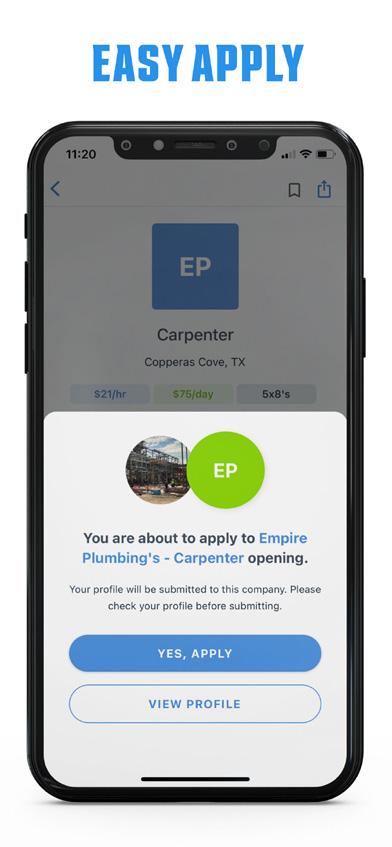
December 2022 | EQUIPMENT TODAY 35 ForConstructionPros.com/Equipment TECHNOLOGY Products
Explore more Construction Technology topics and products at: https://myfc.pro/smog4i
How A Kentucky Contractor Uses Tracking to Punch Their E-Ticket To SUCCESS
Some days running a business can feel like you’re treading water just to stay afloat. But on good days business leaders will have just enough bandwidth to manage their current day while planning for tomorrow. On days like this Walker Construction’s Scales/Truck Supervising Manager, Kevin Howard, is happy that his company has the telematics tools to prepare themselves to excel in tomorrow’s business climate.
PUNCHING THEIR E-TICKET TO SUCCESS
Headquartered in Mount Sterling, Ky., Walker Construction operates two rock quarries and two blacktop plants. With 20 dump trucks and two pavers, the Walker Construction team performs paving proj ects across Menifee, Mt. Sterling, Clark, Bourbon, and Montgomery counties.

“We do a few driveways and the occasional parking lot job, but most of the work we do is state and county work,” said Howard of the workload.
When dealing with the Department of Transportation (DOT), Howard’s found that partnering with Earthwave’s telematics saves Walker Construction time and operating headaches.
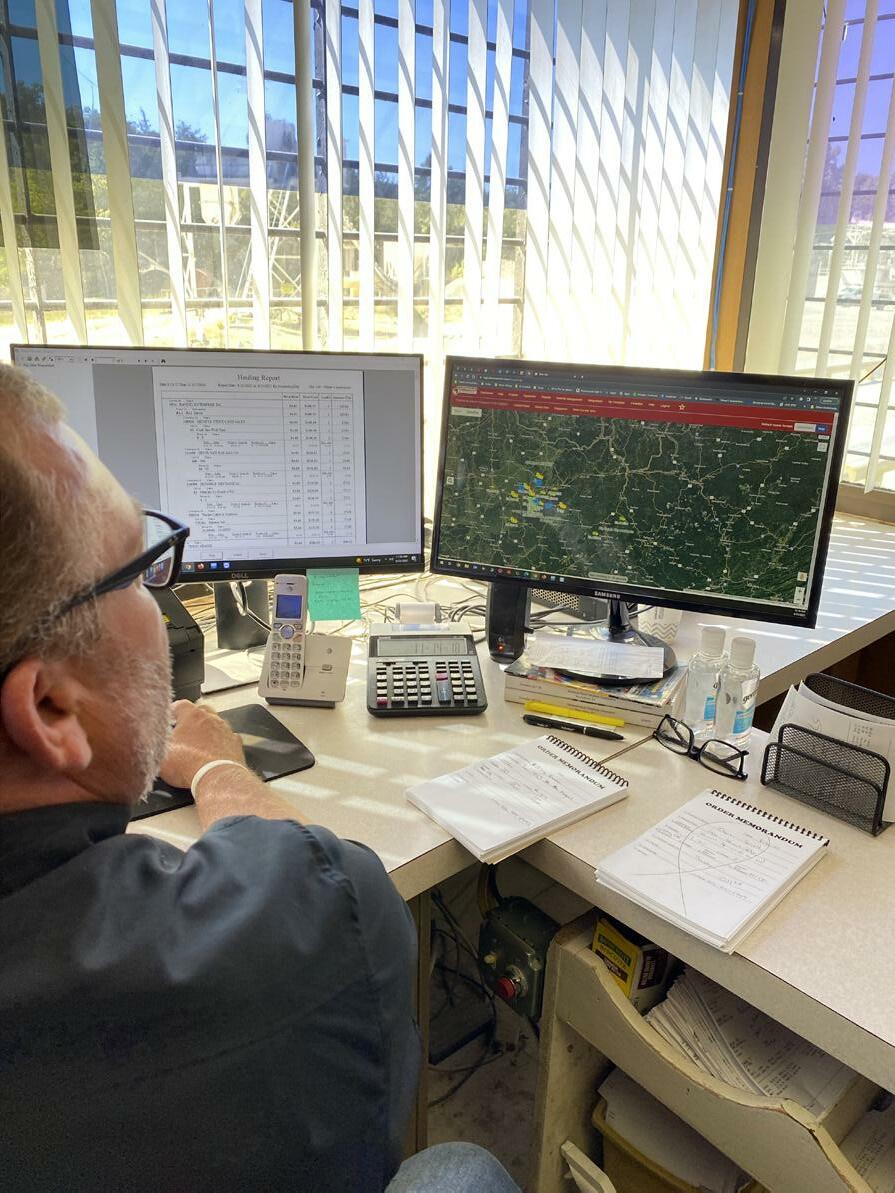
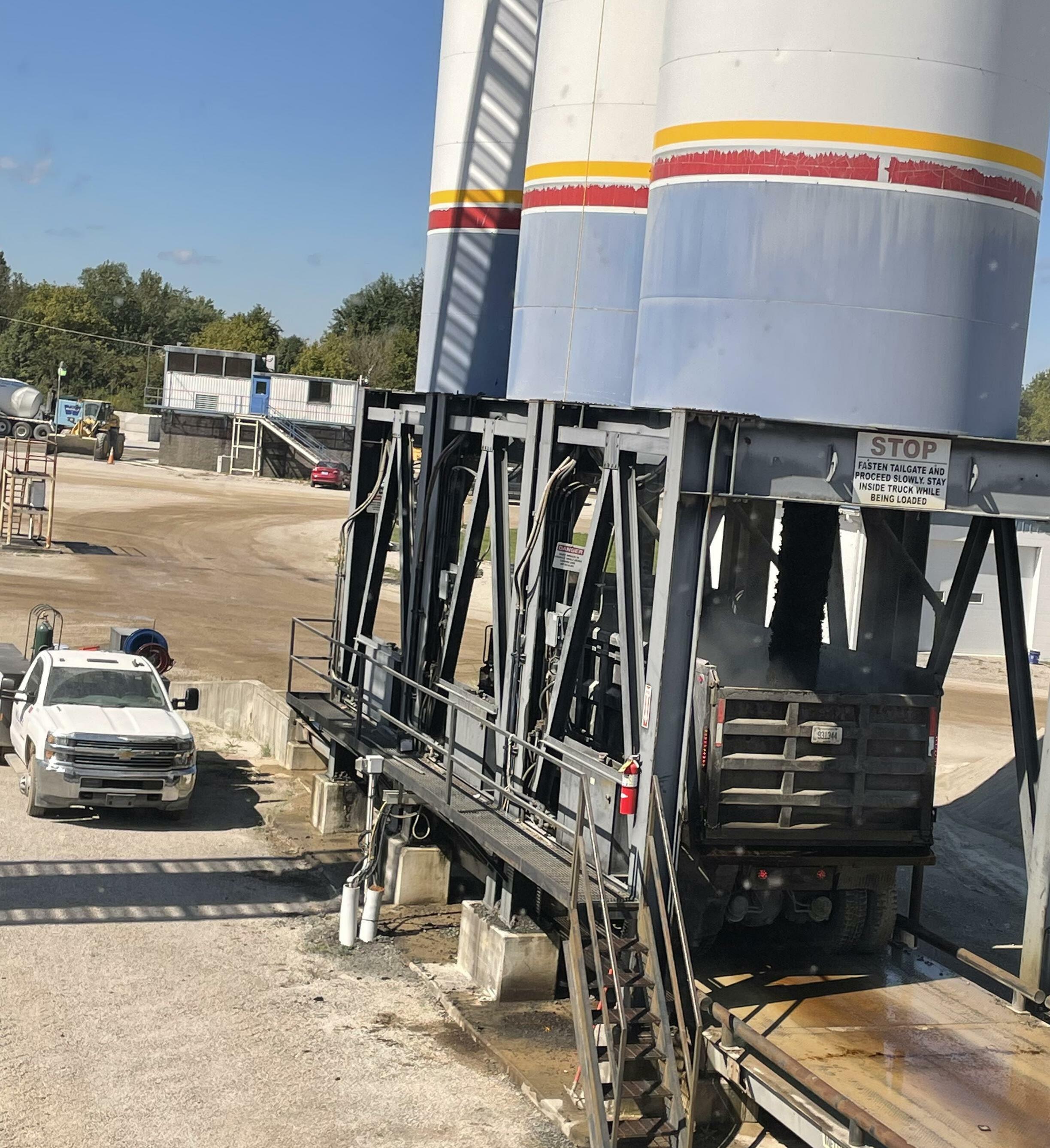
“Most of the state guys want a ticket summary every evening. Say you haul 50 loads to a state job – we just take that job num ber and then send our contact that day’s tickets via email in one PDF… It just saves everybody some trouble.”
E-ticketing also means no more keeping track of paper tickets for all parties.
36 EQUIPMENT TODAY | December 2022 ForConstructionPros.com/Equipment
TECHNOLOGY
Walker Construction
Using FleetWatcher. Walker Construction
“Our state contacts used to come to us all the time and ask for a specific ticket, sometimes weeks after the job. Now we can just go back to that date and send them over again. It’s a huge timesaver.”
While not all DOT jobs in Kentucky currently require e-ticketing, Howard sees a future where that could be a possibil ity. “There’s not a lot of jobs that require e-ticketing yet. From what I understand, the DOT jobs are probably going to require it more and more as time goes on,” Howard explained. When that eventual future comes, Walker Construction will be prepared for an easy transition.
TRACKING MORE THAN TICKETS
Walker Construction’s digital paper trail goes beyond just tick eting. The two pavers in their fleet, as well as their 14 com pany owned dump trucks, use FleetWatcher’s GPS capabilities to help increase their efficien cy across multiple fronts. The company trucks, plus their six third-party trucks, haul blacktop, asphalt, and aggregate. While they’re working, FleetWatcher allows Walker Construction employees to see in real-time where the trucks are and if there are any opportunities to move assets to other jobs.
“If it looks like trucks are bunching up at one place or the other, we may pull the truck off and send it somewhere else… If you have more than a couple trucks starting to do that, then you’ll take a look at it and see if you need to maybe send them somewhere else or if you need more trucks,” Howard said.
Eliminating trucks waiting
at the paver or at the plant, by sending those trucks to another project, allows contractors to lay more asphalt with fewer trucks.
Beyond truck location, Howard and his coworkers can also track their materials man agement from their plants.
“If it’s a decent-sized job, we’ll set it up as a shift in FleetWatcher, which shows you all the trucks that are in rota tion to and from the plant. This also shows you the tonnage moved and target tonnage,” said Howard.
This allows the team at Walker Construction to see at a glance how many materials went to what job and whether they are on track or not to finish in time.
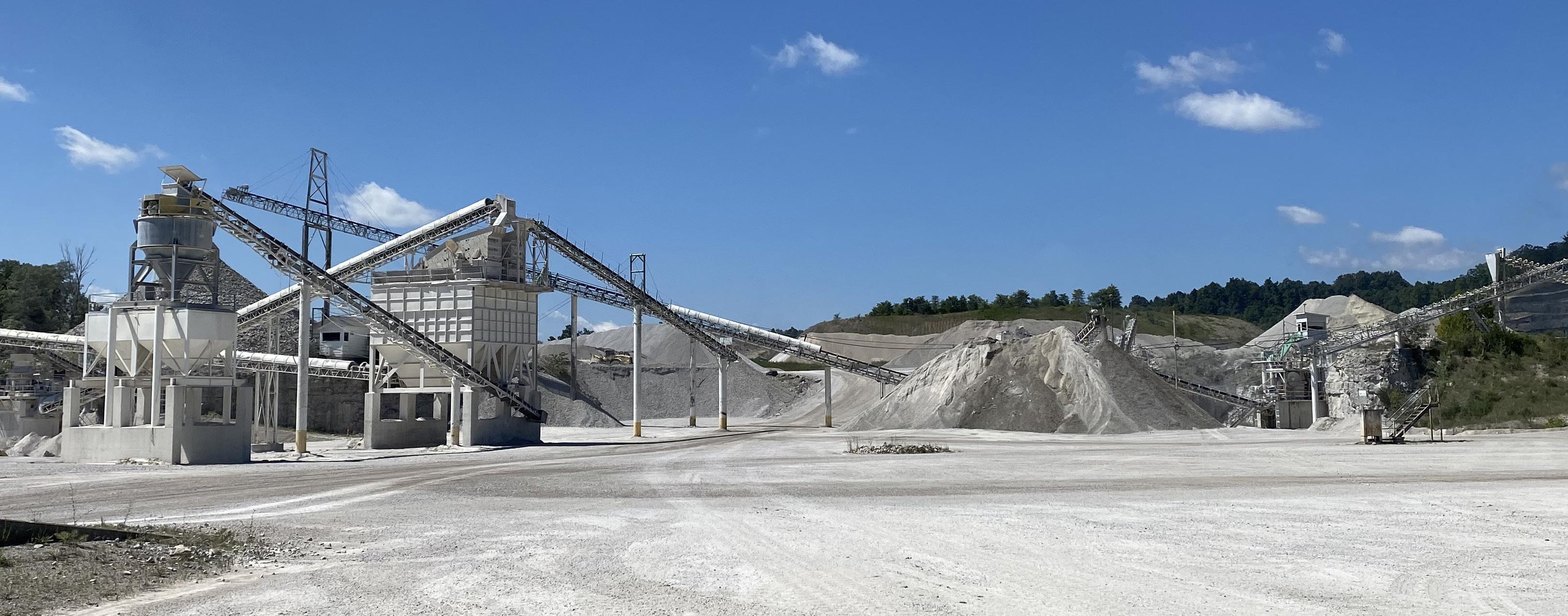
GPS tracking also helps Walker Construction man age DOT jobs after the project wraps up. If a specific job has a trouble spot, Howard and his team can reverse engineer where the pavement came from and identify where other trouble spots may appear.
“You have a GPS marker where a load was actually put on the road from a paver. …If there’s a bad spot on the road, they’ll know what batch that spot came from. It also has the temperature attached to it when it was put on the truck,” Howard said of his telematics tracking capabilities.
This breadth and depth of analytics makes Walker Construction easy to work with, and be a valued partner to the DOT in quickly addressing and solving problems if they arise.
This same GPS technolo gy also logistically helps Walker Construction manage their mate rials management. Howard has a GPS marker on a third-party
truck that exclusively hauls out of Menifee’s quarry.
“It helps the scale house per sonnel see how long it’s going to be before the truck gets back… Just gives everyone a better timeframe.”
This also works the other way around, too, as presumably it eliminates drivers from showing up and waiting for someone to accept the load - and increases sales because they can get more cycles in per shift. Relaying accurate information to the customer is always a good thing regardless!
or by truck, Feet per Minute, Cycle Time, Trucking Cost per Ton (TCpT), and more. This information empowers companies to make informed and data driven decisions to effectively manage their equipment and employees.
Easy-to-install hardware connects all equipment to an online platform that is accessible via a desktop or mobile app. The Executive Scoreboard functionality features color coding which shows at-a-glance what metrics need corrective action, as KPIs are automatically
performance over time. Users can select the KPIs to display and change them as desired.
This instant visibility into performance allows managers to add trucks, re-route them to different plants, improve cycle times, and more to streamline productivity and profitability. Accurate information and analysis can also be used to bid future projects and win more business.
Additionally, customized data reports with hundreds of filtering options can be set up to be automatically delivered at frequent intervals throughout the day to give owners and operators fleet information at their fingertips. Customized GPS technology lets users always know where equipment is located, with location reports available online and downloadable. Fleetwatcher also allows companies to track multiple data points including cycle times, productivity and down times, equipment utilization, project status, budgets, shop costs, trends and behaviors. Together this fleet level data enables paving contractors to have better asset management through greater productivity and efficiency.
HOW IT WORKS
Earthwave Technologies
Fleetwatcher software helps customers better utilize their paving and construction equipment fleet through realtime tracking and status information. Fleetwatcher’s materials management solution was developed specifically for asphalt contractors to provide timely and accurate information on key performance indicators like Tons per Hour by crew
measured against estimated benchmarks. Metrics shaded in green are meeting their targets, yellow shading indicates those to monitor, and red shading shows underperformance. Total tons loaded is automatically compared to shift times, to show users if they are ahead of schedule or behind with both a bar chart showing progress and a numerical indicator of percentage. Metrics can be graphed to quickly show
Armed with data, Kevin Howard and the Walker Construction team are saving time and resources operating today while continually preparing their business for what’s next. ET
December 2022 | EQUIPMENT TODAY 37 ForConstructionPros.com/Equipment
Read More at https://eqtoday.co/0mph3s
Evan Triggs is the vice president of Earthwave Technologies.
Why Redundancy of Connectivity is Essential on the Jobsite
We tend to think of the word redundant with negative connota tions. The dictionary defines redundant with phras es like “unnecessary repetition.” Nothing could be further from the truth when it comes to IoT connectivity. There is no amount of repetition that can be con sidered unnecessary when we’re talking about safeguards that keep your IoT connections working.
First, let me explain that IoT stands for the Internet of Things, and it encompasses every piece of technology used in commu nications and operations—the numbers of which continue to grow annually as innovative tech nologies are introduced into the construction industry. The reality is that the number of connected devices is projected to increase exponentially during this decade. Some predict the number of connected devices to increase
from 20 billion to 60 billion by 2025. IHS Markit predicts that number to increase to 125 bil lion by 2030. Without a doubt, IoT devices will touch just about every aspect of our personal and professional lives, and increas ing in use across construction sites. The technology allows us to create new connections between devices and informa tion, improve the data collection and analysis and create new solu tions from that data.

There has been an explosion in IoT adoption in the construc tion industry in recent years. Whether internal communica tions, automated processes with vendors or operational functions, our reliance on digital technol ogy has completely altered our business practices. These updat ed tools have provided us with a profound positive impact on our productivity and efficiency. That is, until the internet connection slows or goes down completely.
IoT tools provide a profound positive impact on a jobsites' productivity and efficiency. ©Rawpixel
In which case, everything can come to a complete standstill. It’s important to ensure those connections are strong and reliable, or risk the entire inter connected digital system falling apart. That’s where redundancy comes in. Redundancy means







38 EQUIPMENT TODAY | December 2022 ForConstructionPros.com/Equipment
TECHNOLOGY
– stock.adobe.com
stay connected because there is a back-up system in place that offers insurance that the internet
There are a whole lot of busi nesses in Canada that wish they this summer, when one of the largest carriers in Canada experi enced a multi-hour, system-wide outage. From residential house public transportation, the impact out the country, when their 10.8 million subscribers endured the

It was a nightmare for their business subscribers that rely on ity, which is in fact the majority of them. For many, operations or were severely hampered. It’s a wake-up call for those who are paying attention. As we contin ue to become more dependent on IoT connectivity, securing an infrastructure that helps ensure your business remains online and

action. Some might call it neces sary and they would be correct. Whether it's at the site office or in the field, maintaining consistent connectivity can be dif ficult, as cellular networks are the standard connection that con struction sites rely on for IoT devices, and cellular networks can be spotty at any given site. Working on multiple sites at one time and the issue is com pounded, as you try to find a cost effective solution that works com pany wide and removes the need to contract with multiple carriers.
Those sensors, wearables and maintenance systems you’ve invested in to keep workers and equipment safe and help ensure the entire project is run ning according to schedule can also wreak havoc on your time lines if they are slow or go offline completely. Many IoT imple mentations on the site are tied to job-site safety and having those devices go off-line could cause dangerous situations.
Any business that isn’t invest ing in their IoT infrastructure is simply tempting fate. It isn’t a question of if their connec tion will go down, it’s when and how often. Neither Wi-Fi nor
CaaS, or Connectivity-as-a-Service, is growing and expanding right alongside IoT.

cellular is fail-proof, and rely ing on a single network to keep a business online leaves a business vulnerable.
Luckily, as the IoT industry continues to grow, so do solutions for keeping your company con nected. CaaS, which stands for Connectivity as a Service, is grow ing and expanding right alongside IoT. It is no longer necessary to contract with an individual carrier at each site and cross your fin gers that the connection at each location is strong enough to carry your communications needs. It is instead possible to secure a fully redundant global IP network. This innovative solution allows business es to stay connected at all times. What is a redundant global IP network? You’re likely famil iar with SIM cards. They are the hardware that maintains a cel lular network connection and traditional SIM cards connect you to a single provider. Using a multi-carrier SIM card on the other hand, enables connected IoT devices to be managed from anywhere in the world, at any
time, and they aren’t limited to a single carrier.
These multi-carrier SIM cards can send and receive data through multiple provider net works. This means that the SIM card will toggle between carri ers when it detects a slow or lost connection. This leaves your team and the many devices they rely on connected and produc tive at all times. The ability to switch to an active connection ensures there is never down time due to a slow or lost connection.
If you’re managing multiple jobsites, you probably realize this also means that these multicarrier SIM cards will work seamlessly at all of your loca tions. No matter how many locations you’re managing, a multi-SIM card connects you to a redundant global IP network and you no longer have to con tract with multiple carriers.
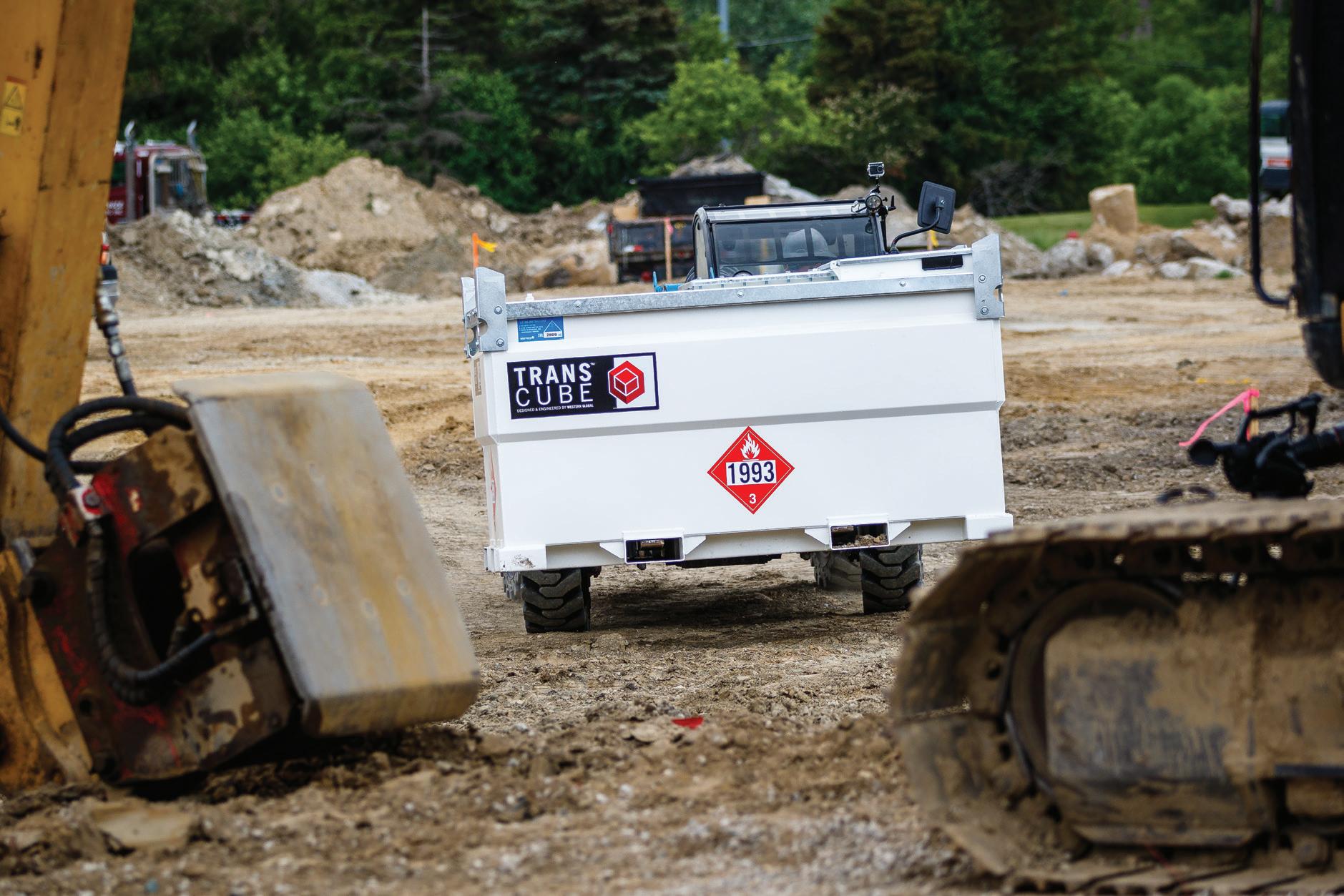
The multi-carrier SIM tech nology is more reliable and simplifies management of your business. This is the IoT
connectivity redundancy your business needs.
Don’t wait for the next outage that impacts your construction schedule or employees’ safety to implement a communications infrastructure that will safeguard your employees, your reputation, and your profits. ET
Steve Higgins is CEO of MobileWare.
Read more at: https://eqtoday.co/5ouzlp
December 2022 | EQUIPMENT TODAY 39 ForConstructionPros.com/Equipment
Syda Productions
AdobeStock_89360430
How Technology is Increasing
PRODUCTIVITY
Construction delays occur when demand grows without corresponding advances in productivity.
THE REASON FOR CONSTRUCTION DELAYS
Construction delays occur when demand grows with out corresponding advances in productivity. This is why the construction sector needs the new technologies so much.
The inability to standard ize building methods across the board makes it challenging to enhance output quickly. Each project is distinct from the oth ers, as are the jobsites. Due to technological improvements, which have sped up the plan ning and execution of projects, construction has become more accessible and efficient.
PRE-FABRICATION AND OFF-SITE CONSTRUCTION
The need for construction is expected to expand by 5.7% in 2022–23, as well as for other sectors. The building industry has had to find innovative ways to become more efficient than ever to fulfill its growing needs.

Because of emerging technol ogy and innovative solutions, construction companies can complete their tasks on time. And the advancements and dis coveries in construction have made the buildings more sub stantial and energy-efficient. Technology has propelled
building for years, improving both the sector, and society as a whole.
The development of the construction sector has been greatly aided by technology.
Construction has only improved with the development of con nected tools and equipment, autonomous heavy equipment, 3D-simulated models, and more.
Let's go back to the early days when there were no power tools or large pieces of machinery. And productivity was compromised as a whole. Look at how technol ogy in the form of accounting software, project management
software and AI has changed the construction processes and is constantly increasing the produc tion for construction companies at their sites.
ABOUT CONSTRUCTION TECHNOLOGY
The word "construction tech nology," according to the Construction Industry Institute, refers to a variety of cutting-edge equipment, software, tools, and other instruments used in the construction process to develop the industry.
˜ Using technology in construction creates the
possibility for enhanced performance within the sector.
˜ The adoption of tried-andtrue technologies, combined with predictability and reliability, can enhance productivity in the construction industry by 30% to 45%, according to studies.
˜ Crucial aspects like cost, schedule, and safety have significantly improved. Emerging technologies have had a favorable overall impact on the building sector.
Construction has created a necessity for building as swiftly and efficiently as possible over the years. By creating crucial building project components offsite so they are ready to go when the sites need them, new tech niques like prefabrication and off-site construction assist in speeding up the process.
Prefabrication is a technique that has been applied for a while. However, the building sector is entirely new to the prefabrica tion approach using 3D printing. Programming for a 3D printer specifies the precise size of the structural components you must create. The printer builds hun dreds of layers onto a platform using liquid elements, including plastic, metal and cement, to fit the pre-programmed model into the software. After cooling, these structures can be used for their intended functions.
40 EQUIPMENT TODAY | December 2022 ForConstructionPros.com/Equipment
TECHNOLOGY
©Boonchai – stock.adobe.com
AI AND ROBOTS
The construction sector increas ingly utilizes machine learning and artificial intelligence (AI) solutions. Because these digital technologies can perform specif ic duties that typically require a human worker to supervise, pro ductivity is considerably increased for sites that employ them. This enables staff members to contin ue working on other, more urgent tasks at a jobsite.
AI can also support jobsites in tracking their development. It is simple to observe how much prog ress is achieved every day by using cameras to capture each stage of the project and comparing the footage to essential elements like BIM models, 3D drawings, and building schedules. AI technol ogy can monitor performance and swiftly spot any structural mistakes you may have made in the past or may make in the future.
Using drones in the construc tion sector is very common. Drones give workers a closeup, bird's-eye view of dangerous tasks like checking bridges and towering structures while they remain on the ground safely.
Drones can take aerial pictures of the construction site even when monitoring the construction progress. Although drones have specialized uses, the data they can gather and pass on to con struction personnel are from a better and safer perspective.
Drones that are used on land can also be quite helpful. They may gather data from all over the jobsite property, utilizing features like light detection, ranging scan data and sensors.
MULTIPLE DEVICE USAGE
The digital world's modern technology helps the build ing business save time. You can keep track of almost anything through computer software and
smartphone apps, which save a ton of time when logging data and sharing progress. Everything from preconstruction manage ment to field reporting can be done online.
The ability to transmit data in real-time between project managers and jobsites keeps everything on task and sim ple for everyone to access.
Communication is substantially improved because the majority of these apps are cloud-based.
On-site workers can easily access their schedules and submit time cards for payment. Realtime transactions can also be made for information requests, vacation requests, and the deliv ery of verified documents. It also helps retain all records in a
digital file for future reference, eliminating the need for a phys ical person to copy and track everything manually.
Developers of apps and soft ware are always coming up with more efficient ways to enable the incorporation of such tech nologies into the construction sector to improve collaboration practices.
BUILDING INFORMATION MODELING
Tracking changes to the models and prints is a significant barri er that makes construction more challenging. One of the best ways for the construction sec tor to handle any changes is the development of BIM.
3D models are used in BIM, which improves design and
construction planning. With the help of BIM technology, any alterations that must be made to the design blueprints can be done and seen in real-time while also giving the structure a visual representation.
LABOR SHORTAGE
There have been many challenging moments for the construction business in terms of finding enough personnel to meet the needs of the projects that need to be finished. The industry continually has the challenge of losing people due to hardships and retirement. Even when they begin their careers, new employees frequently lack the skills and knowledge that their forerunners did and don't
know how to manage the labor shortage.
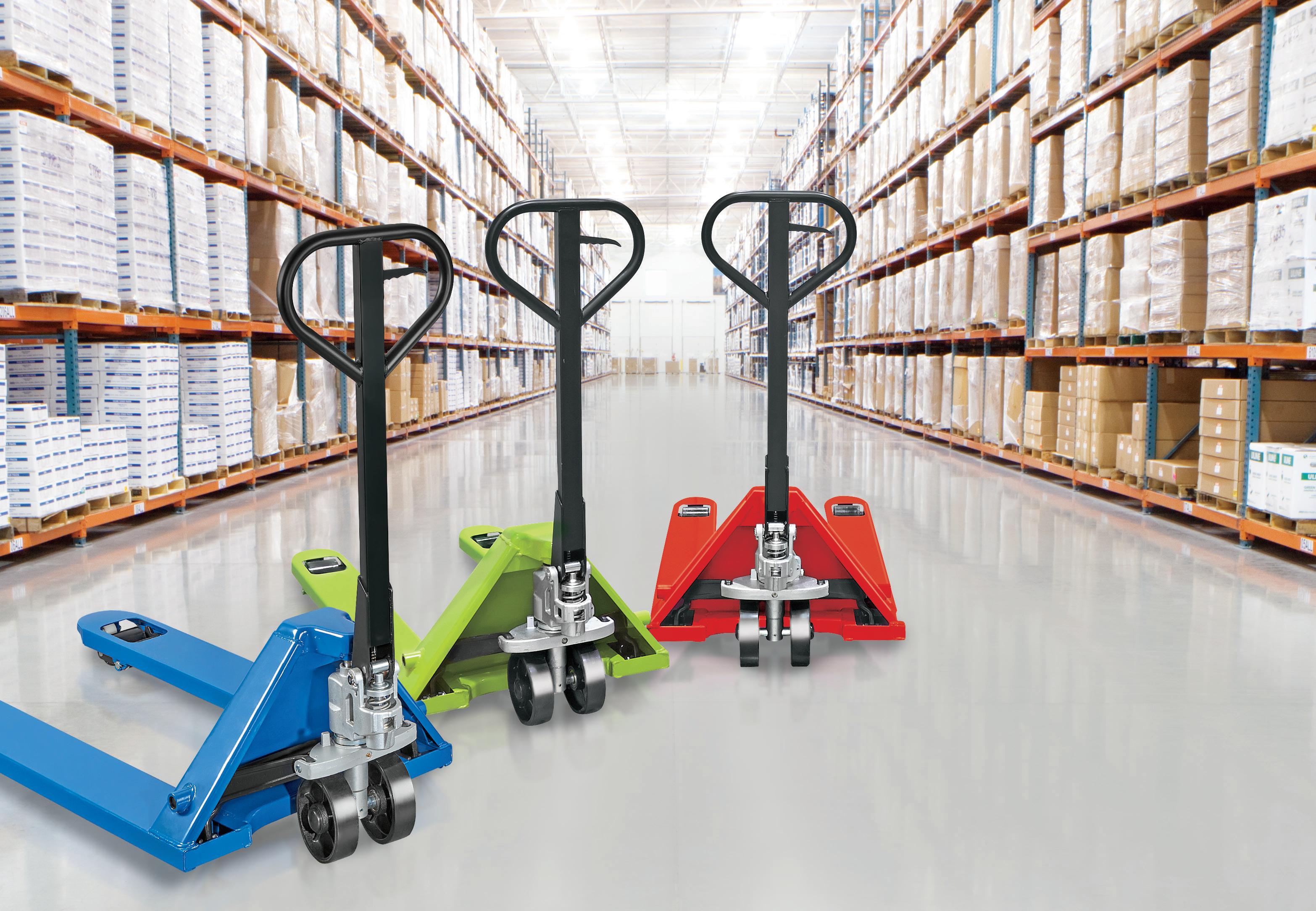

Fortunately, technology has developed enough to help in these circumstances.
Autonomous heavy machinery safely follows its pre determined path using sensors, drones, GPS, and 3D models. With these techniques, jobsite excavation and grading can be done quickly and for less money. Also, many technologies can be used to prevent workers from entering dangerous areas. ET
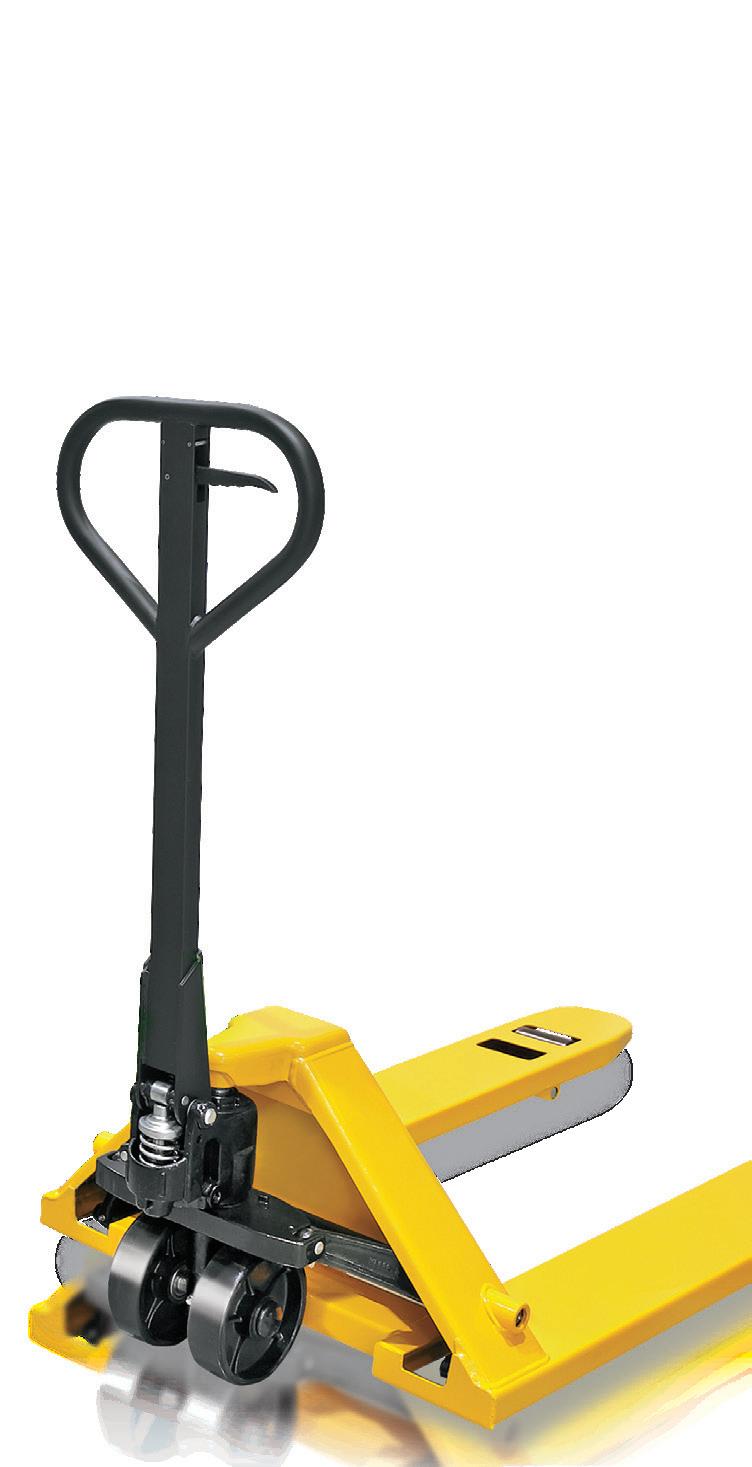
Ed Williams is the senior team lead at ProjectPro.
Read More at https://eqtoday.co/ag0s86
December 2022 | EQUIPMENT TODAY 41 ForConstructionPros.com/Equipment
OVER 40 PALLET TRUCK STYLES IN STOCK ORDER BY 6 PM FOR SAME DAY SHIPPING COMPLETE CATALOG 1-800-295-5510 uline.com π SHIPPING SUPPLY SPECIALISTS
ON JOBSITES
Unlock Hidden Data to Improve Construction Fleet Efficiency with TELEMATICS

The use of telematics in the construction industry is nothing new. The technol ogy came on to the scene about 20 years ago to enable Global Positioning Systems (GPS) tracking, which was criti cal to understanding where a construction fleet's vehicles and heavy equipment were at any given moment.
While GPS telematics was once seen as the “it” new offer ing for fleets at the turn of the 21st century, the fleet industry –specifically the construction fleet industry – has advanced in ways we previously would not have imagined. Construction compa nies of all shapes and sizes have leaned into emerging technolo gies and have seen the benefits they can bring to their bot tom line and the safety of their workforce.
Despite all the new flashy offerings, telematics remains a core component of any construc tion industry’s technology stack because of the data it can collect from vehicles and heavy equip ment. Telematics systems give fleet managers an inside look at the utilization, health, safety, and efficiency of their fleet. But many in the construction indus try are just scratching the surface of what is possible with telemat ics data.
As we continue to embrace a more digitally advanced world, now is the time to take a closer look at the lesser-known applica tions of telematics and Internet of Things (IoT) for fleets to save time, gain better insights, and drive profitability. Unified data provides insights that help fleet managers control costs, improve safety, and ramp up productiv ity, enabling businesses to get
maximum output from mini mum input.
Here are the top areas to explore for immediate advance ments with telematics:
FUEL EFFICIENCY
Fuel represents approximately 60% of a fleet’s total operating costs, and it is important to have insights and visibility on how to manage it. From a fuel efficien cy perspective, telematics can help to reduce fuel con sumption by improving driver productivity.
Specific areas of improvement such as reducing vehicle idling time, speeding, unnecessary stop and go patterns, and engine issues can be iden tified and mitigated at the root of the source.
To manage every aspect of fuel usage, organizations need to have fuel cards integrated with their telematics and fuel man agement solutions. With the right fuel management system, managers can ensure that alerts are triggered when a discrepan cy happens, as well as be able to monitor fuel spend trends over time.
SWITCH TO ELECTRIC VEHICLES
One of the key provisions in the Inflation Reduction Act that President Biden recently signed into law aims to make electric vehicles more mainstream. With this shift in focus towards more sustainable mobility, the adoption of electric vehicles
within the trucking and fleet industries will be critical for future success. Today, telematics technology currently supports electric vehicles and the fleet electrification journey through access to multiple data streams to enable critical decision making based on electric vehicle performance.
EMPOWER PREVENTIVE MAINTENANCE
Many fleet managers today are working across separate and disjointed maintenance platforms with little to no automation between failed inspections, mileage and DTC maintenance planning. Mixed fleet operations in construction are tasked with maintaining a wide variety of vehicles and heavy equipment simultaneously which can be a logistics headache as fleet managers try to stick to tight timetables and budgets. This is where the critical role of preventative maintenance comes into play, to expand the lifespan of commercial fleet vehicles.
BETTER AID EQUIPMENT RENTALS
Advanced telematics can directly help rental companies, where protecting equipment and vehicles is of the upmost importance. Through leveraging telematics, access to accurate machine data can help to determine fleet utilization to identify inefficiencies.
For example, telematics software can track habits on seatbelt usage, harsh braking, open doors, and engine diagnostics through information transmitted to the cloud through a cellular network. Within seconds, fleet analysts can then keep track of the drivers’ behaviors and the vehicle’s performance. According to a recent IntelliShift report, 90% of respondents shared that telematics platforms have allowed them to focus their time on other tasks to improve the company’s bottom line.
Because telematics systems can give you a better understanding of how your team uses your assets, you can work towards better efficiency, improved customer service, and even cost savings. This insight enables fleet managers to confidently determine whether there is sufficient range to complete the next sequence of jobs, if an alternative vehicle should be dispatched, and which charge sessions need to be prioritized for safe and productive drives.
In order to prevent small issues from snowballing, you need to keep an eye on critical vehicle functions and safety features daily. This is done through a combination of telematics data, daily inspections, and back-office tracking systems. With these tools integrated in a maintenance program, issues are caught and fixed in minutes, making telematics software an increasingly necessary component of a preventative fleet maintenance strategy. Since the device is connected to the vehicle’s computer system, it is easier to align various service checks that should be done periodically.
There is no way around it—the benefits of telematics solutions are impactful for fleet management. Companies that do not learn to embrace these advances may find themselves struggling to keep pace with more technically advanced com petitors that are on board with modernizing and optimizing their operations to fit into today’s connected IoT. By effectively embracing modern technologies like telematics in ways beyond their widely known use-cases, forward-thinking companies can stay one step ahead. ET
42 EQUIPMENT TODAY | December 2022 ForConstructionPros.com/Equipment
Read More at https://eqtoday.co/i1pb4y TECHNOLOGY
Erin Gilchrist is vice president of fleet evangelism at Intellishift.
©netsign – stock.adobe.com
©ungvar – stock.adobe.com
Presenting the 2022 Best Contractors to Work for in Construction

Solving the Workforce Challenge Starts with Great Employers

Recruiting and retaining workers in construction is paramount as the industry grapples with a 650,000 person labor shortage. There are lots of gimmicks, tips and life hacks out there promising to help construction companies attract, hire and keep workers. Successful construction companies know solving the workforce challenge starts with great employers.
To recognize those companies, the staff of Equipment Today, Asphalt Contractor, Concrete Contractor, Pavement Maintenance & Reconstruction, and their digital hub ForConstructionPros.com, hosted the Best Contractors to Work For recognition program, a research-driven analysis that examines a company’s practices, programs and benefits, and surveys its employees for their perspective.
To be considered, employers needed to register, while employees filled out surveys about what it’s like to work for their boss. Entry forms and surveys were handled by the Best Companies Group, which analyzed the data and provided an actionable insights report that companies can use to improve employee recruitment and retention.
To be eligible, construction companies must have 15 full- or part-time employees working in the U.S. The company’s primary business activity must be either general building construction, earthmoving, paving, concrete, or specialty and trades, such as underground, utility, electrical, HVAC, demolition and others.
Want to be considered for the 2023 Best Contractors to Work For?
Please contact Cathy Somers at: CSomers@ACBusinessMedia.com
A&A Paving Contractors, 19, Roselle, IL AGUA TRUCKS, 27, El Mirage, AZ Alpha Structural, Inc., 115, Sunland, CA Clune Construction, 626, Chicago, IL CSI 3000, Inc., 25, Cicero, IL Diamond Surface, Inc., 114, Rogers, MN Emerald Construction Co., 24, Richmond, VA Five-S Group, LLC., 44, Baton Rouge, LA Frampton Construction Company, 50, Ladson, SC K&L Industries, 43, Canby, OR Morrey’s Contracting, 35, Detroit, MI Redmond, 32, Chicago, IL Southwest Companies Inc, 25, Independence, OH Stronghold Engineering, Inc., 185, Perris, CA The Garrett Companies, 181, Greenwood, IN The Pavement Group Inc, 15, Wexford, PA Walsh Construction Co, 237, Portland, OR Winners include, in alphabetical order (company name, number of employees, headquarters): ★ After a few months of tallying and analysis, the results are in. Here are the 2022 Best Contractors to Work for in Construction: Please join us in congratulating these leading employers!
Little Dixie Proves Enterprise Tech Can Transform Smaller Contractors
There is a vanishing small number of very large contractors, who pur sue the most impressive and monumental infrastruc ture and industrial projects, and rely on high-flying enterprise software tools from compa nies like Oracle, SAP, Microsoft Dynamics or IFS. There are a lot more contractors like Columbia, Mo.-based Little Dixie Construction that build the infrastructure of American communities, and they rely on a cloud-based middle market con struction technology stack that has come to market over the last decade.
With 35 employees working from an advanced headquarters facility they built for themselves in 2019, equipped with light harvesting and Lutron light ing systems, Little Dixie may at a given time have crews on sites for convenience stores, multi-family, Greek living, and government projects.
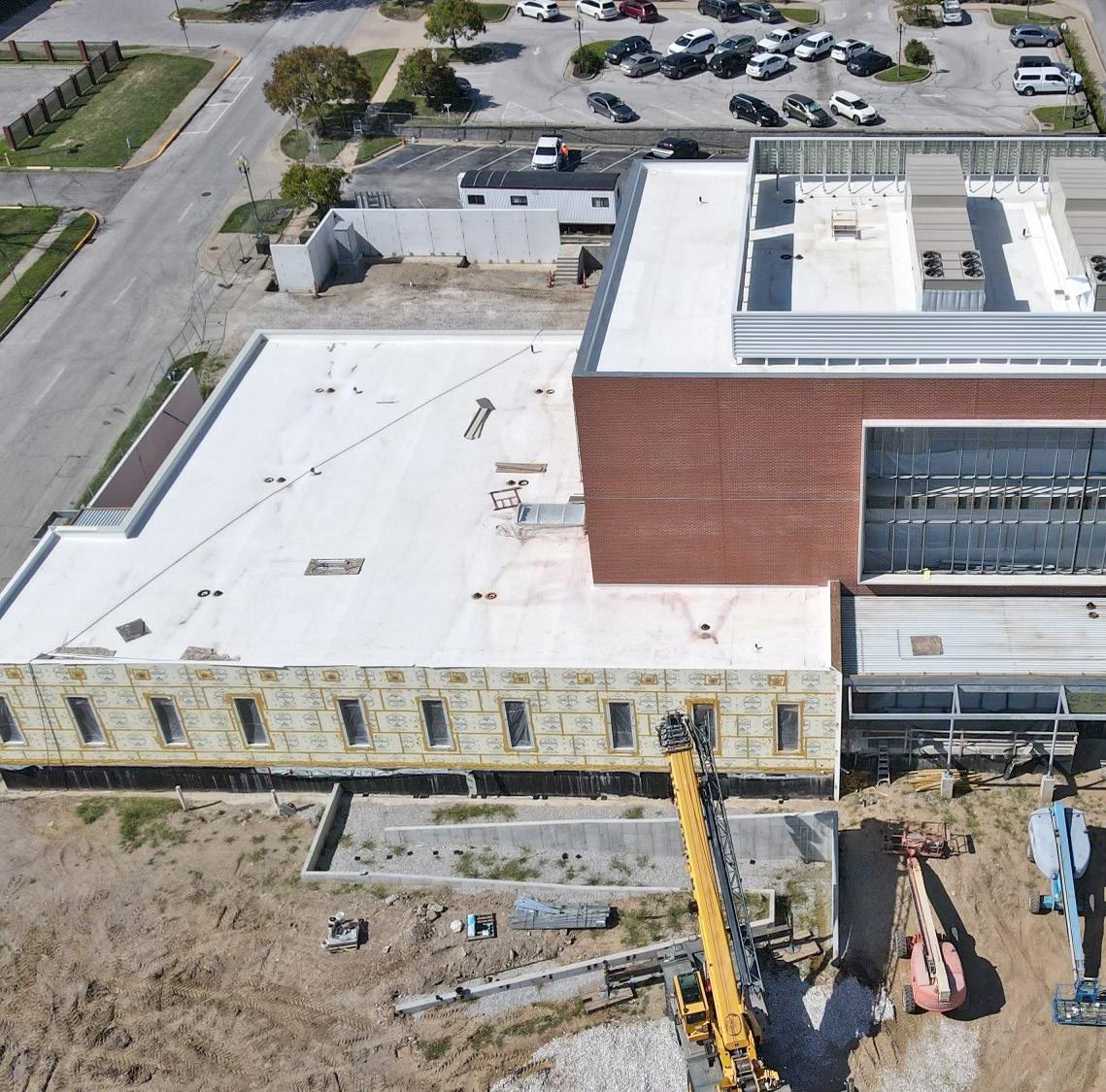
The company is not young— it was founded in 1964—but technology is enabling manage ment to actively evolve Little Dixie, making them more com petitive and helping them diversify from general contract ing services and into design/ build and more recently con struction management at risk.
“We are making invest ments that are really aimed at preventing the loser proj ects from happening,” Little Dixie Controller Kale Dempsey said. “I think we have seen that coming to fruition. All the tech nology we purchase, we evaluate from the standpoint of whether the juice is worth the squeeze. And we hope we are, using these technologies, giving our project
owners a better price and a more accurate budget. And by getting more accurate budgets and com petitive prices, we are working with more customers that would otherwise hire someone less qualified.”
INNOVATING IN THE FIELD WITH EQUIPMENTSHARE T3
A middle-market business like Little Dixie Construction has to think on its feet when the ground shifts under them—as it has been with recent supply chain constraints and disruptions which indirectly left Little Dixie without a job site camera on a number of projects.
“We were unable to get trans formers oftentimes until the project is substantially com plete,” Dempsey said. “Not having the right transformer means we don’t have power— not even temporary power—for months. So we built a solar cam era using Ecoflow technology for the batteries on it—and that is something we did just the other day.”
Little Dixie also leverages a broad spectrum of technology for construction equipment fleet management, including EquipmentShare’s T3 operations application. Launched in 2021, T3 is billed as an operating system for construction, and expands EquipmentShare’s remit beyond equipment management of rental and owned equipment to broader management of assets, people and materials in a construction setting. The application ingests equipment telematics data, data from its own timecard application, mobile expense capture and inventory modules. Apps in the T3 suite include:
Fleet—OEM-agnostic telematics
Time Tracking—Schedule management, labor timecard capture, work order manage ment and more
E-Logs—Electronic Logging Device compliance with digi tal reporting
Analytics—Customizable reports on utilization, job cost and more
Work Orders—For equip ment maintenance
CRM—Track vendors and customers
Learn More in Our IronPros EquipmentShare T3 Product Deep Dive
“We have our own fleet of skid steers, lifts, and on bigger jobs we have a telehandler on site, scissor lifts, generators, trailers—we do a bit of our own concrete so we have some excavators,” Dempsey said. “We have an abnormally high amount of equipment for a contractor of our size because we dabble in a lot of different areas and find it necessary.”
In his role as control ler, Dempsey relies on an export from T3 to evalu ate equipment utilization on a monthly basis, with this uti lization then invoiced to the project in Trimble Viewpoint’s
Spectrum product which is part of the Trimble Construction One application suite. He also democratizes T3 data by making it available to others internally.
“We use EquipmentShare asset tracking to go back and look at usage patterns,” Dempsey said. “I give supers access to their own vehicles and projects, just to see how much they are using. We want them to see how long
44 EQUIPMENT TODAY | December 2022 ForConstructionPros.com/Equipment
˜
˜
˜
˜
˜
˜
PROFIT MATTERS | By Charles
Technology Editor
Rathmann,
Little
Construction
Callaway County Justice Center under construction by Little Dixie Construction in Fulton, Mo.
Dixie
they spent on tasks or jobs, and they can do this based on their vehicle movements.”
T3 is a rapidly develop ing product, and Dempsey sees potential for where EquipmentShare’s research and development efforts are headed.
“There is room for growth there,” Dempsey said. “I am excited for some of the things T3 has on the horizon. We are very excited about a product they are working on called Rapid Rent. They leave equipment on a job site and all of our subs have their own account, and we have an account, and you put your code into their keypad and their
system auto-bills whoever is using the equipment. Right now, Rapid Rent uses EquipmentShare’s equipment but in the future, it could use our equipment. So, if a subcontractor needs to use our telehandler for a couple days to stock drywall, they can access it with the keypad and then


EquipmentShare sends them a bill and reimburses us as the asset owners. They are beta testing this with their own equipment. The next phase would be using the system on our equipment on a job site—renting our equipment to our subcontractors to help our equipment pay for itself.”
CONSTRUCTION ERP IN TRANSITION
EquipmentShare T3 integrates with Little Dixie’s instance of Viewpoint Spectrum—which Little Dixie selected shortly after the 2017 acquisition of Dexter + Chaney by Viewpoint and rebadging as Spectrum
but before the 2018 Trimble acquisition of Viewpoint. The company had been running on QBCI’s StarProject and Star Builder products, which were going out of support. The vendor was only making annual tax updates to these
Hard To The Core Brandt pipelayers are setting a new standard in one of the most demanding industries on Earth. Yours.

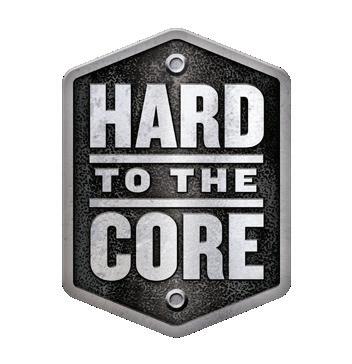

Superior Stability
A low center of gravity delivers the most stable sideboom on the market for all slopes and pitches.
Ultimate Safety
SAY HELLO TO THE TOUGHEST, SAFEST, AND MOST STABLE PIPELAYERS ON EARTH.

The Brandt SmartLiftTM system provides real-time stability data for maximum machine performance.
Lower Costs
John Deere’s exclusive ECO Mode regulates engine RPM to burn up to 20% less fuel.
December 2022 | EQUIPMENT TODAY 45 ForConstructionPros.com/Equipment
See More Here
are on-premise applications that had no mobile accessibility or interface.
“Little Dixie bought Viewpoint Spectrum it in December of 2017, and I was hired in January of 2018,” Dempsey said. “I was hired to get the back end of Procore up and running and roll out Spectrum. Before I had the first meeting with Spectrum, they had sold to Trimble. What this did was it showed us that what we had bought, Spectrum, was valuable or at least contained valuable aspects. I see the writing on the wall that eventually Viewpoint and Spectrum will be part of one Trimble main product, but I see Trimble’s technology as a definite advantage moving forward.”
Little Dixie’s instance of Viewpoint Spectrum integrates with Procore, which it had previously adopted as its project management platform. The integration did not come all at once, but rather started with the cost code and cost type fields. Later, vendors, jobs, budgets, change orders and job costs became part of either unidirectional or bidirectional integrations.
“Jobs are shared in the integration, vendors, subcontracts, change orders,” Dempsey said, suggesting they may be
considered power users of Procore not only on the basis of their ERP integration but the breadth of their Procore estate. “We have gotten remarks from Procore that we use an abnormally high number of their features.”
Apart from the Spectrum integra tion, Little Dixie uses Procore’s daily log, photos tool, and the bidding tool— has automated the bid letting process, enabling Little Dixie to let subcontractor bids at scale.

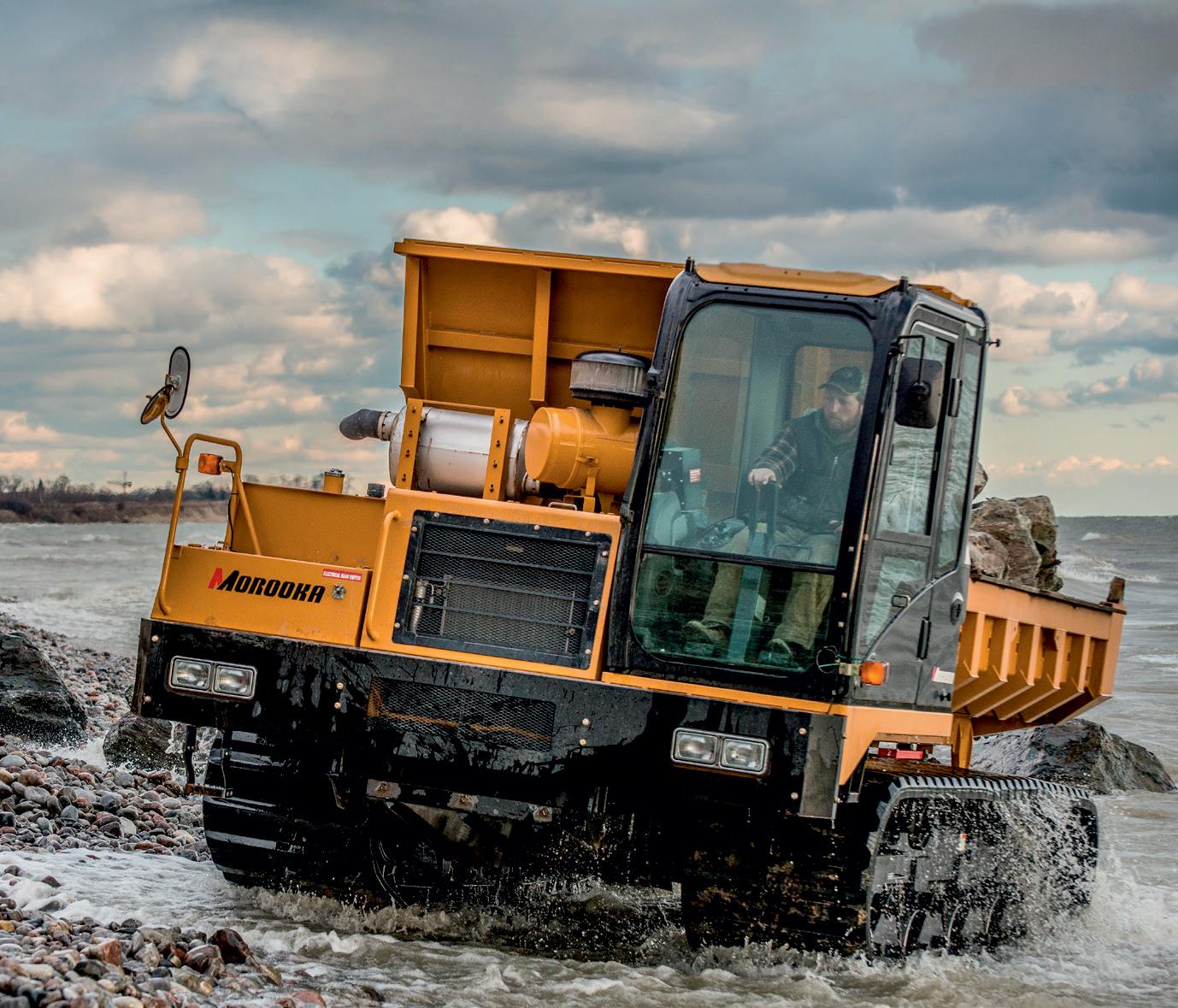
“We just sent out one bid request out to 1,100 contractors,” Dempsey said. “It is letting us get more numbers, so we can get the best numbers available.”
Little Dixie also makes heavy use of Procore’s Documents tool, along with Procore odrive, which the contractor uses as a replacement for a beta product Procore phased out.
“We used a product that Procore was beta testing and then sunsetted—Procore Drive—that made Procore operate from a folder in Microsoft Office,” Dempsey said. “It went from something we were trying to something we could not live without. The replacement, odrive, helps us file things quickly and get things to the right place.”
46 EQUIPMENT TODAY | December 2022 ForConstructionPros.com/Equipment
WE KEEP ON TRACK AMERICA Call: 800-365-7260 Visit: morookacarriers.com PROFIT MATTERS
SOFTWARE FOR CONSTRUCTION MANAGEMENT AT RISK
Adopting Trimble Viewpoint Spectrum has given Little Dixie a platform for construc tion management at risk.
“In the past three years, right when COVID was getting ready to hit, we start ed getting into construction management at risk (CMAR),” Dempsey said. “We had been a general before that. CMAR has been a trend locally here in Central Missouri and probably nationally. In Missouri and Central Mississippi, customers are using this as a way to select the most qualified contractor and at the same time have con trol over their costs while eliminating risk associated with hiring a general contractor.”
Read the IronPros Product Deep Dive on Trimble Viewpoint/Trimble Construction One

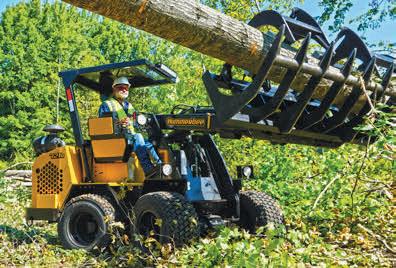

The requirement to deliver a project within a maximum allowable price often requires contractors to refine their proj ect accounting methods before adopting CMAR.

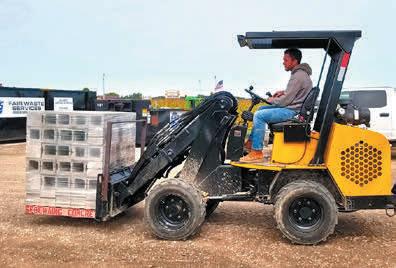
“I don’t know it required us to make changes in those things—it was probably the reverse,” Dempsey said. “We’d made some changes years ago that made that switch rather seamless. We had changed our
accounting software and added Procore … so the changes we made after moving into CMAR are much smaller than that. We had also put laptops in more supers’ hands and mobile TV conference rooms in the job trailers.”
Between Spectrum and Procore, Dempsey said the company feels wellequipped for CMAR transparency requirements to document and share proj ect cost, with Spectrum’s vast library of standard reports and the open nature of the Procore platform.
“Procore is making projects much more transparent to owners,” Dempsey said. “It used to be pictures were saved on our serv er, but now we are able to get customers access to our Procore so they can see photos and daily logs. We have had jobsite cam eras for quite some time, and have recently invested in TrueLook cameras—and will be buying more at the end of the year. We are now able to give customers time lapse project videos, which our customers can then access right in Procore thanks to the TrueLook integration.”
This footage can also be used when eval uating vendor pay applications because Little Dixie personnel can go back and view the first day of the month.

“We use these cameras three ways,” Dempsey said. “We use them for marketing to let people see what is happening. We posted our first timelapse video of a demolition of a project and it was very well-trafficked. We use them for safety to be able to see who is on site, what they are doing and to document safety hazards that need to be remediated. But just confirming that our subcontractors have the required people on site is important Manpower is the number one issue we and our subcontractors face. Making sure the manpower is there as promised. Otherwise, they may pull people off job site to support other projects, or not bringing full complement. And finally, we use them to support the project management function to determine what progress has been completed.”
TRACKING PEOPLE A CHALLENGE
While Little Dixie relies on T3 for equipment tracking, they are yet to stan dardize on a timeclock application for their employees.
“Checking in and out is hard for us,” Dempsey said. “We were using EquipmentShare for e-logs and time keeping, and we looked at some products with geofences. But the problem we had is that if you leave the job site, you are automatically clocked out. It could be that worker is going to Home Depot or an architect’s meeting. We don’t want to make them clock out under those
circumstances. We are pushing for some type of push notification where a worker gets a pop up that says ‘you left a job site, do you want to clock out?’ We are not seeing that yet at an affordable price.”
One more reason Little Dixie will be look ing for a time clock for a while is the dynamic size of a crew on site.
“A lot of software is based on crews,” Dempsey said. “Sometimes our crew is one, sometimes crew is one in the morning and in the afternoon there will be four to five and a super on site.”
Even for prevailing wage projects with their heavy documentation requirements, time sheets at Little Dixie are currently paper-based and manually entered into Spectrum.
Read more at: https://eqtoday.co/sfk0az
FEATURE December 2022 | EQUIPMENT TODAY 47 ForConstructionPros.com/Equipment
(800) 943-8677 hummerbee.com | info@hummerbee.com 200 Quicksilver Lane | Edmore, MI | 48829 Built for Work. MADE IN HUMMERBEE 774R: THE PERFECT SKID STEER REPLACEMENT! Better Visibility Further Reach Easier Entry & Exit Intuitive Controls Articulated Steering Easier to Maneuver Minimal Turf Disturbance Faster Top Speed: 14 MPH On-the-fly Shifting Lower Cost of Ownership COMPATIBLE WITH STANDARD SKID STEER LOADER ATTACHMENTS! POUND FOR POUND Better than a Skid Steer! Expanded Phi Kappa Psi residential structure at the University of Missouri in Columbia, Mo. Little Dixie Construction
Right now, Rapid Rent uses EquipmentShare’s equipment but in the future, it could use our equipment.
—Kale Dempsey, controller, Little Dixie Construction
Prepare For NEXT YEAR
take steps to either improve the output and/or reduce the input. And once you start measuring performance in the field, you will find that field management will not want to produce productivity results below the expected goal. You know what they say-investigate and then verify.
A straightforward way to start this process is to measure revenues/full-time equivalent employees (FTE) and gross profits/FTE employees. You can do this for a year, a quarter or a month. One way that is most informative is to use a trailing 12-month cycle (every month end you add that month’s activity to the data and subtract that same month from the previous year), which provides a running trend analysis to help you spot a problem before it gets out of hand. If you wait until the end of the year to find out if you have a problem, you will very soon realize you would have been better off if you knew about it eight months previously.
metrics. Try YouTube as well, because I am sure there are some materials that would be beneficial and get you started on the right path. The McKinsey consulting firm also has construction-related data.
In the old days, the consultant would come into your company and just watch people movement, equipment movement and office practices. Sounds simple, but it worked. In an equipment dealer where I was doing an audit, I saw this person sitting in the middle of the shop with a notepad and cup of coffee looking around and making notes. What he found was how many billable hours were being lost because the techs had to leave their bay to get parts or ask questions about the work order. The bottom line was that the current techs could be producing more billable hours if they did not have to leave their workstation for some other tasks. And there you have it: an improvement in productivity.
Over the past couple of months, we have dis cussed productivity, especially how larger con struction companies are making concentrated efforts to improve productivity and spending levels.
A couple of real-world examples I have seen had results in the 50-60% range. Can you imagine that? A 50% improvement on what you have been consistently doing in the past. Must be fun preparing bids for this operation.
But no matter what size your company is, you have to assume competitors are looking for ways to improve productivity and leaving you in the dust, if and when you both bid on the same contract.
The way I see it is, every
process, every payroll dollar and all expense categories have to be reviewed to determine how the spend compares to your past practices, current practices and projected practices. On the revenue side, you find ways to bill more in a given time period.

I know this must sound like a monumental task, and in some ways, it will be, but doing so is a must because your industry as a whole is changing, forcing everyone to do more with less. You either become more produc tive or you lose work, and even, potentially, the company you worked so hard to build.

The definition of productivity:
PRODUCTIVITY = TOTAL OUTPUT / TOTAL INPUT
In other words, how much are you getting back for every dollar you spend? This is a simple enough formula that you can apply to your company, a job, a portion of job, laborers, internal departments, personnel and any process used in your company. The task involved in such a process has to start at the top and work its way down. You decide what you want to measure and then calculate or have someone provide the output/input numbers and see how they come out. Then you check it again, and again until you are satisfied that your metrics are valid, and once you reach this goal, you can
These calculations can be prepared using dollars, time, tasks completed or any combination thereof. How long it takes to complete a measured task (how much time to paint so many square feet of wall).
The major annual calculation regarding total revenue earned for the year/number of full-time equivalent employees is a good start. If you have a lot of parttime workers, you add up their hours and divide by 2080 (total hours for 40 hours/week job) to determine how many full-time people those hours represent. Then, take $5 million total revenue and divide by 15 fulltime employees, which gives you $333,333 earned per full-time person. If next year drops to $275,000 per person, it is time to investigate why and take steps to correct the problem.
There are numerous sources out there that address these
I saw this same consultant determine that a tech went through 118 movements to change the oil in a piece of construction equipment. He even taped it because it was hard to believe the 118 movements actually took place. Well, guess what? They did.
Not only can you adjust your internal procedures, but you will also find that vendors, new equipment models and digitalization will add to your output. I like to go to the equipment shows to see what they have come up with this year.
Productivity improvement should be high on your to-do list. You will have to make strides in this area, whether you like it or not. ET
Read more at: https://eqtoday.co/b55h3m
ForConstructionPros.com/Equipment 48 EQUIPMENT TODAY | December 2022
RUNNING THE BUSINESS
@fizkes - stock.adobe.com
Focusing on increasing productivity can help with billable hours expenses.
Garry Bartecki is the managing member of GB Financial Services LLP and a consultant to the Independent Equipment Dealers Association.
Does SIMULATION TRAINING
Translate to Real-World Results?
The integration of personal computers into the normalcy of daily work and life is so ubiquitously intertwined, we hardly notice or pay much attention to it. It is everywhere. Smart technology is in every corner of our homes, our cars and even our jobsites. While this can be a shock and a challenge at times, as some struggle to adapt to these digital changes, ultimately the benefits outweigh the growing pains. This is especially relevant now.
Worker shortages are some thing every industry is currently facing, and this is an even more critical problem where the knowhow for the job traditionally required hundreds of hours of hands-on experience. In the past, perhaps, a new employee would start on a construction-style job as a general laborer, and slowly work their way up over a num ber of years, operating more complex machines and complet ing more precise tasks. It took a long time to develop experience.
That kind of process was gradual and allowed employers and production managers to test and select candidates at a rela tively slow pace. It allowed job seekers time to size up the work expected of them in those roles and decide if continuing on that path was right for them. As an example, some crane operators had to log 400 hours of expe rience before being considered fully certified. This is no longer a viable option in the post-pan demic reality.
An increasingly large gap has emerged between the previous
paradigm and the one faced today by companies eager and, in some places, desperate for people who can do the job both safely and skillfully. If you're going to stay competitive, not only in the terms of labor but also in terms of overall busi ness success, you must adopt a new approach. Thankfully, there are a host of new solutions for employers to radically and safe ly change the way new hires are trained, properly tested, and made real-world ready.
WHY IS THIS HAPPENING?
According to the Schwartz Center for Economic Policy Analysis, older adults (aged 55 and up) left the labor force and stopped look ing for new work in record numbers since the start of the COVID-19 pandemic in March of 2020. The American Association of Retired Persons reports that more than 2 million workers were forced into early retirement due to either health or econom ic reasons, or in many cases, a combination of both.
A whole generation's worth of technical skill and know-how has disappeared from the labor force much more rapidly than normal. Skilled laborers, heavy machine operators, and the vary ing array of support workers that make infrastructure jobs like asphalt paving and road build ing functional aren't there to
do the jobs anymore, and they aren't there in as great of num bers to pass on the knowledge they have.
Last year, an analysis by the Nation League of Cities (NLC) reported that three out of every 10 open infrastructure jobs (those related to design, construction, or maintenance) were more difficult to fill, com pared to other industries. NLC
challenges for the infrastruc ture industry. Moreover, many workers do not have access to the skills training and devel opment programs necessary to build experience for higher-level positions, limiting career path ways to higher and more stable employment and pay,” stated an NLC press release.
Through the combination of these issues, a clear picture of the problems faced by busi nesses emerges. Large losses of established labor. A void in personnel qualified to train others on the job.
Difficulties finding and placing new workers in avail able employment opportuni ties. CM Labs, a software and simulations development company, offers answers to employers’ challenges with cus tomizable solutions for infrastructure-based companies, backed up with measurable results.
she said, "lots of patents and research, academic research that was invested in developing the secret sauce, shall we say, in our systems."
The "secret sauce" she refers to is the company's proprietary software and physics engine that makes the simulations possible. It's the unique code that sets the "rules" for the simulation’s grav ity, space, lighting, and more. They call the engine "Vortex" and it is the essential component to the success of their training modules. This, along with a col laboration with Trimble GPS Earthworks™ integration, means high fidelity, realistic earth-mov ing physics, and accurate spatial immersion.
Fairchild continued, "Objects are simulated in a realistic manner. When you sit in the simulators, they react in a way that would reflect what would happen in real life. That's real ly important, because if you're going to train on a piece of equipment that doesn't reflect what happens in the real world, you're setting yourself up for some surprises, both efficiency wise and safety wise."
determined while 19 days was estimated as the median time between job posting and hiring a candidate, in the case of infra structure, it was taking 23 days 30% of the time.
“Labor shortages, misalign ment between workforce systems and industry needs, a large wave of retirements, and lack of edu cation about careers in the trades create significant employment
ENTER THE SIMULATION
Originally founded as Lateral Logic in 1994, then CM Labs in 2001, the company was focused on ground vehicle simulations.

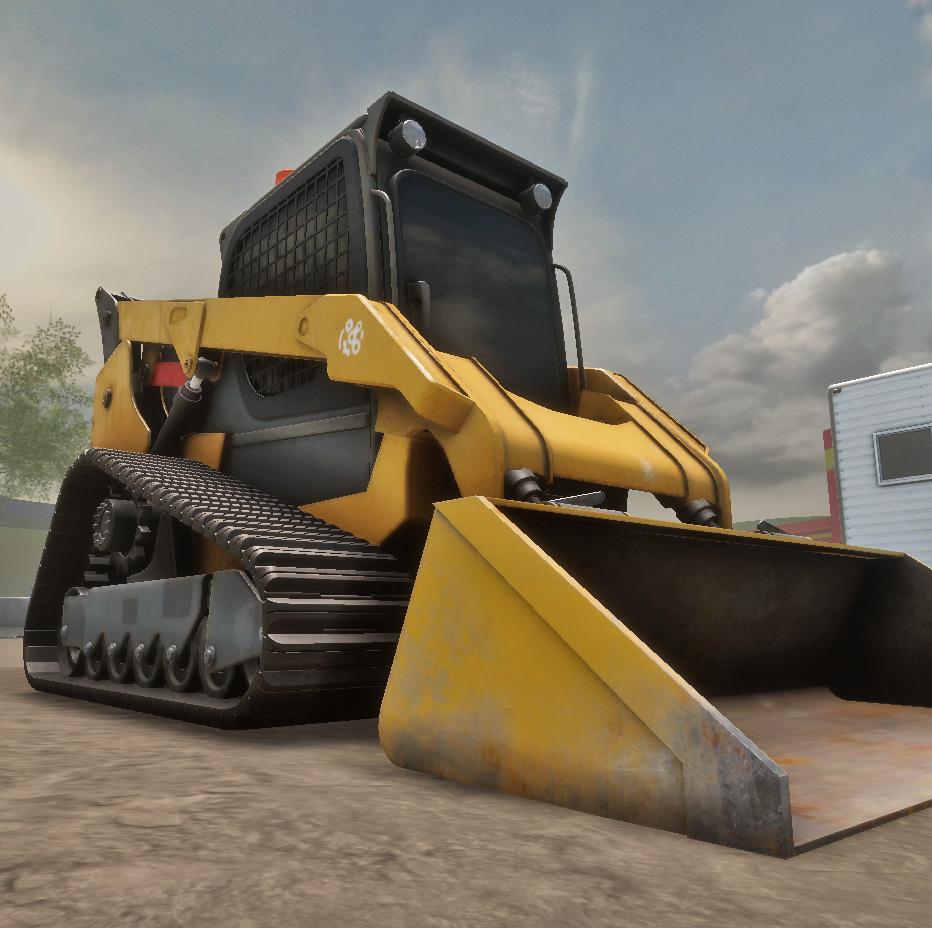
Christa Fairchild, product mar keting manager for CM Labs insists that, despite the outer appearance of their machines looking very similar to an arcade video game, "it was a very aca demically founded company,"
A DANGEROUS GAME
Alan Limoges, product manager at CM Labs, added to this sen timent, explaining more about the benefits of creating custom training scenarios, "We look at vehicles that have a lot of acci dents, right. What role can simulation play to help prevent these accidents? And where is there a need in training? These are heavy pieces of equipment
December 2022 | EQUIPMENT TODAY 49 ForConstructionPros.com/Equipment
BRIDGING THE GAP | By Brandon Noel, Editor, Asphalt Contractor and Pavement Maintenance & Reconstruction
Safer, more efficient and cost effective - the ROI for simulation training shows broad benefits to both workers and employers who need skilled people on the job quickly.
uses cutting edge technology to take your business to the next level.
CM-Labs
Provided by CM-Labs
that's not the first piece of equipment a new, green opera tor would sit on. Simulation comes into play so they can get exposed to these machines early on. Then when they see them in real life, when they hop on the real machine, they have the con fidence and it's much safer."
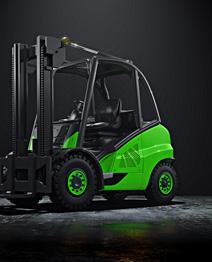
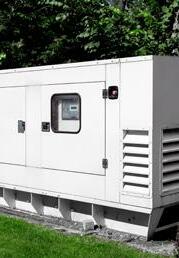

According to the Occupational Health & Safety Administration (OSHA), the construction industry suffers from one of the highest incident rates among high-risk industries. Statistics from the Department of Labor indicate that, in a sin gle year, construction workers accounted for 1,008 or 21.1% of work-related fatalities. In a sim ulation, these incidents can be better trained for and avoided, as a new or novice operator can get hands-on experience in realis tic environments and situations. Instructors can trigger weath er conditions and randomized events to test how the trainee handles them.





Using simulators is also a huge cost savings, over the long term, when you consider all the met rics previously involved with traditional training methods. If you needed to train someone on a piece of heavy machinery, you had to have access, fuel, good weather, proper insurances, avail able instructor time, and more, to factor in. All that starts to add up with you are calculating a return on investment (ROI). None of

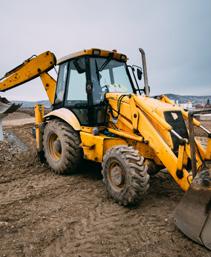
those factors play as large a role with CM Labs simulations. With a simulator, you can provide training time to your candidate. It doesn't matter what the weath er is like, you don't need to waste costly fuel, and you don't have to stage a setting for them to prac tice in. It's all self-contained.
So, the simulation addresses two of the current problems, but what about the staffing short ages? The best training in the world isn't any good if there's no one to train, right? Well, it turns out, the use of the CM Labs platforms has seen a benefit in this arena too.
READY, PLAYER ONE?
Even though CM Labs didn't set out in the video game indus try, the video game industry has now grown so ubiquitous that it is having a positive side-effect on the use of their training plat forms. That is because of the overall familiarity that people, especially younger generations, have with the hardware and software when they either are exposed to it or engage with it. It shares certain commonalities, and it has an impact.
Alan Limoges again, "With regards to recruitment and tar geting younger workers, those people are much more famil iar with interfaces like screens and joysticks, which are part of the actual equipment that's being used. They're learning very



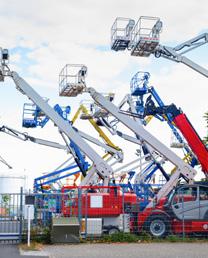









quickly, but it is also attractive to them because the simulation and the simulators are awesome just to look at. They can create the tone of what you are going to expect working for the compa ny, and can be a symbol for the recruitment process. They're also very mobile, which means you can bring them to schools and job fairs and actually get people started on them right away. It's a great way to connect with the next generation."
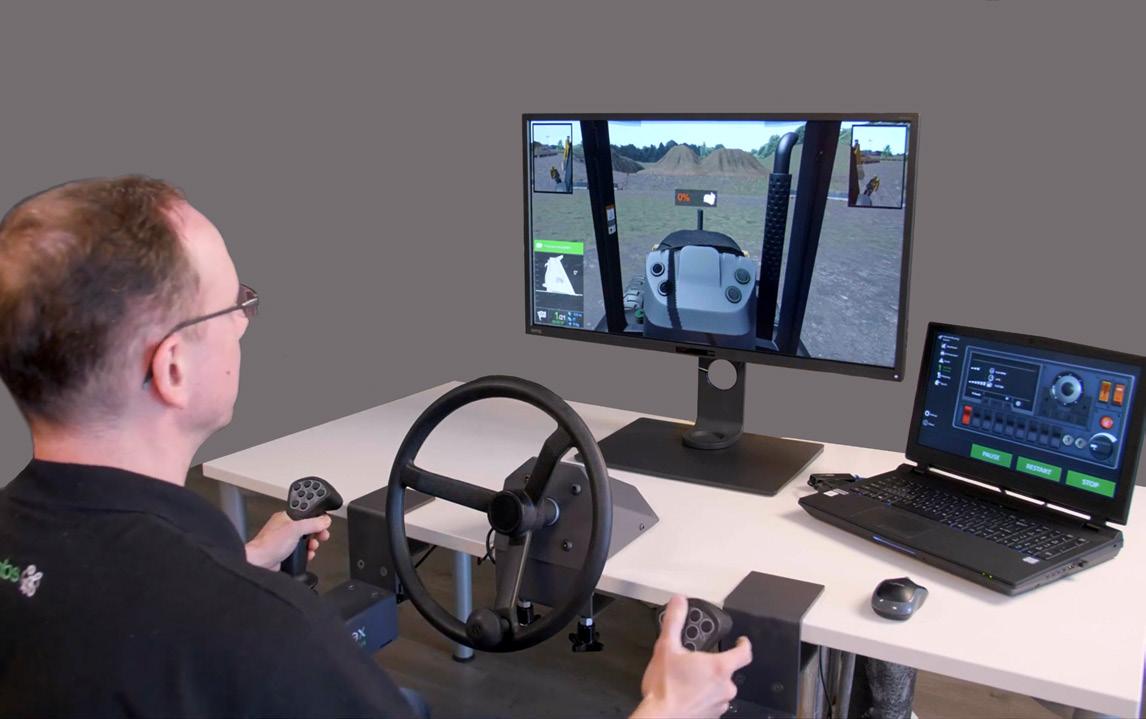
However, it isn't exclusive to young people. A demographic report on video game usage by Newzoo, a market research group for game companies, found that time spent playing video games is higher across the board. Even the Baby Boomers are getting in some screen time. Here's a break down by generational group that shows what percentage of those surveyed play any video games, and how many hours they play on average per week:
˜ 42% of Baby Boomers / 2.5 hrs


˜ 60% of Gen X / 4.5 hrs

˜ 77% of Millennials / 7 hrs
˜ 81% of Gen Z / 7.5 hrs
Even though these num bers aren't directly tied to the way employment interests will play out, it is significant to see just how invested the contem porary workforce is in spending time each week in simulated environments. No matter what demographic is your target, the CM Labs simulators have high ceilings when it comes to their training potential. ET
Read more at: https://eqtoday.co/simulators
50 EQUIPMENT TODAY | December 2022 ForConstructionPros.com/Equipment BRIDGING THE GAP
www.theinductor.com 877-688-9633 Follow Us on Social Media: Mini-Ductor The Venom HP is the highest powered Mini-Ductor handheld induction heater available at 1800 watts of power. Allows users to heat metal components faster than ever before! Manufactured with genuine OEM parts. > Calipers > Lugnuts > Rusted Bolts > Vinyl Graphics > and 100’s more! APPLICATIONS: More precise, safe and reliable than a torch. Buy and Sell Nationwide! (34) EQUIPMENT AND VEHICLE CATEGORIES! (909) 908-9663 Provided by CM-Labs

Equipment you need. Prices you’ll dig. Attachments, parts, and more. www.ebay.com/heavyequipment
Safety Powered by Productivity.
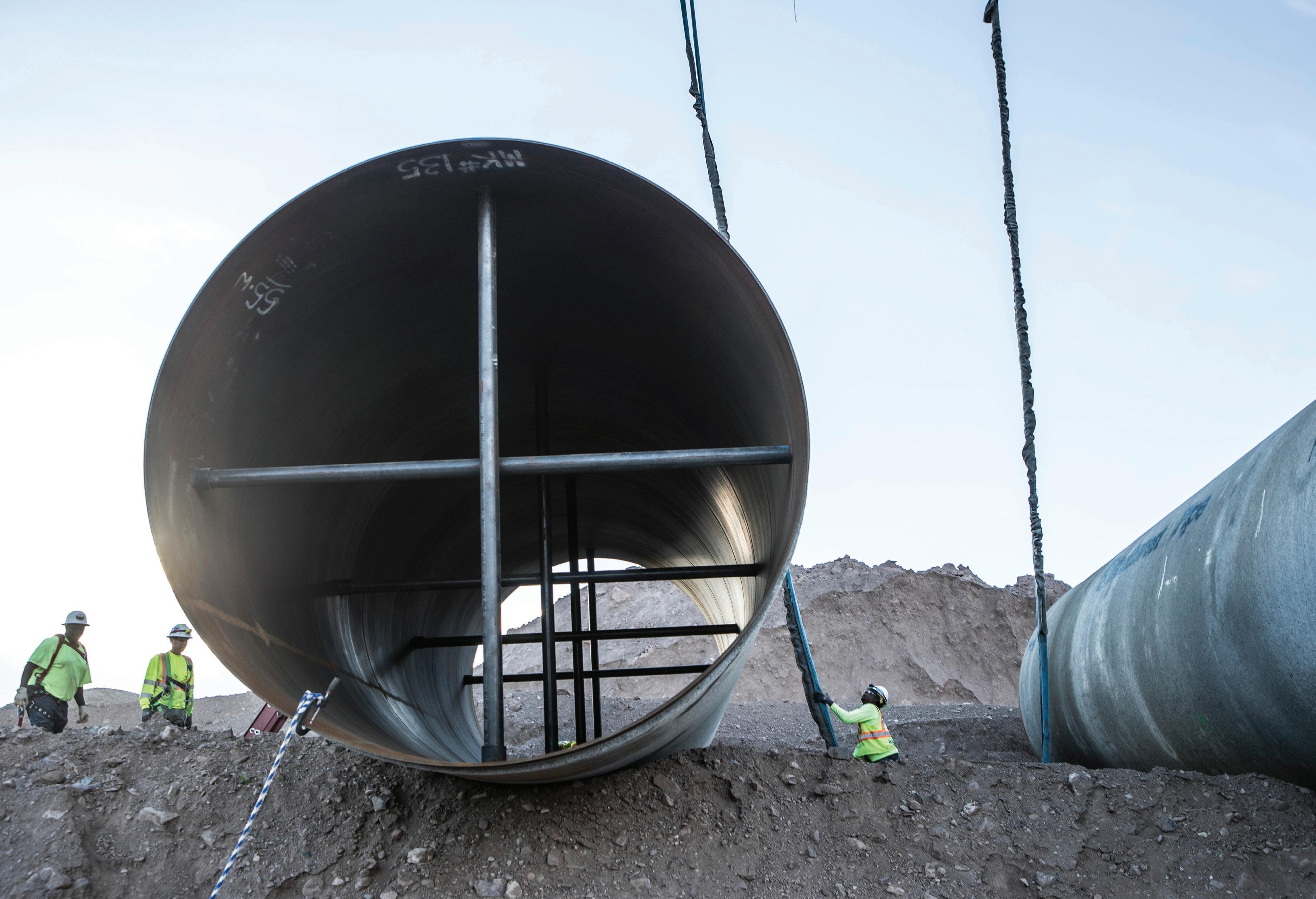
or visit UnitedRentals.com/TrenchSafety
United Rentals Trench Safety is the largest provider of underground protective systems in North America with 92 trench safety stores. Our dedicated engineering department, industry-leading safety trainers, digital solutions like Total Control® and 24/7 support can help your site stay safe without sacrificing efficiency. Call 800.UR.RENTS
© 2022 United Rentals, Inc.






































 The CASE TV620B tackles a mulching task on soft ground in a heavilywooded area.
The CASE TV620B tackles a mulching task on soft ground in a heavilywooded area.




































































































































































